Signals

December 2012 January February 2013 Number 101

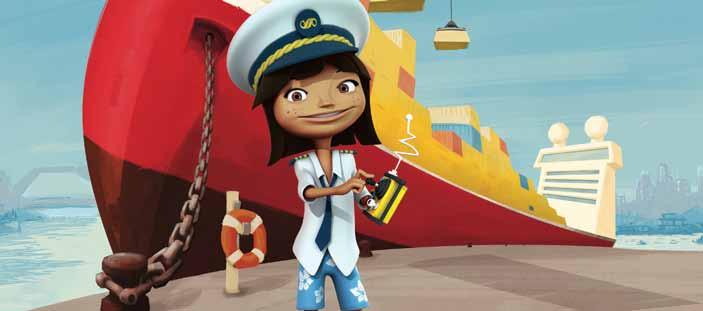
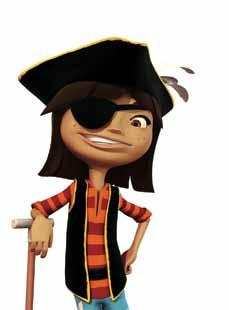



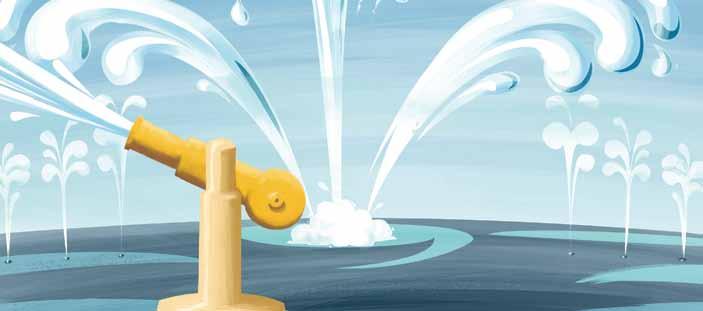
DARLING HARBOUR • anmm.gov.au/summer • 02 9298 3777 EXHIBITION BY PRINCIPAL PARTNER PROJECT PARTNER MEDIA PARTNERS Signals_mag_ad_177x260_FA.indd 1 30/11/12 4:40 PM
cover: The custom-designed double kayak called Lot 41, which in 2007–08 was the first to be paddled all the way from Australia to New Zealand, is now on display at our Wharf 7 Maritime Heritage Centre, with equipment and supplies carried on the incredible voyage. This carefully staged photograph was part of the well-managed publicity and sponsorship campaign of James Castrission and Justin Jones for their expedition, Crossing the Ditch. Photograph Justin Jones and James Castrission, reproduced with permission
Comments or questions about Signals content?
Call the editor on 02 9298 3647 or email signals@anmm.gov.au
Signals is online
Search all issues from No 1, October 1986, to the present at www.anmm.gov.au/signals
Signals magazine is printed in Australia on Impress Satin 250 gsm (Cover) and 128 gsm (Text) using vegetable-based inks on paper produced from environmentally responsible, socially beneficial and economically viable forestry sources.
Cert no SGS-COC-006189



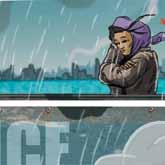
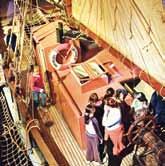
3 Bearings
From the director Kevin Sumption
4 Kayaks across the Tasman
Two kayaks in the museum’s collection tell of extraordinary human quests – one fatal
13 The siren song of classic craft
An entertaining new direction for the 2012 Classic & Wooden Boat Festival
18 Glass plate to cyberspace
The William Hall photographic collection goes online
26 Hidden treasures of a naval chapel
One of Garden Island’s RAN heritage secrets
32 100 Stories for Christmas
A handsome new collection book, both print and digital
34 Members message and summer activities
Summer events, exhibitions and attractions
42 Waves of migration
The museum’s iconic roofline becomes the canvas for a dazzling new digital lightshow
44 Indigenous watercraft – accolades and activities
Our innovative onference program inspires awards and community action
46 South Australian Maritime Museum
State-wide heritage on show in Port Adelaide
52 Tales from the Welcome Wall
As Italian as stonemasonry and grapevines
54 Collections – Our first America’s Cup
Fifty years on from that first famous first challenge
58 Readings
Exiled Aboriginal convicts; wonders of the Great Barrier Reef
62 Viewings
Citizen science online; Bungaree the voyager
64 Currents
Pamir departing; 2013 maritime history book prize; 150 years of ‘Water Rats’
December 2012 January February 2013 Number 101 Contents
Signals
4 46 26
18 42 S IGNA l S 101 DECEMBER 2012 TO FEBR u AR y 2013 1
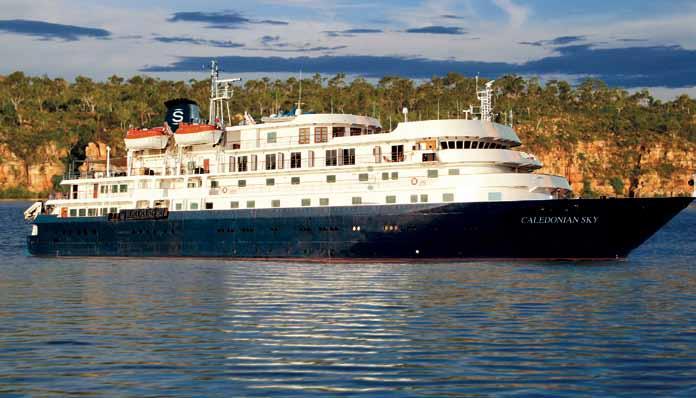
APT’S NEWEST TRAVEL ADVENTURE!
New for 2013, APT is launching a whole new way to explore the world’s seldom-seen treasures. APT’s Small Ship Expedition Cruises offer itineraries for those with a real sense of adventure, while maintaining the incredible standards for which we’re famous.
✓ The most luxurious expedition vessels –the MS Caledonian Sky and the MS Island Sky
✓ State of the art facilities resembling those of a private yacht
✓ Intimate, small group discoveries with just 55 suites
✓ Exquisite dining experiences with a touch of local flavours
✓ Included wines, beers and soft drinks with lunch and dinner
✓ Fleet of 10 Zodiac landing craft for a true exploration
✓ Onboard expedition teams with naturalists, historians & ecologists
✓ Freedom of Choice Sightseeing Inclusions throughout holiday




TO PORT
19 Days From $13,595* per person,
11 Days From $7,995* per person, twin share ASK US
TO SINGAPORE 14 Days From $9,995* per person, twin share
TO
LuxuryEXPEDITION CRUISES *Conditions apply. Prices are per person twin share. Prices are correct as at 8 November 2012 and are subject to change with the release of the ‘Luxury Small Ship Expedition Cruising’ brochure. Prices may also fluctuate due to changes in surcharges, fees, or taxes. Ask about earlybird offers. A non-refundable deposit of $3,000 per person is due within 7 days, and final payment is due 90 days prior to departure. Australian Pacific Touring Pty Ltd ABN 44 004 684 619 Lic. No. 30112 MKT11021 CALL 1300 514 603 or see your travel agent www.aptouring.com.au
INDONESIA AUSTRALIA PAPUA NEW GUINEA Broome Lacepede Islands Montgomery Reef Horizontal Falls Prince Frederick Harbour Winyalken Bay Purnululu Argyle Wyndham King George River Singapore Ende Bali Sumbaya Island Banjarmarsin Kumai Belitung Islands Sekupang Dili Darwin Rinca Island Port Moresby Jakarta Kokoda Cirebon Semerang Probolinggo Moyo Maumere Banda Neira Kokas Palau Biak Jayapura Wewak Madang Sepik River JAKARTA
MORESBY
twin share DARWIN
DARWIN
BROOME
OUR EARLYBIRD OFFERS
YOUR FREE BROCHURE TODAY S IGNA l S 101 DECEMBER 2012 TO FEBR u AR y 2013 2
ABOUT
ORDER
Kevin Sumption Bearings
Digital distribution of our rich resources
In October we marked the start of a new chapter at the museum with the launch of our magnificent new publication 100 Stories from the Australian National Maritime Museum. While we were delighted to see the lavish new hard-copy edition fresh from the printing press, we were even more excited to be announcing its release as an eBook through Apple’s iBookstore – the very first eBook the museum has ever produced, and for us a real harbinger of the future. Importantly, the eBook version of 100 Stories can be downloaded free to iPads, making our historical material available to everyone, and in particular to students. You can read more about the content of 100 Stories on page 32.
For many years I’ve had a deep professional interest in developments in digital publishing and its technologies. Opening our collection to the community through technology is one of the cornerstones of the museum’s plan for the future. The challenge for museums today is how to use the latest developments in communications to tell our stories better and to a broader range of people… while competing with the many new digital tools and entertainment options available.
The 100 Stories book is just one way this museum is reaching out to audiences beyond our onsite visitors, providing greater access to the collection as a rich resource for the community. To coincide with the launch of 100 Stories, we released 4,000 new items on our online digital collection database – bringing the total number of artefacts freely available to the community to well over 22,000 items. We also unveiled a new collaborativelearning touch-table interactive in the Navigators exhibition, which allows visitors to explore a newly digitised archive of atlases, ship logs, journals, maps and engravings covering centuries of exploration and discovery.
Joining us to officially launch these initiatives was the Federal Minister with responsibility for our national museums and cultural organisations, the Honourable Simon Crean, Minister for the Arts and Minister for Regional Australia, Regional Development and
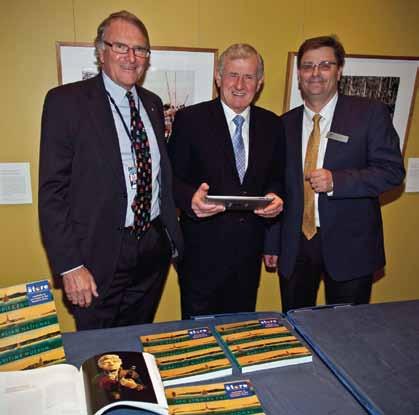
Local Government. With him were representatives of our publishing partner, New South Publishing (UNSW Press), CEO Kathy Bail and publisher Elspeth Menzies.
The museum’s outstanding national conference ‘Nawi – exploring Australia’s Indigenous watercraft’, held here in May this year and featured extensively in the last number of Signals, has been recognised by two important awards. The conference was the winner of The Museums and Galleries National Awards (MAGNA), an initiative of Museums Australia, for excellence in museum practice across the cultural heritage sector. The multi-faceted program was recognised again last month for its active engagement with Indigenous communities, winning the Museum and Galleries NSW Imagine awards for best in the category ‘Exhibition and public engagement’. More news of this and other developments from our Nawi team appear on page 44.
We were saddened in November to learn of the passing of Captain John Lancaster, one of that team of Western Australians whose vision, energy and determination created the replica of James Cook’s Endeavour – now, of course, one of this museum’s great assets. John’s contribution to the replica project went back to its earliest days, in particular his work to record the building process from beginning to end for the HM Bark Endeavour Foundation. A large archive of his fine photography came to us when Endeavour was transferred to the museum in 2005. The magnificent and highly acclaimed ship – and its photographic record – is one of John Lancaster’s enduring legacies.
National Maritime Museum: Minister for the Arts the Hon Simon Crean MP (centre) with museum chairman Mr Peter Dexter AM (left) and director Kevin Sumption (right). Photographer A Frolows/ANMM
from
director
the
launching 100 Stories from the Australian
S IGNA l S 101 DECEMBER 2012 TO FEBR u AR y 2013 3
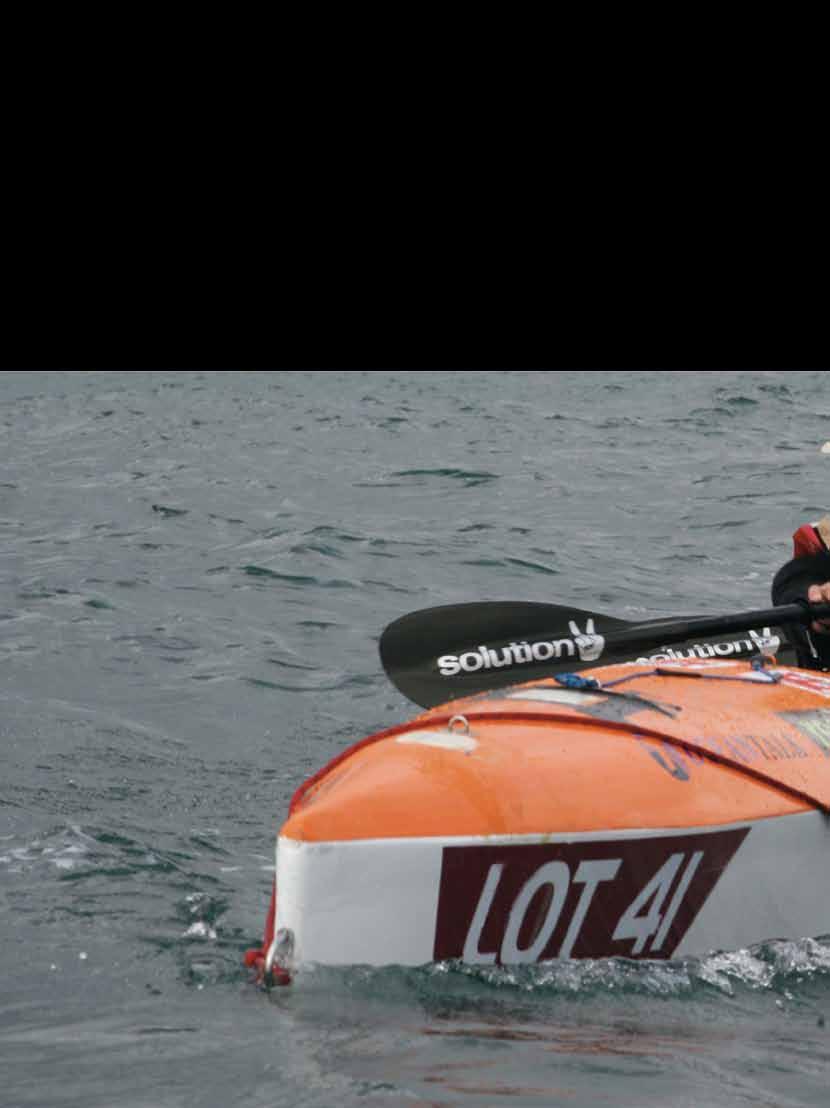
Kayaks across the Tasman
Lot 41, paddled from Australia to New Zealand in 2007–08 by adventurers James Castrission and Justin Jones, is now on display in our Wharf 7 foyer. It’s just one of two incredible trans-Tasman kayaks in our collection, however, representing two incredible quests – theirs and Andrew McAuley’s, the Australian kayaker lost tragically within sight of New Zealand the previous year. Curators Daina Fletcher and Megan Treharne relate both amazing stories.
S IGNA l S 101 DECEMBER 2012 TO FEBR u AR y 2013 4


left: Andrew McAuley in a self portrait that he captured during his Trans-Tasman crossing, 2007. Reproduced courtesy of Vicki McAuley
below: This carefully staged photograph was part of Castrission and Jones’s well-managed publicity and sponsorship campaign for their expedition ‘Crossing the Ditch’. Photograph Justin Jones and James Castrission, reproduced with permission
S IGNA l S 101 DECEMBER 2012 TO FEBR u AR y 2013 5
In 2009 and 2010 the museum acquired two significant collections related to maritime adventuring: the kayaks, equipment and supplies from two separate attempts to conquer the 850 nautical miles from Australia to New Zealand, by muscle-power alone. Both collections tell dramatic and poignant stories. Both explore personal quests, although both attempts were very different in the broadest sense with, ultimately, dramatically different results – for one resulted in the tragic loss at sea of solo kayaker Andrew McAuley.
McAuley set off from south-eastern Tasmania in his 6.4 metre kayak on 11 January 2007. Thirty days later, on 10 February, his upturned kayak was found off Milford Sound on New Zealand‘s South Island, within sight of land, a day after he radioed that he was sinking. His body was never recovered.
Later that year, in November, James Castrission and Justin Jones left Forster, NSW. After paddling their specially designed and curiously named double kayak, Lot 41, for 62 days and a distance of 3,318 kilometres, they arrived at Nganotu Beach on the North Island of New Zealand on 13 January 2008. The pair achieved both the world first of successfully kayaking west to east across the Tasman, and also the world record for ‘the longest trans-oceanic kayaking expedition undertaken by two expeditioners‘.
Both expeditions were uncomfortably aware of each other’s quests to be the first to kayak across the Tasman. The three kayakers, McAuley, Castrission and Jones, had met in 2006. McAuley, a veteran long-distance kayaker who had set his sight on the Tasman crossing since 2004, embarked on his voyage first. He named his quest Trans-Tasman Solo. Castrission and Jones named their expedition Crossing the Ditch.
Almost 20 years older than his rivals, 39-year-old Andrew McAuley was a professional adventurer – a mountain climber and experienced sea kayaker who had completed solo crossings of Bass Strait, the Gulf of Carpentaria, and paddled over 800 kilometres along the Antarctic Peninsula. He was named Adventurer of the Year in 2005 and was highly regarded as a measured, wellprepared expeditioner.
Determined to keep his solo attempt as close as possible to an ordinary kayaking adventure, he chose a conventional kayak design modified for safety, strength, buoyancy and comfort, with extra Kevlar layers and a hammock system to keep him off the hull and allow him to lie down without getting wet. After an aborted departure in December 2006 that kept him wet and cold for 24 hours before turning back, the hull was insulated and drainage channels to a bilge pump were lengthened and widened. But he was never far off the water – it was less than a metre from the water to his eye line as he sat in his cockpit, much of his body below the waterline.
McAuley and his wife Vicky designed a bright-yellow cockpit canopy with a waterproof ventilator to make the kayak watertight. She nicknamed the 70-cm-high fibreglass dome Casper.

The solo kayaker seemed intent on pushing himself and his kayak as far as he could, with a quiet, considered, Spartan approach
S IGNA l S 101 DECEMBER 2012 TO FEBR u AR y 2013 6
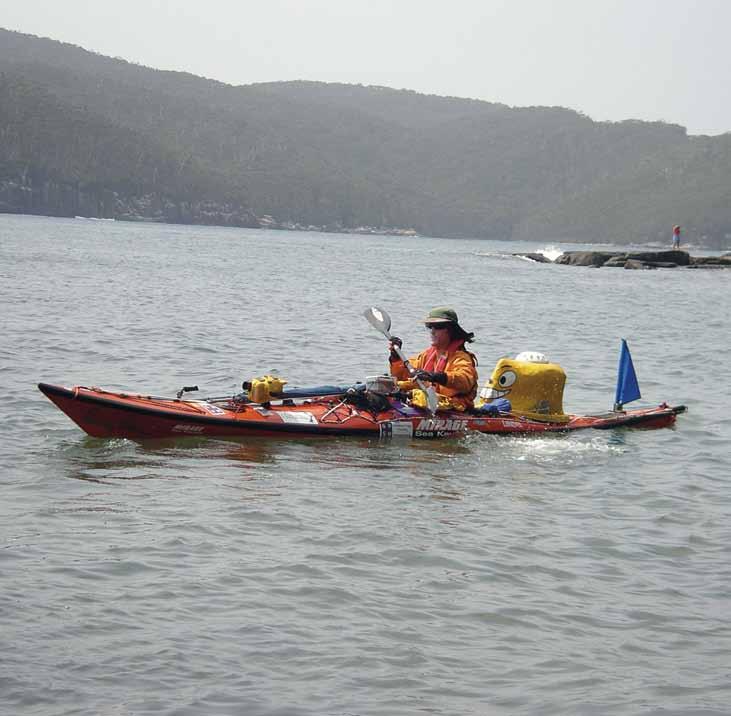
above: Andrew McAuley sets out for New Zealand from Fortescue Bay, Tasmania, on 11 January 2007. Reproduced courtesy of Vicki McAuley
left: The modified Mirage Sea Kayak, builder Paul Hewitson, used by the late Andrew McAuley in his ill-fated attempt to paddle from Australia to New Zealand solo. ANMM Collection, photographer A Frolows/ANMM
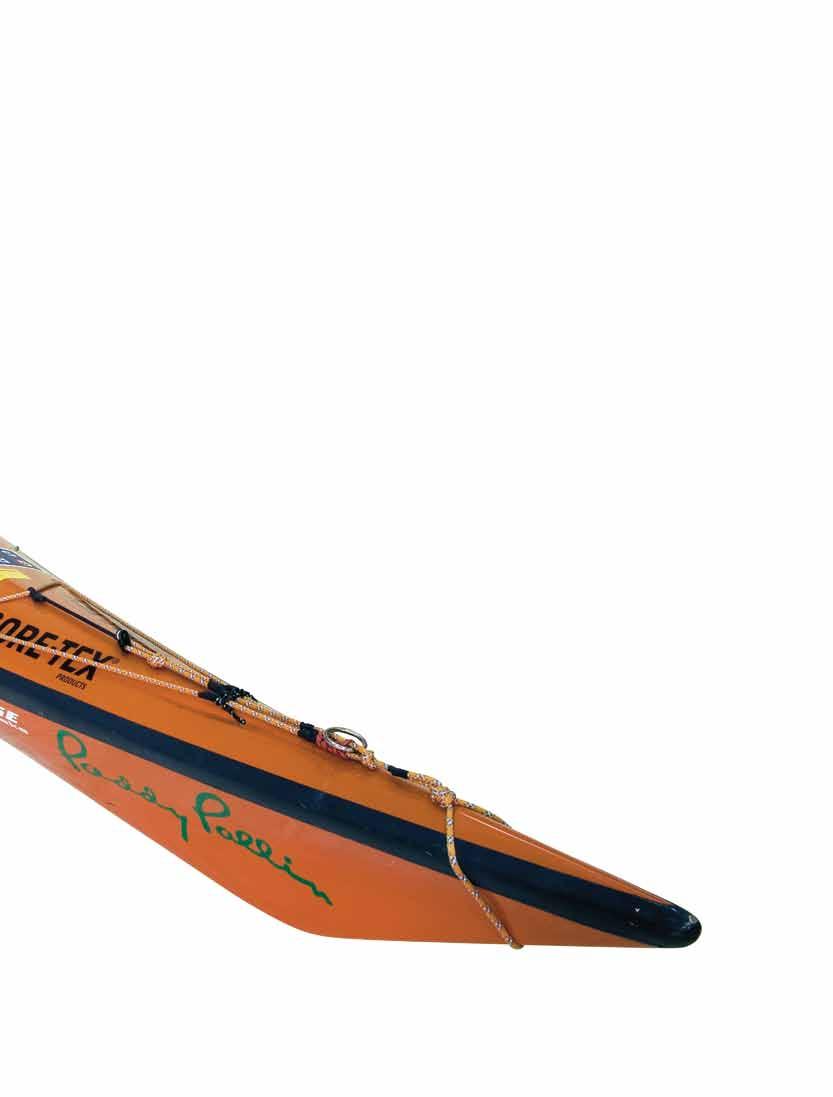
S IGNA l S 101 DECEMBER 2012 TO FEBR u AR y 2013 7
The homemade canopy slid forward from the back deck on two stainless steel pivot arms, to lock over the kayak’s cockpit, providing safe shelter for sleep and to weather storms. It gave the kayak a bubble of buoyancy so that it selfrighted if it capsized when it was sealed over the cockpit. However, when not in use, it created the opposite effect and could impede righting the kayak. A rear hatch accessible from the cockpit when using the canopy housed most of McAuley’s daily supplies. A front hatch was accessible only from the water. A beanbag seat provided some support while paddling and was used as a pillow at night. The kayak was also covered with an elaborate web of deck rigging that housed cameras recording the voyage.
The fact that McAuley believed it possible to kayak across the Tasman in a simple, small vessel, and very nearly pulled it off, is compelling.
The solo kayaker seemed intent on pushing himself and his kayak as far as he could, with a quiet, considered, Spartan approach, and he left quietly from the east coast of Tasmania. He chose to cross from Australia to New Zealand below the 40th Parallel so that for much of the journey he was in the wilder Southern Ocean rather than the Tasman Sea. For three quarters of the trip he would be out of helicopter range. He chose this route because the distance to cover was shorter and he knew the winds and currents would favour him compared to safer latitudes further north, where he risked being becalmed. It was a bold decision and suggests that McAuley’s mental rigour and determination to push his personal physical and psychological boundaries was, perhaps, just as important to him as the actual crossing itself.
McAuley packed 36 days of food and 30 gallons (113.5 litres) or two to three weeks supply of fresh water. This he supplemented with water extracted physically from the sea each day by operating a manual desalinator. His food-pack contents were prepared by a dietician and included Back Country dehydrated meals, peanut butter, chocolate, lollies, Powerbars, cheese, tins of tuna and his mother‘s Christmas cake. This high-calorie diet in theory contained enough fat, protein and carbohydrates to provide energy and sustenance for over a month at sea.
During the voyage McAuley wore Sharkskin neoprene pants, top and booties, dry suit, thermal underwear, a Goretex spray jacket, socks and
paddling gloves. A cockpit change bag – a spray skirt that comes up to the neck – allowed McAuley to change clothes without the cockpit being flooded. A comprehensive medical kit was prepared and packed for the voyage. He also wore seasickness pressure-point wrist bands constantly.
He took no books or music, but glued a small photograph of his three-year-old son Finlay in the middle of the kayak‘s cockpit, his sightline while paddling.
Safety and communications equipment included two satellite phones, a global positioning system (GPS), a GPS tracking beacon able to provide an instant position to his weather forecaster Jonathan Bogais on shore, a dry suit, emergency position-indicating radio beacon (EPIRB), flares and water dyes in the cockpit in waterproof bags, and an electric bilge pump. A sea anchor (underwater parachute) was used nightly to minimise drift and put the kayak‘s nose into the wind for greater stability. Solar panels were used to recharge batteries.
Throughout the voyage of 850-plus nautical miles, McAuley maintained a rigid, precisely timed, once-daily SMS contact with Bogais, who would text a weather report with instructions. Within 30 minutes McAuley would answer with comments and local observations. Bogais relayed messages to the kayaker’s wife and ground crew. McAuley’s short, cryptic text messages, detailing weather conditions and daily progress, are the most complete record of his incredible journey.
McAuley endured many capsizes, yet covered an average 30 nautical miles a day. Three quarters of the way across, he was hit by a Force-10 storm similar to the one that tore apart the 1998 Sydney to Hobart race fleet. He locked himself under the cockpit canopy for 28 hours. Winds with gusts up to 70 knots whipped up monstrous waves. McAuley‘s kayak would have been airborne and weightless every 15 seconds as it was tossed off each wave‘s peak like a javelin. Yet the systems he had in place worked. He knew days in advance, and was kept informed of the nature of the storm and its progress in relation to him. He had ample time to prepare himself for the onslaught and managed it successfully, in what Bogais has called ‘a truly amazing show of maturity and self-control’. A 45-ft ketch was overturned not far from his position, and its crew had to be rescued by a ship in a dangerous operation.
However, from the first week at sea several equipment failures compromised communications. Four days into the voyage he ruled out a helicopter drop to replace an inoperative GPS beacon. Even more dangerously, late in the voyage, damage to his cockpit canopy made him unable to use it safely. After nearly a month at sea McAuley’s last text message was sent on 8 February 2007. He reported his position, approximately 67 nautical miles from Milford Sound, his estimated time of arrival and his inability to recharge his satellite phone.
On 9 February a distress call was received via VHF radio by the Maritime Operations Centre of Maritime New Zealand. Reception was poor and much of the message was indecipherable but the words ‘my kayak is sinking’ and ‘I need rescue’ were clear. A search ensued and on 10 February a Royal New Zealand Air Force plane sighted a semisubmerged kayak. No-one was with the kayak and Andrew McAuley’s body was not found.
The kayak was retrieved and offered to the Australian National Maritime Museum by McAuley’s widow, Vicki, and its builder and owner Paul Hewitson of Mirage Sea Kayaks, a friend of McAuley and an expedition sponsor. The donation was accompanied by the material found inside when it was recovered: the paddle, camera extension pole, dromedary bladder, sail, kite, numerous dry-bags attached to the foredeck, the two satellite phones, camera cases, chargers, batteries, food and halfused medical supplies stored inside.
All were offered as a gift from Vicki McAuley. All are poignant reminders of the man who used them and reveal how he managed to survive in a tiny kayak for over 30 days in the Southern Ocean: how he paddled, communicated, slept, navigated, cooked and coped with
S IGNA l S 101 DECEMBER 2012 TO FEBR u AR y 2013 8
The journey… was a remarkable achievement and testament to Andrew McAuley’s planning, skill, fortitude and above all mental strength
Double kayak Lot 41, first to paddle across the Tasman Sea between Australia and New Zealand, on display with a selection of expedition equipment in the foyer of the Wharf 7 Maritime Heritage Centre. Photographer Zoe McMahon/ANMM

S IGNA l S 101 DECEMBER 2012 TO FEBR u AR y 2013 9
Half way across the Tasman Lot 41 was churned as if in a washing machine, rolled and dumped by 10 metre waves
The report focused on the rescue attempt and McAuley’s ability to be found, not the cause of the capsize. It noted the effects on stability of having a water bladder on the kayak’s foredeck, and that the damage to the canopy’s pivot arms located it further aft than it should have been, so that when capsized it would drag like a sea anchor. The coroner commented that if McAuley had tied his EPIRB to himself, he may have been able to activate it when he fell out of the boat, which would have pinpointed his position and ruled out initial uncertainty about whether his distress call was a hoax. There would have been a much better chance of finding him. The coroner also criticised a delay in the rescue attempt, but it was impossible to say if the outcome could have been any different.
when he was most exhausted, and when the boat possibly had its lowest margin of safety in reserve.’
According to McAuley’s wife Vicki, the fact that he made it to within sight of land indicates that his quest was realistic for him. Andrew McAuley was posthumously awarded the Australian Geographic Lifetime Adventure Award in 2007.
the demands of the voyage. The damaged kayak and its contents, the surviving footage, text messages and still images found on board are all that remain as part of a jigsaw puzzle that can be used to reassemble McAuley’s experience and contemplate what went horribly wrong.
Much was lost at sea, including the broken or damaged pod Casper, most of the safety equipment, the VHF radio, McAuley’s personal flotation device and his dry suit – he is thought to have been wearing the latter and reaching for the former in the rear hatch after the capsize. His EPIRB was found in the kayak but it was not activated. The inoperative GPS tracking beacon was not present.
A coronial inquiry into his disappearance was held in Invercargill in New Zealand in December 2007. Several experts commented on aspects of McAuley‘s Spartan operational, communication and risk plans. There was no complete list of the equipment carried on board, and only limited spares and back-up systems were in place. By 4 February he had been unable to recharge from his solar panels, and by 7 February he reported that he was close to running out of battery power for his phone. When the kayak was found McAuley’s watch and second satellite phone had run out of power and the primary phone was damaged, inoperative and very nearly drained.
After much deliberation the court found that McAuley drowned in the Tasman Sea on 9 February 2007 after making a distress call by VHF radio and becoming separated from his capsized kayak. The coroner did assert that ‘The journey itself, up to the point of disaster so close to destination, was a remarkable achievement and testament to Andrew McAuley’s planning, skill, fortitude and above all mental strength’.
McAuley’s kayak was modified to endure the open ocean, which it did with great success. There is a terrible irony in the fact that the voyage failed in the zone where a conventional sea kayak is normally operating: close to the coast on daily passages. This is brought out in comments by ANMM curator, boat designer and experienced kayaker, David Payne.
‘Perhaps the modifications and requirements needed to achieve that lengthy open-ocean crossing in safety made it more vulnerable in the place it should have felt at home – coastal waters,’ David has suggested. ‘It was built with a heavier, higher deck, and carried additional gear on deck, including the Casper pod. The gradual reduction in stores consumed during the voyage –initially acting as ballast – would have reduced stability. At the end there was a need to desalinate seawater, held in a floppy 10-kg bladder on the foredeck. All these factors would raise the centre of gravity, which reduces stability, making the kayak more susceptible to capsize.
‘Adding to this was the notoriously rough New Zealand coastline, where the unpredictable sea conditions worsen as you get closer. McAuley entered the most dangerous area of the voyage at a point
McAuley’s daily text messaging and two phone calls over 30 days reveal the very personal character of his voyage. His attempt to kayak across the sea solo, as much alone as possible, in his tiny, unnamed boat, was a stark contrast to the web-based communication surrounding the Crossing the Ditch expedition and its two young adventurers, James Castrission and Justin Jones. Their quest shows a high level of preparedness nurtured over three and a half years, and an extraordinary level of awareness of the public appeal and marketability of the voyage. The pair chose a longer, somewhat safer, more northerly route across the Tasman, selecting proposed departure and arrival points on their reputations for safety and protection –Forster and Auckland.
Working as a team with an incredible array of equipment and support, these two very young and relatively inexperienced adventurers were able to paddle successfully from Australia to New Zealand. Their journey was broadcast live to millions of people around the world through their website, with daily updates of photos, commentary and GPS tracking. Castrission and Jones spoke regularly to radio stations during their unexpectedly long 62 days at sea, and were farewelled and greeted by thousands of supporters and by television cameras at each end of their journey.
In complete contrast to McAuley’s simpler, modified production-style kayak, their atypical, custom-built craft was specially designed to be paddled by two across the notoriously rough Tasman Sea. It was nine metres long and 1.2 metres wide, designed by Rob Feloy in the United Kingdom and built in Australia by Graham Chapman of Adventure Marine. Launched in November 2006, it was christened Lot 41 after the auction lot number of the legendary New Zealand-born race horse Phar Lap, who crossed the Tasman to become Australia‘s best-loved race horse.
Lot 41 was wider, longer, heavier and sturdier compared to McAuley’s kayak. It featured two cockpits and a cabin at the
S IGNA l S 101 DECEMBER 2012 TO FEBR u AR y 2013 10
stern with modest headroom and the space for both crew to sleep in it. There was a large water tank and storage space for over 60 days of provisions. Both kayakers could stand up and move around on board and when paddling, and were higher off the water. McAuley, by contrast, was right at water level. An abundance of solar panels covered the vessel to charge batteries for the communication systems, bilge pumps and water desalination unit. The kayak’s inbuilt support systems included emergency beacons, a life raft, satellite phone, global tracking system and GPS.
The young pair’s voyage was also hazardous but they were well prepared. They worked as a team, with constant communication with their larger support crew. They had planned for a voyage of 35-45 days and 2,200 kilometres to Auckland. Half way across the kayak was churned as if in a washing machine, rolled and dumped by 10 metre waves. At times the pair paddled furiously over previously covered water, in circles, chafed, sunburnt and exhausted, lacking the favourable winds and currents of McAuley’s more southerly route. After 62 days and 3,318 kilometres they staggered ashore further south than planned, at New Plymouth, engulfed by a huge crowd, massive media coverage, entry into the history records and a future career in motivational speaking and adventuring. (Earlier this year that included an Antarctic trek to the South Pole and back.)
Lot 41 and a selection of its contents have been donated to the museum by James Castrission and Justin Jones and Crossing the Ditch Ltd. The collection of material reveals the personal world created and lived in by Castrission and Jones, again showing what they used, ate, did and wore during their two months at sea. It is also a unique record of the technologies, equipment and material available in 2007 for long distance sea kayaking. This is also the subject of an extensive repository of written and photographic documentation held by a wide variety of sources , recording, reporting and discussing the extreme nature of the achievement.
You can view Lot 41, its artefacts and images from the voyage in the recently refurbished Wharf 7 foyer display. An exploratory multimedia program about the adventure will soon be installed. Visitors on a guided tour of Wharf 7 can also view Andrew McAuley’s bare-bones kayak through the window of the large object store; it is destined for

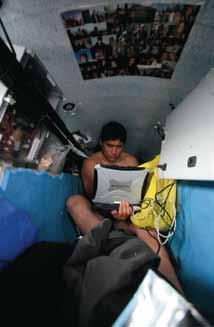
clockwise from top:
James Castrission (front) and Justin Jones together on the ocean during the gruelling challenge of crossing the Tasman Sea on Lot 41. Photograph Justin Jones and James Castrission, reproduced with permission James Castrission with the expedition’s sea anchor. Photograph Justin Jones and James Castrission, reproduced with permission Justin Jones in the cabin of Lot 41 using the Panasonic Toughbook laptop that was part of their communications package. Photograph Justin Jones and James Castrission, reproduced with permission
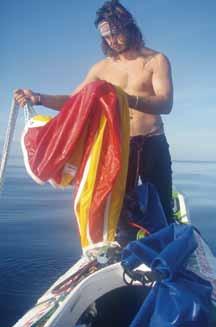
S IGNA l S 101 DECEMBER 2012 TO FEBR u AR y 2013 11
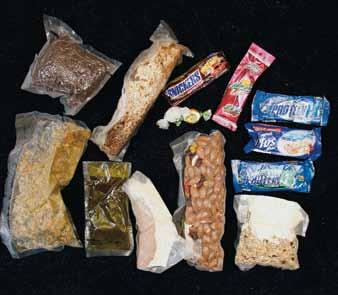


Both these collections are a significant historical resource that demonstrates the very different nature of the expeditions
display in the main museum exhibition Watermarks in the vicinity of displays on extraordinary voyagers Kay Cottee and kayaker Oskar Speck who paddled from Germany to Australia over seven years just before World War 2.
James Castrission and Justin Jones’s successful voyage across the Tasman is inextricably linked with the tragic loss of solo kayaker Andrew McAuley who was attempting to achieve the same historic first on the same stretch of ocean the previous year. Both these collections are a significant historical resource that demonstrates the very different nature of the expeditions – over different stretches of water, under different conditions, by expeditioners of different generations backed by different resources and carrying with them, perhaps,
different perceptions of adventure itself. The collections certainly show how all three kayakers prepared themselves physically, mentally and emotionally in their quests to kayak from Australia to New Zealand, unassisted and non-stop.
The stories of both quests offer opportunities for enquiry into the nature and historiography of adventuring – into the making and unmaking of heroes.
clockwise from above:
Equipment and supplies from the Lot 41 expedition have been donated to the museum through the Australian Government’s Cultural Gifts Program by James Castrission and Justin Jones of Crossing the Ditch ltd.
S IGNA l S 101 DECEMBER 2012 TO FEBR u AR y 2013 12

The siren song of classic craft
S IGNA l S 101 DECEMBER 2012 TO FEBR u AR y 2013 13
The 2012 Classic & Wooden Boat Festival combined the perennial attraction of stunning classics with a new emphasis on popular entertainment and performance, to give this biennial, springtime museum attraction a makeover and attract new audiences. As always, it was a showcase for the museum’s Australian Register of Historic Vessels.
The glamour boat of the 2012 Classic & Wooden Boat Festival was undoubtedly Hurrica V, soon to be seen on screen with a starring role in the Baz Luhrman screen adaptation of F Scott Fitzgerald’s great 1925 novel The Great Gatsby, filmed in Australia last year. This elegant yacht took centre stage all weekend on the display pontoon where it could be admired close up, or its harmonious lines could be appreciated from the wharf opposite.
Hurrica V is a gaff-rigged ketch of 17.85 metres length (59 ft) that was built by W M Ford as a gentleman’s yacht for a wealthy pastoralist named William Oliver. He was 73 years old when Hurrica V was delivered to him in Melbourne in 1924. Under his ownership Hurrica V cruised in the Bass Strait area and both this well-heeled gentleman and his vessel were well-known at the Royal Yacht Club of Victoria. It was looked after by paid hands, and Oliver would arrive at the club in his chauffeur-driven Rolls Royce – not uncommon in an era that’s now seen through a romantic lens.
Hurrica V changed hands for the first time in 1941 and was brought
up to Sydney by William Stuart. Shortly afterwards, the yacht was requisitioned for war service and its romance and elegance vanished beneath grey camouflage paint and ungainly sponsons. Stripped down, with the rig taken off and machine guns mounted on deck, it was given a new diesel and new name, HMAS Stingray. Surviving service in Port Moresby and Milne Bay, New Guinea, in 1946 the vessel was offered back to Stuart who re-configured it once more as a sailing yacht, and sold it on in 1948.
Under subsequent owners Hurrica V operated in Sydney and Pittwater, New Guinea and New Caledonia, weathering a five-day cyclone in this period. Other cruises took the craft to Indonesia and Fiji, another cyclone and misadventure upon a reef. At times the ketch was a live-aboard; with each owner it underwent a series of changes including the installation of a Bermudan rig. Gradual revisions to the interior, deck and superstructure built up to a point where only the hull’s lines reflected its original Jazz-Age elegance.
The current owners saw those lines as the starting point to recreate a piece of craftsmanship that recognised its original intent as a classic cruising yacht, but they have cleverly married this with a modern arrangement more appropriate for contemporary use. Hurrica V is once again a 1920s classic, a luxury yacht of its era and up there in the top echelon by contemporary standards too.
That care and the value the owner places on the yacht were reflected in his considered approach to the passage down from Pittwater to attend our Classic & Wooden Boat Festival. Observing the week’s deteriorating weather forecast, he sought permission to arrive three days earlier – a wise move, as it turned out.
The Friday of the festival’s opening dawned with an uncertain wind and
previous page: Songstress sirens were a feature of this year’s festival. Singer Juanita Tippins appears on the Cape Bowling Green lighthouse. Photographer Brian lowe, Catapult Creative Productions
right: Glamour boat of the 2012 Classic & Wooden Boat Festival was Hurrica V, the Jazz-Age gentleman’s yacht that’s starred in the recent film of The Great Gatsby. Photographer Brian lowe
a sense of things building in the air. By late morning, as the first boats arrived for the festival and traders set up their stalls, the gloom gave way to the predicted full-on gale. The coldest October day in years grabbed hold of everything in the open, and everyone battled on as best they could. It is a tribute to the boat owners, exhibitors and the museum’s staff – event organisers and Fleet section who were supervising the berthing of the visiting classic vessels – that they weathered the blow and by early evening were well settled in place despite the wind’s best attempts to blow everything away.
Thankfully the weather had moderated by sunset, and an inspiring part of the Indigenous Welcome To Country ceremony quietly took to the water in the darkness as two nawi – the Sydney region’s Indigenous tied-bark canoes – set sail with hearth fires alight in their bows. They were paddled by boys from the Tribal Warrior Association and with that, the Indigenous community and their canoe culture were on their waters again. This was a repeat of that moving display from the opening night of the successful national conference that we held here earlier in the year, called ‘Nawi – exploring Australia’s Indigenous watercraft’. The conference was extensively reported in the last issue of Signals (No 100 September–November 2012) and an update appears on page 44 in this issue.
For our audience of visitors and exhibitors to this year’s Classic & Wooden Boat Festival, this was an introduction to the wonderful background of our Indigenous watercraft. The museum’s focus on these watercraft has been an offshoot of our major museum project, the Australian Register of Historic Vessels. This is this museum’s online, national heritage database, devised and coordinated by our own staff
S IGNA l S 101 DECEMBER 2012 TO FEBR u AR y 2013 14

S IGNA l S 101 DECEMBER 2012 TO FEBR u AR y 2013 15
It
is a tribute to everyone that they weathered the blow despite the wind’s best attempts to blow everything away
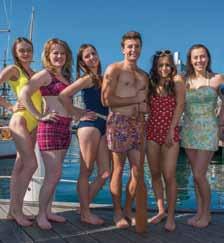
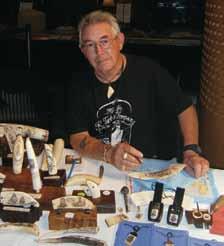
in conjunction with colleagues from allied institutions, that reaches across Australia to collate data about the nation’s surviving historic vessels, their designers, builders and their stories.
The Australian Register of Historic Vessels (ARHV) touched many aspects of the festival over the weekend, beginning with a ceremony during which the museum’s chairman Mr Peter Dexter am handed out ARHV certificates and burgees to more boat owners whose craft have been listed on the register. As usual there were many ARHV-listed craft present at the festival, representing a sampling of the diverse nature of the museum’s heritage vessel database.
Just opposite Hurrica V was Stan, also known as AWB 441, one of the workboats that were important support craft during World War 2 and the postwar period. Further out along the wharf was the classic 1970s 12-Metre racing yacht Gretel II, just as we were noting the 50th anniversary of the nation’s first challenge for the America’s Cup by her namesake Gretel (for more on that anniversary, see the article on page 54).
For this event the Halvorsen Club always brings a fleet of craft made by that famous Norwegian dynasty
of fine shipwrights, the Halvorsens, taking over the Sydney By Sail pontoon beside Pyrmont Bridge. Pride of place went to the magnificent luxury cruiser Silver Cloud, but nearby were other big boats such as the 45 footers Ku-Ring-Gai and Kalinda, the more modern Nabilla, and a cluster of smaller 26s, 30s and 36s, many of them from the old Halvorsen hire boat fleet that was based at Bobbin Head throughout the second half of the 20th century. The earliest would have to be Kweena, a 1930s Lars Halvorsen model that motored up from Bateman’s Bay. Two other Halvorsen craft that should not have been missed, either, were Miss Ally the 1948 open launch with matching trailer displayed on the hardstand area, while among the yachts was Tashtego, a stunning Halvorsen cruising sloop from 1963.
Yachts were well represented from the Australian Register of Historic Vessels too, including Hoi Phoon, Karalee and Hoana. Further out on the wharf was the converted Tasmanian crayboat Lyndenne and the 1950s, reverse-sheerline motor cruiser Antares Lady Hopetoun, the Sydney Heritage Fleet’s vice-regal steam launch from 1902, took visitors for rides on both days, announcing its
left to right:
Festival fashion included historic swimsuits on parade. Photographer Brian lowe (also below right and opposite)
Scrimshander Norm lewis all the way from Maleny, Queensland, whose artistry includes pieces on recycled piano keyboard ivory. Photographer ANMM volunteer Neale Philip Top-billing siren, the ARIA-award-winning Clare Bowditch, enchanted the crowds under a starry Sydney sky at the festival.

departure with a hearty blast from its instantly recognisable steam horn.
The museum’s fleet are listed on the ARHV, of course. Some of our vessels were quietly taken away to make room for visiting classic boats, but we kept others on hand, knowing them to be popular crowd pleasers on this biennial weekend. They were the 1903 Victorian couta fishing boat Thistle, an open sloop; our oldest vessel, the lovely 1888 New Zealand-built racing gaff cutter Akarana, and our ex-Royal Australian Navy classics, the patrol boat HMAS Advance and the elegant officers launch MB 172.
The Classic & Wooden Boat Festival is a key opportunity for us to visit and assess other people’s historic craft, which can be offered the opportunity to nominate for the Australian Register of Historic Vessels. The owners of a number of yachts and launches took application forms away with them, or returned them on the Sunday ready for the process to begin. All of the successful nominations will be featured in a subsequent issue of Signals
David Payne, curator of Australian Register of Historic Vessels
S IGNA l S 101 DECEMBER 2012 TO FEBR u AR y 2013 16
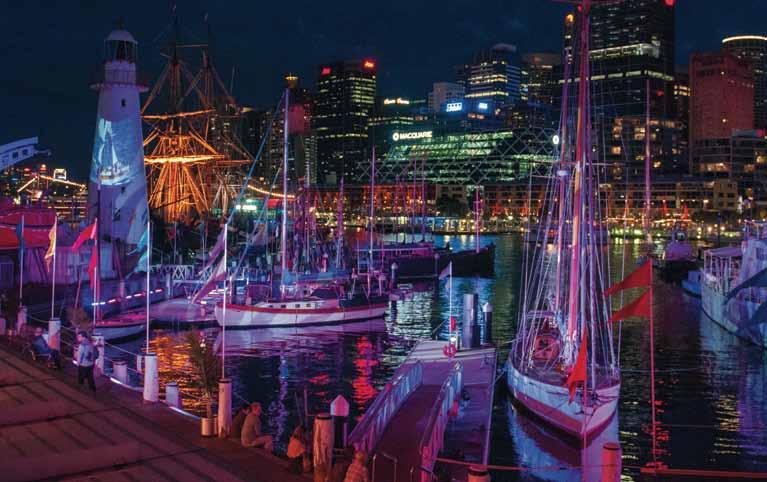
Festival of classics evolves
This year museum staff worked with Catapult Creative Productions Pty Ltd to bring a blend of entertainment and sophistication to our site for the 2012 Classic & Wooden Boat Festival.
‘The Call of the Sirens’ was this year’s theme, drawing on legends of femmes fatales luring sailors with captivating song.
The musical genres ranged from 1950s–60s hits, jazz, soul and the latest pop-rock from some of Australia’s leading songstresses including Evelyn Duprai, Natasha Stuart, Juanita Tippins, Danni Da Ros, Mali Ka-Hood and Carmen Smith. Saturday evening saw ARIA award winning Clare Bowditch enchant the crowds under a starry Sydney sky.
Heritage-boat enthusiasts with long memories will agree that this is a far cry from the first origins of a recurring wooden boat festival on Sydney Harbour, to which our biennial spring carnival of classics can trace its roots. This lineage began in May 1984 when, inspired by the Commonwealth Government’s announcement that it would build a national maritime museum, an exhibition of heritage craft called Ships Ahoy! was first held in Darling Harbour – then a rundown, un-renovated industrial backwater. The vessels were both privately owned or belonged to the organisation then known as Sydney Maritime Museum (now Sydney Heritage Fleet). It would be seven years until that national maritime museum – this one – would open. Meanwhile a second heritage boat event was held in 1986 at Birkenhead Point, home of Sydney Maritime Museum. One boat on display was the unrestored 1888 Akarana, then in private hands.
After a hiatus of several more years the first Sydney Wooden Boat Festival was held in October 1990 at River Quays Marina, Parramatta River, underwritten and managed by classic boat enthusiast John Wood with friends and family. That event led to the formation of the Wooden Boat Association (NSW). Wood and the WBA then staged this festival annually until 1995,
moving it to Balmain (next to the Dawn Frazer Swimming Pool) and then for three years to Berrys Island at Wollstonecraft on the North Shore.
In 1996, with the costs of running the festival proving onerous, Wood and WBA began negotiating with the Australian National Maritime Museum for a jointly run event to be supported financially by the museum, and the first Classic & Wooden Boat Festival was held in 1997, located largely on the Wharf 7 site. The festival resumed annually, taking over more and more of the museum’s Pyrmont location as it grew in scope. The Sydney 2000 Olympics interrupted, with Olympic venues inhabiting the museum site that year, and the next Classic & Wooden Boat Festival did not take place until March 2002. Since then the event has become a biennial attraction, alternating with other major events staged by the museum. It has now resumed its spring-time slot in the calendar and has become one of the museum’s key drawcards, while retaining its affiliation with the Wooden Boat Association (NSW), Sydney Heritage Fleet, NSW Government Transport and Maritime Services, and gaining support from a number of important private and corporate supporters.
Jeffrey Mellefont and John Wood
S IGNA l S 101 DECEMBER 2012 TO FEBR u AR y 2013 17
Glass plate to
Images by a father and his son, from the museum’s substantial William Hall photographic collection, are being digitised and shared online. Curatorial assistant Penny Hyde explains how this has led to the discovery of more information about their history and subjects, and exposed them to appreciative new audiences.
A photograph of a nun might seem a rather odd image to find among a collection of nautical scenes. Yet there she is, posing slightly awkwardly next to a crucifix and in front of a drawn curtain. Another photograph from the same series (see page 21) captures the grin of a young soldier, his hair carefully parted and his uniform brand new. It is a sentimental portrait created for his mother or girlfriend before he departed for active service in World War 2, a token that was repeated by many thousands of his contemporaries. In other images , glamorous women pose more expertly, dancers reach for each other acrobatically and brides cradle their bouquets.
These striking studio portraits are evocative and intriguing – even more so for the elusive identities of their subjects and their seeming incongruity within a maritime photographic collection. They are the work of Sydney photographer William James Hall (1877–1951), best known for his harbour and yachting scenes. During the early 20th century, Hall became a fixture on and around Sydney Harbour, and his personal interest in the sailing scene saw him amass thousands of images, mainly of lively weekend regattas. The Australian National Maritime Museum holds a large number of these sailing photographs, a spectacular collection that covers several decades and documents the faces of Sydney’s sailors, the boats themselves, the emerging technologies of motorboats and the developing beauty of Sydney Harbour.
The Hall photographic legacy stretches and blurs beyond the lifetime of William James Hall to the work of his father, William Frederick Hall (1855 –1943). Hall senior came to Australia from England in about 1874 as a 19-year-old, and on the birth certificate of his son William James in 1877, his occupation is listed as ‘butcher
 right: Festive, suntanned crowd in a summery mood on a launch off Nielsen Park, probably in the 1930s. Passing to leeward and identifiable by its sail number A2 is the open sloop Mischief of the Sydney Amateur Sailing Club. All photographs in this article are attributed to William James Hall.
right: Festive, suntanned crowd in a summery mood on a launch off Nielsen Park, probably in the 1930s. Passing to leeward and identifiable by its sail number A2 is the open sloop Mischief of the Sydney Amateur Sailing Club. All photographs in this article are attributed to William James Hall.
S IGNA l S 101 DECEMBER 2012 TO FEBR u AR y 2013 18
cyberspace

S IGNA l S 101 DECEMBER 2012 TO FEBR u AR y 2013 19
and journeyman’. However, by 1890 at the latest he was in business as a photographer in Sydney, a business that his son joined and later took over in about 1902. They established a number of photographic studios throughout their careers, known variously as ‘Hall Studio’, ‘Hall & Co’, ‘W F Hall’ and ‘Hall W’, and located at different times in Castlereagh Street, Hunter Street, Phillip Street and Bligh Street in central Sydney.
Both men appear to have had an interest in maritime activities, which makes correctly attributing Hall photographs slightly difficult. On either end of the spectrum, early Sydney Harbour scenes from the 1890s are certainly the work of William Frederick, while the portraits and later sailing scenes from the 1920s and 30s (whether dateable by fashion, technology or the developing Sydney skyline) can be credited to William James. Between those periods, however, it is perhaps impossible to state definitively which photographer captured each and every image.
The Hall photographs are now a valued part of the museum’s collection and a rich historical resource. The images present an exceptional record of Sydney’s maritime history, chronicling the development of the city’s maritime landscape across two centuries through the eyes of two of its citizens. In the Hall collection, you can see the two arcs of the Sydney Harbour Bridge slowly coming together to form one steel spine, and the changing face of Circular Quay as it moved from being an industrial cove to a lively ferry port. The visits of notable vessels such as Joseph Conrad in 1935 and Ernest Shackleton’s supply ship Aurora in 1914 are also documented in this visual record.
Undoubtedly the most vibrant images of the Hall collection are the sailing and regatta scenes, most of which appear to be the work of the younger Hall. Although not a sailing man himself, William James took to the water to capture images of the vessels, sailors and spectators that converged on Sydney Harbour for the weekend regattas. He expertly handled his camera in the rough and wet conditions as his motorboat wove through the competitive vessels. Hall would display his photographs in the window of his business each Monday, where they drew a regular crowd of onlookers searching for familiar faces and boats. The images themselves are generally quite candid –crew members throwing their hands up to wave as they spot the photographer, yachts dipping, flying, crashing, capsizing
Now famed mostly for his vivid maritime photography, in his lifetime Hall was best known as a livestock photographer
clockwise from right:
A striking and intense portrait of an unidentified woman, c 1930.
A World War 2 soldier of the 7th Division Signals sits for a studio portrait, c 1940.
Sydney sloop Utiekah II chasing the 8-Metre Norn (sail number 7) in a fresh Sydney southerly, reaching towards the Sydney Harbour Bridge that from its early stage of arch construction dates the photograph to 1930.
and sinking, and the beautiful blooms of the vessel’s sails capturing the winds of the harbour.
The Hall images have become part of the museum’s collection through a number of avenues, with the largest contribution coming from the State Library of New South Wales in 1986. This particular collection of glass-plate negatives was originally given by a member of the Hall family to the Royal Sydney Yacht Squadron, which then forwarded the negatives to the State Library of NSW with the understanding that they would be transferred to a national maritime museum when such an organisation was founded. Other Hall images have been acquired individually, or box by box from estates, collectors and vendors.
A book of William James Hall’s work was published in 1982, compiled by the prolific yachtsman and author Jeff Toghill while the negatives were still at the State Library and titled Sydney Harbour of yesteryear: The glass plate photography of William James Hall
With the coming of the digital age, however, Hall’s photographs are spreading further. As part of the museum’s digital outreach program, the images are being released to our growing online catalogue of selected items from the collection, known as eMuseum, and to the museum’s platform on the photo-sharing site Flickr. In this way the photos are accessible and foster interactivity, with users able to comment on, share and discuss them. One of the great gifts of an online museum is the engagement and instant knowledge sharing that it allows. Not only have we been able to disseminate information more widely, but we have been able to gather it too.
Nowhere is this more relevant than with the Hall photos. Online users have worked through the photographs like detectives, unlocking
stories within the images by providing invaluable contextual information that was not previously available, such as identifying places, dates, vessels and even individual people.
In the case of a photograph of a sailor on board the visiting training ship Joseph Conrad, a Flickr user referred to a newspaper article with a photo of the same man and a story about his rescue after falling overboard somewhere along the coast of Australia. The smiling face now has a name – Andrew Lindsay – and an identity. We have also been able to connect and share our Joseph Conrad images with the American maritime museum Mystic Seaport, at whose wharves the Joseph Conrad now resides as a museum ship.
In another photograph relating to the visit of Joseph Conrad, crew sit on the deck of their ship apparently singing while one man plays a piano accordion. This led to the discovery by one commentator of a newsreel in the collection of the National Film and Sound Archive depicting the crew of Joseph Conrad singing a ‘rousing rendition’ of the song ‘Rolling Home’, accompanied by an accordion, while berthed in Sydney Harbour on 14 December 1935. Adding further historical detail, another commentator located and posted lyrics to the song. Knowing an exact date for the photograph, as well as what was happening at the very moment it was taken, heightens its historical value and imbues the image with rich context and personality.
A set of early landscape and river scenes attributed to William Frederick Hall was uploaded to Flickr some time ago. We assumed that the photographs were of the Hawkesbury River, but not until a learned member of the public recognised a run-down building in one photo as Singletons Mill on the Hawkesbury River were we able to confirm the location. After contacting
S IGNA l S 101 DECEMBER 2012 TO FEBR u AR y 2013 20
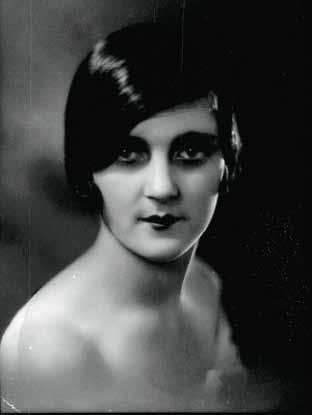

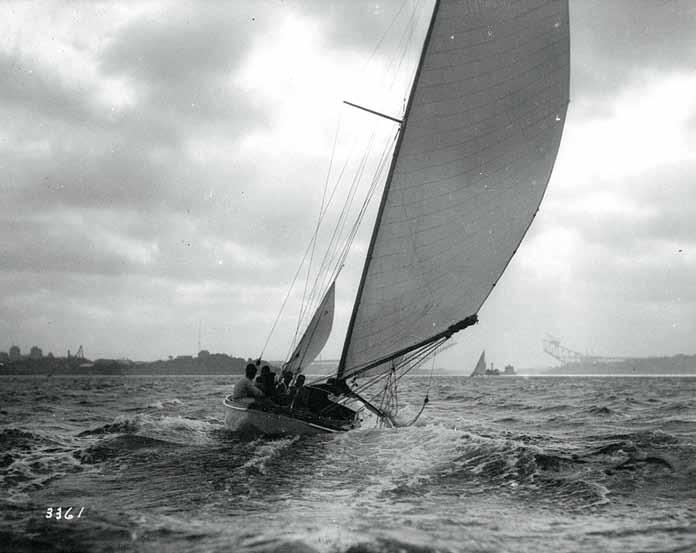
S IGNA l S 101 DECEMBER 2012 TO FEBR u AR y 2013 21
clockwise from below:
An 18-footer believed to be H C Press II, under spinnaker and with a bone in her teeth, threatens to run down the photographer in his photo boat.
Seemingly unperturbed by their predicament, sailors smile for the camera as their racing skiff sinks beneath them near Balmain Coal Mine, Sydney Harbour, c 1920.
A whaler near Kirribilli, Sydney Harbour, in the 1930s. In the background, Sydney Harbour Bridge is complete.

S IGNA l S 101 DECEMBER 2012 TO FEBR u AR y 2013 22
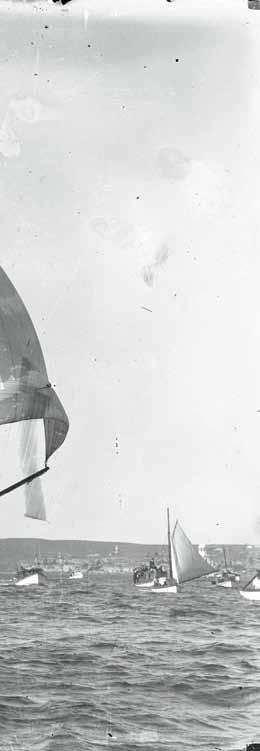
The sheer number of sailing photographs that have survived and their vivacious energy leave no doubt that sailing was William James Hall’s photographic passion
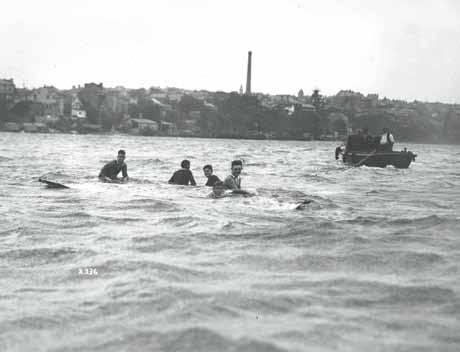

S IGNA l S 101 DECEMBER 2012 TO FEBR u AR y 2013 23

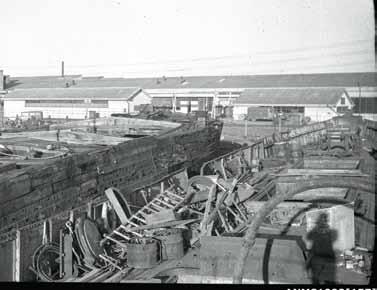
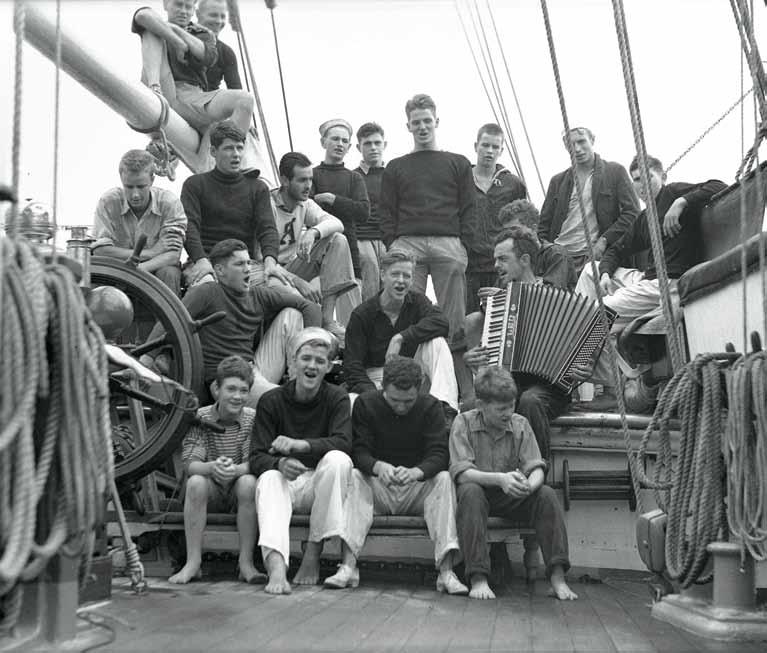
S IGNA l S 101 DECEMBER 2012 TO FEBR u AR y 2013 24
clockwise from far left:
Singleton’s Mill on the Hawkesbury River, c 1900. Built in 1834, it was by 1900 a popular (and reportedly haunted) tourist attraction.
Snap happy but camera shy, William James Hall left little trace of himself other than his photographs. In this photo of a Sydney Harbour dock, c 1925, his shadow can be seen at the lower right.
Crew members singing on board Joseph Conrad, Sydney Harbour, 14 December 1935. Research by an online viewer has enabled the song to be identified as ‘Rolling Home’.
local historical societies, in particular the Dharug and Lower Hawkesbury Historical Society, and using their specialised knowledge, the image was dated by carefully comparing our photograph with images showing the mill in increasing states of disrepair. A new relationship between our museum and these historical societies continues to complement and benefit the records of all involved.
While the Hall sailing and landscape images were always going to be popular with the museum’s online audience of maritime history enthusiasts, the stunning studio portraits mentioned earlier have opened the museum to completely new audiences. After uploading the images to Flickr, we tracked with interest the portraits as they were shared online across blogs and websites and were appreciated by a range of audiences from contemporary photography studios to vintage clothing fans. The portraits opened a door to communities that might never have thought to explore the archive of a maritime museum, and they demonstrate the variety and the potential of our extensive collection. However illuminating these online activities have been for gathering information on the Hall sailing photos and landscapes, unfortunately no light has been shed (as yet) on the identities of the people in these portraits. Some photographs have tantalising, barely legible remnants of a name on the glassplate negative. The portrait of the young soldier features one such inscription that appears to read ‘Wynn’, and a colour patch on his shoulder indicates that
he was a member of the 7th Division Signals. These are all faint clues to an identity – possibly the soldier is Sylvester Murray Wynn, who enlisted in Sydney in June 1940 and died in New Guinea in 1943. The unknown fate of the young face is disconcerting. Perhaps his family will one day, in an online search, discover the image and the jigsaw will come together. The photograph is there, ready and waiting.
The anonymous faces in the portraits mirror the elusive personality of the photographer William James Hall himself. The closest we have come to an image of William James is a landscape in which the silhouette of the cameraman stretches its shadow modestly down one corner. Similarly, although the bones of William James Hall’s life can be tracked through birth certificates, death notices and marriage records, his personality remains elusive. So far no personally illuminating records, such as diaries or letters, have been located. We do know that Hall was born in 1877, some six years and several siblings before his parents’ marriage certificate appears on the historical record. William James himself married Alice Rosina Hopson in 1901, a union that sadly concluded when his wife died in 1917. His only son, William Cameron David Hall, had already died in infancy, in 1905. Hall remarried late in life, in 1940, to Edith Gilkes, before his death in St Luke’s Hospital, Darlinghurst, in 1951.
In his day, William James Hall was best known neither for his commercial work nor his maritime photography. During his lifetime he came to be known
Detective work by online users has unlocked stories within the images and provided valuable information about dates, vessels, places and people
as one of the finest livestock photographers and was in great demand at Sydney Royal Easter Show time, with his work published widely in rural industry journals and stud stock advertisements. From July 1928 to December 1929, he made an extended tour of Europe and South Africa to photograph merino studs and was welcomed on his return to Sydney by Mr J Rouse, the governing director of Kodak Australasia. This reputation is reflected in Hall’s obituary of August 1951, which highlights only his fame as a livestock photographer.
The sheer number of sailing photographs that have survived and their vivacious energy leave no doubt that sailing was William James Hall’s photographic passion, but his commercial work – advertisements, family portraits and wedding photos – demonstrates his versatility and talent as a photographer. Within the diversity of his images, traces of Hall’s character, energy and emotion can be detected. Whether framing the joy of a yacht’s crew flying to the finish line, bringing out the beauty from a dancer or distilling the gracious personality of a grandmother, soldier or bride in a studio portrait, they are valuable glimpses of the man behind the camera himself.
S IGNA l S 101 DECEMBER 2012 TO FEBR u AR y 2013 25
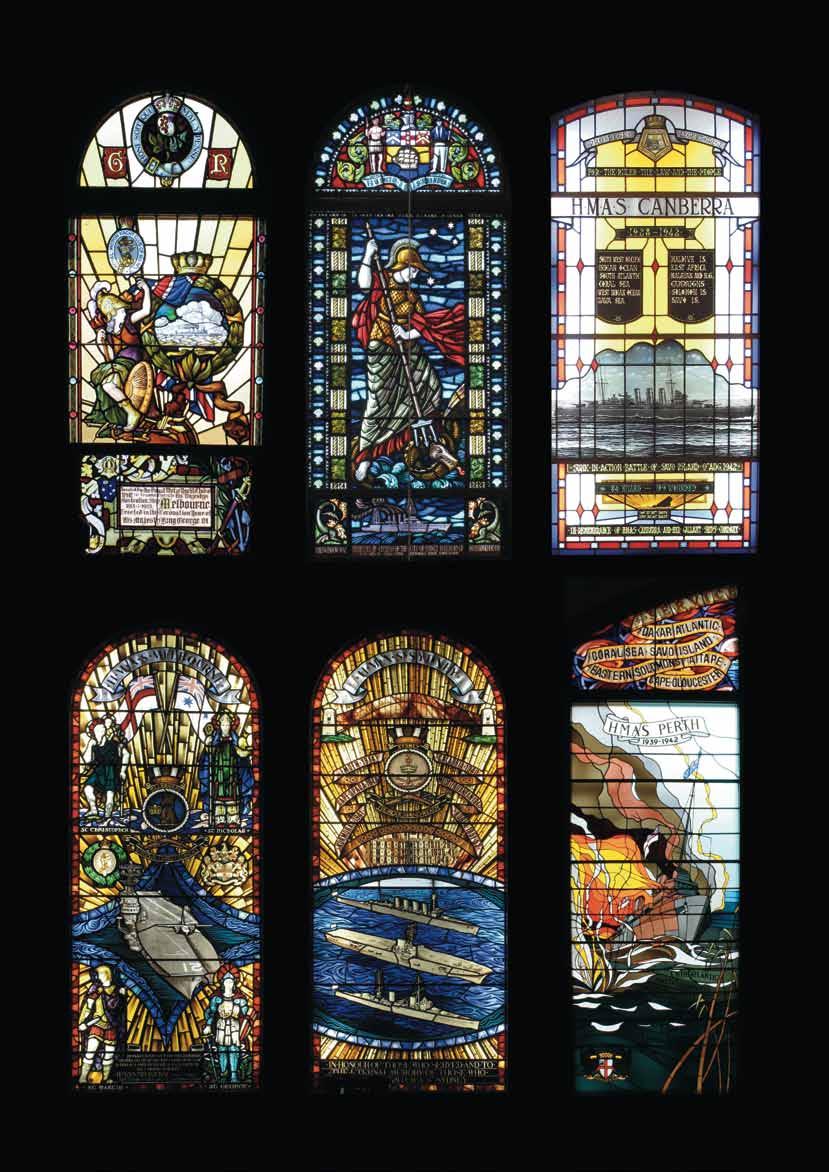
S IGNA l S 101 DECEMBER 2012 TO FEBR u AR y 2013 26
Hidden treasures Garden Island’s Naval Chapel
The succession of stained-glass styles installed in the Naval Chapel over the decades culminate in the window dedicated to HMAS Perth, bottom right, in a modern, almost Pop-Art style. The postWorld-War-2 commissions dedicated to aircraft carrier HMAS Melbourne and three HMAS Sydneys (bottom row, left and centre) display elements of Art Deco style familiar from other war memorials. Photography by Jeffrey Mellefont/ANMM
This spring, museum Members toured historic Garden Island, the Royal Australian Navy’s Fleet Base East and one of Sydney Harbour’s lesser-known heritage secrets. Their tour included the historic Naval Chapel, whose beauties are introduced here by the museum’s naval history specialist, senior curator Lindsey Shaw
Even though you can step off a public ferry onto Garden Island any day of the week, it has to be one of Sydney Harbour’s lesser-known heritage hideaways. You alight close to Sydney’s oldest colonial graffiti, carved in 1788 by personnel from the First Fleet flagship Sirius who were there to tend the vegetable garden that gave the island its name. Garden Island has had naval associations ever since – although it hasn’t actually been an island since it was joined to the mainland during the construction of the Captain Cook Graving Dock, a massive engineering work undertaken during World War 2. Today it’s home to the Royal Australian Navy’s Fleet Base East, to shipyard operator Thales Australia, and to the Naval Historical Society of Australia, who hosted our
recent Members tour. It’s the site of the Naval Heritage Centre, housing a slick modern naval museum and a smart café, as well as some truly splendid heritage buildings that reflect Garden Island’s long naval history.
The Naval Chapel, housed in the former rigging shed and sail loft known to those who work on the island as Building 37, is the jewel in Garden Island’s crown. To my mind it is one of the most beautiful of its kind in the world. It’s not just the magnificent stained-glass windows that recall the people and events that have shaped the Royal Australian Navy, but the building itself, which on closer inspection has so many tales to tell. There are threads within threads and stories within stories, all waiting to be discovered.
The chapel has been through many changes but has remained a place of constant peace and reflection. It is located in one of the oldest buildings on the island, a two-storey, stuccoed-brick structure with well-proportioned arches and columns that was built in 1886 and 1887 and was fitted out in 1889. Its dedication plaque is inscribed ‘VRI 1887’ – Victoria Regina Imperatrix in the grand language of those proud days of Empire, in which so much of the Royal Australian Navy’s traditions and customs are embedded. The lower level was the rigging house and the upper level was the sail loft, although by this time steam machinery was making its mark on shipping around the world and the sail loft was never really used to its full
S IGNA l S 101 DECEMBER 2012 TO FEBR u AR y 2013 27
Located in one of the island’s oldest buildings, the chapel has been through many changes but has remained a place of constant peace and reflection
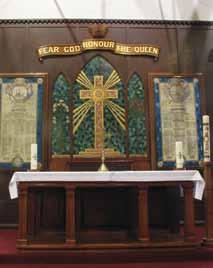
capacity. Today it’s the site of the Naval Chapel, which is used for annual memorial services, weddings, baptisms and funerals, though sadly there is little call for regular Sunday services.
The chapel as we know it today didn’t come into use until 1902. From 1890 church services were held in the upstairs dining room of another building, where chairs and a pulpit were arranged as necessary for services. This temporary arrangement lasted for 12 years before acting chaplain the Reverend Thomas Morgan somewhat audaciously suggested that part of the under-utilised sail loft on the upper level of the rigging and sail house could be taken over and converted for use as a naval chapel.
And so the chapel moved to what may at first have been considered another makeshift space, but which it has occupied now for 110 years. In order to separate the working part of the sail loft from the chapel a wall was installed – made of chicken wire and hessian! Obviously not everyone thought that the chapel was there to stay. This flimsy structure endured until 1958, when a more permanent wall was built of Masonite. In 1983 this dividing wall was rebuilt with attractive and functional tongue-and-groove timber.
The first decorative windows were installed in 1904, 1905 and 1906. Initially they were simply gelatin transfers over plain glass, rather than the coloured glass we see today. It wasn’t until 1932 that real stained-glass windows of cut and leaded glass, with design details painted on and fused or fired in kilns, began to be introduced and the gelatin ones were replaced.
It is these wonderful leaded-glass windows, in a variety of artistic styles representing the changes over many decades in this luminous art medium, that make this chapel so memorable. There are more than 20 stained glass windows in this building, as well as a variety of mosaics, murals and plaques; as you examine them you will read many names associated with great naval events from the service of the Royal Australian Navy. The chapel offers a veritable Who’s Who of Australian naval history. Here a few of my personal favourites.
When you enter the ground-floor vestibule of this building, look back and admire the windows that surround the doorway. Here there are two dedications – one to HMAS Perth (I) sunk in Sunda Strait in 1942 (see page 26), and the other to HMAS Australia (II) paid off in 1954 after 26 years of sterling service.
These windows are glorious to look at, but reading the battle honours takes you through all the major theatres of war for the RAN in World War 2 including the North Atlantic, Coral Sea, Greece and Leyte Gulf, to mention just a few. That is the beauty of this chapel –it takes you beyond Sydney and into the wonderful, wider world of our naval history.
And it’s not just places that transfix, but names too. The Perth window was unveiled by Rear Admiral Sir David Martin, the Governor of NSW from 1989 to 1990, whose father was Perth’s Executive Officer and second in command to Captain Hector Waller – both of whom died in the battle that sank the Perth One of the RAN’s current Collins class submarines is named Waller in the Perth captain’s honour. The Australia window was unveiled by Commodore Peter Dechaineux, whose father was commander of the ship during World War 2 and died of wounds at the battle of Leyte Gulf; another of the Collins submarines is named Dechaineux
Going up the broad stairway into the chapel above, you’ll come across the dual windows dedicated to the County class heavy cruisers HMAS Canberra and HMAS Shropshire. The Canberra was sunk during World War 2 in a pitched naval encounter, the Battle of Savo Island, between the Japanese Navy and allied forces supporting the US landing on Guadalcanal and Tulagi in August 1942. Britain’s Royal Navy then loaned the Royal Australian Navy HMS Shropshire, which was transferred to the RAN in 1943. The dedication ceremony for this window, back in 1994, was attended by more than 450 guests – more than the chapel could actually hold! I attended that day with my mother, whose family knew one of the Shropshire lads, so it has a special affection for me.
Occupying the place of heavy double doors that once graced one of the sail loft’s loading bays on the upper level is the window commemorating Australia’s first submarines – AE1 and AE2. With the forthcoming centenary of World War 1 almost upon us, it is worth remembering the sacrifice of these early submariners. AE1, sent to help capture German New Guinea at the beginning of the war, was lost with all hands off New Britain on 14 September 1914 and has never been located. AE2 braved Turkish gunfire and mines to successfully breach the defences of the Dardanelles on 25 April 1915. Running out of torpedoes and hemmed in by the enemy, AE2 was scuttled and its
top: The altar of the Naval Chapel.
opposite: The author and John Smith of the Naval Historical Society of Australia inspect the Sovereign’s Colours in display cases in the main chapel. The photograph is taken from the ‘prisoners’ gallery’ that overlooks the chapel.
S IGNA l S 101 DECEMBER 2012 TO FEBR u AR y 2013 28

S IGNA l S 101 DECEMBER 2012 TO FEBR u AR y 2013 29
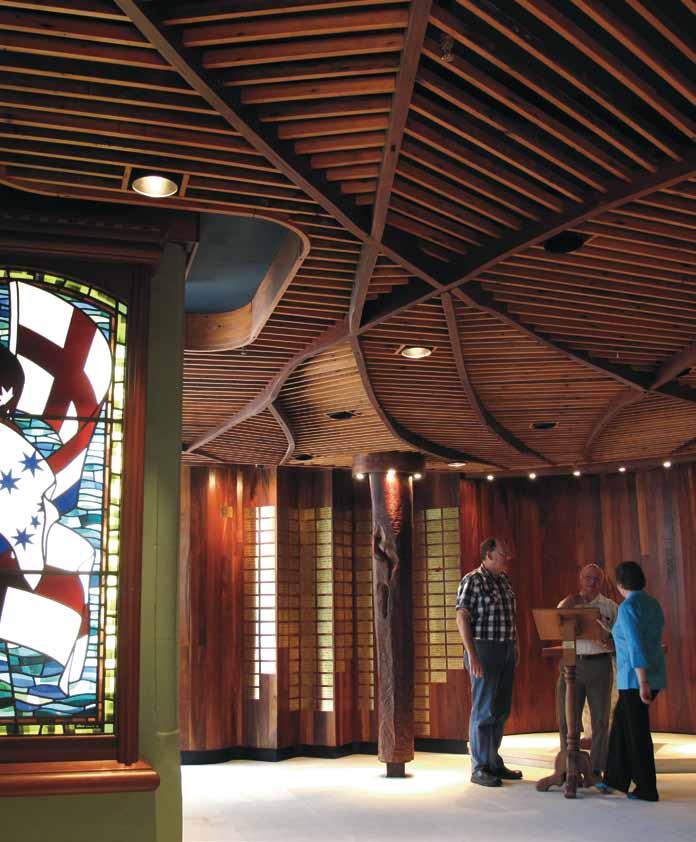
S IGNA l S 101 DECEMBER 2012 TO FEBR u AR y 2013 30
The Chapel of Remembrance, consecrated in 1996, offers a quiet place to remember naval loved ones. Its timbers reference the structures of wooden ships, including the adze-hewn masts.
crew taken prisoner. Their full story and many others will be featured in our own exhibition in 2014 highlighting the role of the Royal Australian Navy in the ‘war to end all wars’.
The structure of the building housing the Naval Chapel is also worthy of closer examination, both internally and externally. Two structures that stand out are the stairway and the gallery. There have been four sets of stairs over the years, culminating in the current set which was installed in 1996, and sweeps upwards to the chapel with grand presence. It has been made of recycled red and grey ironbark from the old Roads and Traffic Authority site at Botany, and Sydney bluegum from the Home Yardage Building (formerly the WD & HO Wills warehouse) at Kent and Bathurst Streets in the city.
At the top of these stairs you encounter the elevated gallery that once held 20 partitioned-off spaces for – prisoners! A prison for naval miscreants, opened in 1905 and demolished in 1948, was located at the southern end of the rigging shed that came to house the Naval Chapel. The prisoners, escorted to chapel services for their spiritual welfare, had their own entrance through the upper sail loft so as not to disturb the rest of the congregation. A wire mesh screen was added, it’s said, to stop them throwing missiles such as hymn books upon unsuspecting officers sitting below in the main body of the chapel! Today this prisoners’ gallery, minus its screenCof wire mesh, is accessed by its own set of stairs within the chapel and is used primarily for the RAN band, or for occasions when the main gallery is filled to overflowing. The modest-sized chapel can seat 329, with some dozens more in the upper gallery.
Three of the RAN’s Sovereign’s Colours (flags) are on display in glasstopped cases in the main chapel. They represent the service of the RAN to the reigning monarch of the time. One is for King George V and two are for Queen Elizabeth II. The second flag for Her Majesty was redesigned to take into account the introduction of the RAN White Ensign in 1967. There is no Fleet Colour for the reign of King George VI in these cases – its location is unknown. The current Sovereign’s Colour is held at the nearby naval administrative base known as HMAS Kuttabul, in the Sydney suburb of Potts Point. The name Kuttabul itself commemorates an important piece of Garden Island history. The original HMAS Kuttabul was a converted Sydney ferry moored alongside Garden Island
and sunk with the loss of 21 sailors during the Japanese midget submarine attack on Sydney Harbour on the night of 31 May 1942.
Other aspects of the chapel that simply ooze with history include the timber floors of the sail loft that are still caulked with oakum and bitumen, and the wrought-iron swing cranes adjacent to each of the major upper doorways that were used to get heavy ships’ sails to and from the upper floor. A large hook for holding the peaks of sails can still be seen today at the top of the wall over the main staircase.
The pews are made from timbers from long-gone warships. The truly magnificent pulpit, in the shape of a ship’s prow, is made from timbers from HMAS Westralia when it was being reconverted from its wartime role back to a passenger ship for Huddart Parker. The font comes from timbers from HMAS Encounter –formerly HMS Encounter – a ship with a long connection to Garden Island, from 1902 to 1929 when, as the depot ship for the island (renamed HMAS Penguin), it was sent to be scrapped at Cockatoo Island Dockyard on the other side of the Sydney Harbour Bridge.
The chapel bell originally rang on the famous clipper ship Sobraon, which between 1912 and 1927 became the naval school ship HMAS Tingira for the training of boys between 14-and-a-half and 16 for naval service. The ship’s chapel from the second HMAS Australia, removed when it was scrapped in 1955, now resides in the Protestant Side Chapel, created during refurbishments in 1983; it offers a unique chapel within a chapel.
In 1996 the Chapel of Remembrance was opened on the ground floor of the building, to the left of the main chapel entrance in what used to be the bookshop of the former Naval Dockyard Museum. Now memorial plaques with the rank, name, service dates, date of death and age of former serving members of the RAN are affixed to the walls. Arranged alphabetically, junior sailors now appear beside high-ranked officers, and it offers a quiet place of contemplation and remembrance.
At first glance the Chapel of Remembrance appears quite modern, but looks can be deceiving! The reception table in the vestibule is made of recycled stair treads of Tasmanian oak from the spiral stairway that originally gave access to the Naval chapel above, and hardwood recycled from the museum bookshop. When the floorboards of the bookshop were removed a number of artefacts –
Keep an eye out for the next Australian National Maritime Museum Members’ tour to this absolutely fascinating part of Sydney
including beer bottles, a spirit flask and a pair of boots – were uncovered, dating to the original construction of the building in 1887. The ceiling represents an inverted timber ship’s hull supported by adze-hewn timber masts; it is constructed of recycled kauri from the old Grace Brothers building in Broadway. Most of the timbers in the Chapel of Remembrance are more than 100 years old, ‘bringing with them their own history to mingle and be preserved with that of the Naval Chapel’, in the words of the Naval Historical Society of Australia’s 2010 book From Church to Chapel –A History of the Naval Chapel Garden Island, by Norman C Rivett.
There is just so much more to this chapel than first meets the eye. When you visit, it would be best appreciated by taking along a copy of From Church to Chapel. The book examines every nook and cranny, every plaque and window in wellresearched detail.
You can’t actually set foot on Garden Island from the landward side, the innercity suburb of Woolloomooloo, since there’s an unbreachable cordon of naval security. And while you can alight on the jetty on the northern side of the ‘island’, interrupting a ride on the public ferry from Circular Quay to Watsons Bay and reboarding it on its return, you can’t get far beyond the nearby public picnic grounds before encountering the security barriers of the RAN establishment. To visit the chapel and enjoy its beauty in stained glass, you’ll need to join a tour, which can be arranged through the Naval Historical Society of Australia (02 9359 2372).
Or keep an eye out for the next Australian National Maritime Museum Members’ tour to this absolutely fascinating part of Sydney – we return at least once every year.
S IGNA l S 101 DECEMBER 2012 TO FEBR u AR y 2013 31
100 Stories for
There are some 130,000 items that make up our collection and every object has an interesting story to tell, from the smallest button to the huge former Navy destroyer HMAS Vampire. Their stories represent the many people, from the everyday to the well-known, who are at the heart of Australia’s rich maritime heritage.
Just in time for summer holiday reading – and as the museum celebrates its 21st birthday, dating from its opening to the public on 29 November 1991 – this handsomely illustrated publication has been launched at the museum by the Honourable Simon Crean MP, Minister for the Arts and Minister for Regional Australia, Regional Development and Local Government. And in a new publishing milestone for the museum, 100 Stories from the Australian National Maritime Museum is available both as a beautifully produced print book, and as an eBook created with brand-new technology.

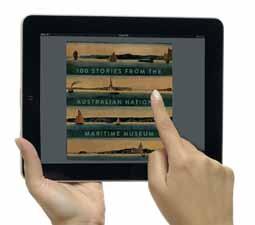
In its richly illustrated pages, the museum’s curators and writers reveal the fascinating stories behind this carefully chosen selection of objects, including the fastest vessel in the world (Spirit of Australia), a boat made from 2,000 beer cans, the hauntingly beautiful harbour frieze painted in 1907 by Muriel Binney, and surfboards inspired by the Bra Boys and the 2005 Cronulla race riots. They tell of the unforgettable people whose stories are part of our history, and who live on in our culture today.
Production of the publication began under the museum’s previous director, Mary-Louise Williams, who championed the idea of a book to mark a significant milestone in our history and the hard work that’s gone in, over a quarter of a century, to build the National Maritime Collection to what it is today. Then, under new director Kevin Sumption, who joined the museum early in 2012, the project took on a new dimension.
Developed in partnership with NewSouth Publishing, 100 Stories has also been created in the latest publishing technology using Apple’s iBooks Author software – as an eBook that can be downloaded free to iPads through Apple’s iBookstore. This has made it possible for the museum to take the stories behind its vast collection to a wider audience than ever before, including students, researchers and education professionals, not just across Australia but globally.
100 Stories from the Australian National Maritime Museum is available both as a beautifully produced print book, and as an eBook created with brand-new technology
This is not only the first eBook the museum has ever produced, it is the first eBook created by any museum in Australia using iBooks Author. It’s a technology that can push the boundaries of traditional publishing and bring stories to life, incorporating video and audio content while also making the content available to those with vision impairment.
Minister for the Arts The Hon. Simon Crean MP praised the initiative as he launched 100 Stories in October this year and announced that it would be available as a free download from the iBookstore for iPad. ‘This is one way this museum is reaching out to audiences beyond its site visitors, and providing greater and greater access to the collection as a rich resource for the community,’ said Mr Crean, whose portfolio of national collecting institutions includes the National Library of Australia, Australian National Gallery and National Film and Sound Archive.
Beautifully assembled and richly illustrated, covering more than two centuries of Australia’s maritime history, the traditional hard-copy version will make a wonderful addition to any bookshelf or coffee table.
Printed book is available from the museum’s retail outlet The Store and other booksellers, RRP $39.95. Discount price for Members
S IGNA l S 101 DECEMBER 2012 TO FEBR u AR y 2013 32
Christmas

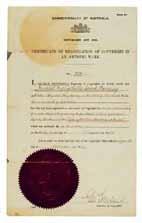






178 179 Sydney Harbour Foreshores at Sunset – a 20-metre-long panorama of Sydney Harbour – is an unforgettable work of art, with its 360-degree watercolour view of harbour life. Painted in four lengths as an architectural frieze designed for the home, it is a sweeping view of the harbour’s horizons, nooks, crannies, bays, beaches and boats, all bathed in the delicate tones of a late winter’s evening. It was painted in 1907 by amateur artist Muriel Mary Sutherland Binney, who went on to pursue her interest in inventing rather than painting, yet left this incredible view of her home town.
Binney Muriel Binney was born in St Kilda, Victoria, in 1873. Both her parents’ families were photographers and the young Muriel was schooled in arts and music. She was 33 years old when she painted this panorama, and lived in Elizabeth Bay with her husband, a doctor, and one small child. She produced this work for the First Australian Exhibition of Women’s Work, held in Melbourne in 1907, which aimed to showcase women’s work – to counter perceived neglect of their art, craft and industry – and to open up new avenues of work for women in professions and industries until then dominated by men. Binney also had an eye on business opportunities that might arise from the exhibition, applying at the time to copyright the frieze design and to produce a fold-out postcard or Christmas card. Although not awarded a prize in Melbourne, Sydney Harbour Foreshores was selected for the New South Wales Court of the Australian Pavilion at the Franco–British Exhibition held in London in Muriel Binney (1873–1949) Panorama of Sydney Harbour, Panel I, Woolloomooloo to Entrance of Parramatta River, Neutral Bay and Fort Denison 1907 Watercolour on paper on linen, 50.4 x 433 cm (height x length) Gift from Jeremy Grover, conserved with the assistance of the Vincent Fairfax Family Foundation < Commonwealth of Australia Registrar of Copyrights Muriel Binney’s certificate of registration of copyright in Sydney Harbour Foreshores at Sunset 1907 Ink on paper, 32.8 x 20.2 cm Gift from Jeremy Grover, conserved with the assistance of the Vincent Fairfax Family Foundation < Silver medal certificate diploma awarded to Muriel Binney at the FrancoBritish Exhibition in 1908 Ink on paper, 39.1 x 47.5 cm Gift from Jeremy Grover, conserved with the assistance of the Vincent Fairfax Family Foundation 1908. There Binney’s panorama and the child’s cot she designed were two of only three exhibits by women and she was awarded silver medals for both. In Sydney Harbour Foreshores our viewpoint is from the middle of Sydney Harbour with a shifting perspective of its major bays and landmarks, from the entrance of the Parramatta River in the west to the Heads in the east. > 222 223 Surfing The thrill, energy and appeal of surfing reached a wider public through film, music, multimedia, art, language, fashion and writing. This has helped surfing transcend being labelled simply as a sport, art, lifestyle or industry. It encompasses all these facets in what is now a vibrant global culture. In the late 19th century, ‘surfing’ referred to bodysurfing and swimming in the surf. Bodysurfing enabled swimmers to move past the threshold of the breakers and is believed to have been introduced to Australia by Tommy Tanna, a give a fast ride to shore. They were introduced in the mid1930s, and remained a common sight on Australian beaches until the 1970s. Since then, there has been a revival of retro surf-o-planes. In recent years Australian artists have drawn on the popularity of surfing to explore emerging tensions, bringing into question the ideal of the beach as a democratic space and a site of innocent fun and pleasure. Artists have also portrayed well-known surfing personalities. In 2000, the year that he won the Archibald Prize, Adam Cullen painted a portrait of Australian surfer Mark Occhilupo, who overcame a battle with drugs, alcohol and depression to become world champion at 33 in 1999. James Dodd and Phillip George have decorated surfboards to examine the stereotypes and notions of identity associated with the Australian beach. While Dodd’s surfboard, with its tattoo-like decoration, references the ‘Bra Boys’ brotherhood and their aggressive brand of Maroubra localism, George’s Eden surfboard is a response to the Cronulla race riots of December 2005. These events sparked a backlash against Muslims at Cronulla Beach. By combining the familiar surfboard with Muslim iconography George crosses a border between the familiar and unfamiliar, the local and the foreign, and between the secular and the fear of Islam. Penny Cuthbert Surfing is a transformative and immersive experience, moving at speed on a breaking wave where rider, board and wave are in a state of balance and harmony. It originated in pre-colonial Hawaii as he’e nalu (wave sliding) and then spread across the Pacific to Australia and California in the early 20th century. Today, for many, surfing is an integral part of going to the beach. Pacific Islander who taught the locals at Manly in the 1890s. From the 1920s, bodysurfers used hand-boards to hold a wave longer and to keep their head up throughout the ‘shoot’. Stand-up board riding was popularised in Australia by visiting Hawaiian Olympic swimmer Duke Kahanamoku, who gave demonstrations on a heavy alaia timber board at Freshwater Beach and Cronulla, Sydney, over the summer of 1914–15. Before the 20th century, thin, round-nosed and square tailed alaia surfboards were used by commoners and royalty in Hawaii. With developments in design and construction methods throughout the 20th century, surfboards became shorter, lighter and easier to turn across the face of a wave. Standing up or lying on a surfboard was not the only way to have fun in the surf. Plywood skimboards were particularly popular with children in the 1960s, and were used in a shore break for a skidding ride along the sand in shallow water. Shooting the waves lying on an inflatable rubber surf mat, or surf-o-plane, could also B W H, maker, Handmade wooden handboard, c 1929 Wood, leather, 24.2 x 19.5 x 2 cm > Adam Cullen (b 1965), Mark Occhilupo, 2000 Acrylic on calico 182 x 168 x 2.2 cm © Adam Cullen, reproduced courtesy of the artist < James Dodd (dob TBC) Bra Boys ‘Local Pride’ surfboard, 2004 Fibreglass, aerosol paint, 245 x 55 x 75 cm (dims TBC) © James Dodd, reproduced courtesy of the artist > Phillip George (dob TBC) Eden 2008 surfboard, 2008 Digital decal, fibreglass and polystyrene, 213 x 52 x 7 cm © Phillip George, reproduced courtesy of the artist Jeff Carter (1928–2010) Tribal Gathering, 1964 Silver gelatin print, 1996, 40.5 x 50.5 cm >
Muriel
S IGNA l S 101 DECEMBER 2012 TO FEBR u AR y 2013 33
Members
Making it memorable for Members
With Christmas nearly upon us, we hope this year at the Australian National Maritime Museum has been as enjoyable for all our valued Members as it has been for us.
I can’t tell you how much fun we have planning and then running all those activities for our Members, especially the ones that get us out on the water or at the very least beside it… on our fabulous replica of James Cook’s Endeavour, at the Quarantine Station, on Rodd and Garden Islands, to name a few. As usual we have included some snapshots, on this page, of some of our recent event highlights.
Of course those sorts of activities will continue in 2013. And so if you are looking for that last-minute Christmas or New year’s gift for friends or family, why not buy them a museum membership to enjoy all year long? Call us and we can send it direct to the recipient with a gift card in a matter of days. Here at the museum the summer holidays will be a great time for children and the young at heart, so be sure to bring your kids and grandkids with you. There’s the fascinating Ships and the Sea activity and learning centre that’s come to us from those nautical folk in Finland. Then after Christmas we will welcome the return of our kids’ action play centre WetWorld, on 28 December. There’s lots more action in the gallery of Pirates! with Circus
Monoxide’s Pirate Circus in mid-January… see the following pages for details. l ook out too for the kids fishing clinics right here at our wharves, back by popular demand. It’s all free for our Members! you can join us for the summer’s most festive days on Sydney Harbour, getting on the water for the start of the Sydney-Hobart yacht race on Boxing Day, and exclusively on the Endeavour replica for Australia Day. That evening we’re trying something new with our giant 1950s and ’60s themed party with a big band, sausage sizzle, pop-up bar and prizes for the best Aussie outfits... plus the premiere of the innovative light show on the museum’s rooftop (see page 42). Book early to be part of these – but please note that the Members office will be closed from Saturday 22 December 2012 to Wednesday 2 January 2013. Of course the museum will be open every day except Christmas Day, and don’t forget we extend the opening hours until 6 pm for the month of January.
Thank you for your continued support throughout the year and positive feedback about events this year. On behalf of the Members team and our Member volunteers have a safe and happy Festive season and New year. l ook forward to seeing you at the museum in 2013.
Diane Osmond Acting Members Manager


News
clockwise from above
Author David Hill and twin brother Richard recall their voyage as child migrants to Australia in 1957 on RMS Strathaird, the poster ship in our P&O 125th anniversary exhibition. David was here to speak about his latest book on the ‘Great Race’ between explorers Matthew Finders and Nicholas Baudin. Photographer Di Osmond/ANMM
Members enjoyed an exclusive springtime sail on Sydney Harbour on the replica of HM Bark Endeavour. Visiting British Museum executive Amanda Mayne met Members Bronwyn Gault, Gerry and lesley Smoulders. Photographer Di Osmond/ANMM
Members on tour to Garden Island to view its heritage treasures (including the Naval Chapel featured on page 26 ff), posing with a gun from the German raider SMS Emden that was destroyed by HMAS Sydney (I) during the First World War. Photographer J Mellefont/ANMM

S IGNA l S 101 DECEMBER 2012 TO FEBR u AR y 2013 34
top to bottom:
Members dressed enthusiastically Edwardian for our family picnic to that Sydney Harbour gem Rodd Island, just one of the ways in which we explored historic themes during the Titanic centenary year. The event was sponsored by National Parks and Wildlife Service, and HCBS Charters. Photographer Di Osmond/ANMM
Ships’ graffiti at the Quarantine Station on Sydney Harbour’s North Head, carved by bored passengers or crewmembers quarantined for long periods if their ship had arrived carrying cases of contagious disease. Members toured the historic site this spring. Photographer Annalice Creighton/ANMM
Members were offered a special deal to see Gilbert and Sullivan’s beloved comic opera The Pirates of Penzance at Sydney Theatre Company, in an unusual, awardwinning, all-male london production by Sasha Regan. The boys performed ‘I am the very model of a modern majorgeneral’ on the quarter deck of the museum’s Endeavour replica for a publicity call. Photographer J Mellefont/ANMM
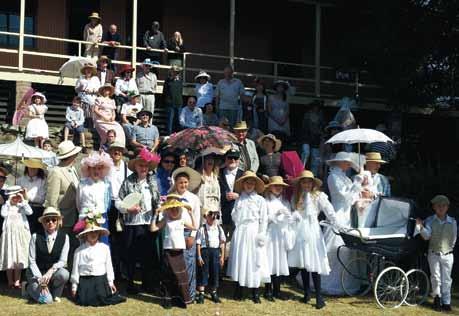
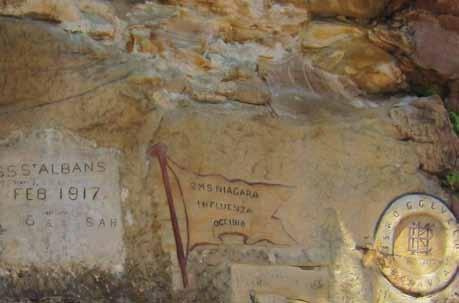
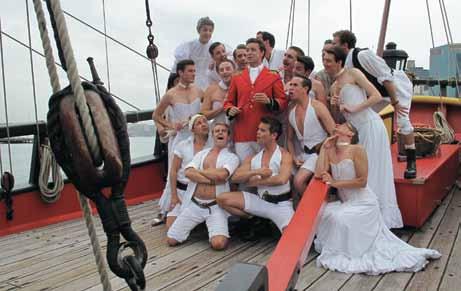
S IGNA l S 101 DECEMBER 2012 TO FEBR u AR y 2013 35
Members events Members events
Calendar Summer 2012–2013
Tuesday 18 Tour: Wharf 7 new Maritime Heritage Centre tour
Wednesday 26 On the water: Sydney–Hobart race-start cruise
Wed 9, Fri 11
Sat 12, Sun 13
Tuesday 22 Kids fishing workshops: Hook, line and sinker
Saturday 26 Australia Day: Aboard HMB Bark Endeavour replica
Saturday 26 Australia Day: Fireworks, light show and big band
February
Sunday 3
Conversations in the lounge: Myles Mooney: Conversation with music
Thursday 7 Walking tour: The Rocks and lunch at Swagmans Cafe
Thursday 14 On the water: Valentine’s Day harbour cruise aboard Lady Hopetoun
Thursday 28 Tour: Visit the SHF dockyard and workshop March
Sunday 3 Author talk: Flinders: The man who mapped Australia, with Rob Mundle
Saturday 9 Members regatta: Sydney by Sail 2013
Thursday 21 Phil Renouf Memorial Lecture: John young: Wooden boat building… NOT a dying art!

Tour
Wharf 7 new Maritime Heritage Centre tour
10 am–12 pm Tuesday 18 December
Wharf 7 Maritime Heritage Centre has had a facelift! Join senior curator Daina Fletcher for a behind-the-scenes tour of the revitalised collection management facility, workshops and library. Visit new exhibitions on the history of Pyrmont and the personalities and boats of Sydney Harbour. See the boats and hear their compelling stories, including that of recent adventurers attempting to kayak across the Tasman Sea: Andrew McAuley, who perished in February 2007, and James Castrission and Justin Jones who set out in November that year. Members $10. Guests $15. Meet in the Museum foyer at 10 am. Festive morning tea in Members lounge prior to tour. l imited numbers
BOOKINGS AND ENQUIRIES
Booking form on reverse of mailing address sheet. Please note that booking is essential: online at anmm.gov.au/membersevents or phone (02) 9298 3646 (unless otherwise indicated) or email members@anmm.gov.au before sending form with payment.
All details are correct at time of publication but subject to change.
Corporate Members The program provides Corporate Members privileged entry to the museum’s unique environment for corporate hospitality. Three membership levels each provide a range of benefits and services: Admiral three-year membership $10,000 one-year membership $4,000 Commodore three-year membership $5,000 one-year membership $1,850 Captain three-year membership $1,800 one-year membership $700 Captain Memberships Asiaworld Shipping Services Pty ltd Australia Japan Cable ltd Defence National Storage-RPA Google Australia HMAS Creswell HMAS Kuttabul HMAS Newcastle HMAS Vampire Association Maritime union of Australia (NSW Branch) Maritime Mining & Power Credit union Maruschka loupis & Associates Penrith Returned Services league Sydney Ports Corporation Regimental Trust Fund, Victoria Barracks Royal Caribbean & Celebrity Cruises Svitzer Australasia
December
January
Circus spectacular: Circus Monoxide Pirate Ship Circus
Tue 15
Sydney Harbour!
Australia
Thursday 17 Under the water: Explore the bottom of
Friday 18 Special book launch: A Parting Shot: Shelling of
left: Daina Fletcher & Cameron Mc l ean, photographer A Frolows/ANMM
Tasman kayak Lot 41 at Wharf 7
S IGNA l S 101 DECEMBER 2012 TO FEBR u AR y 2013 36

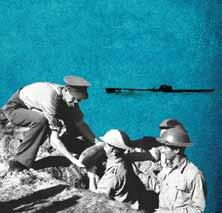
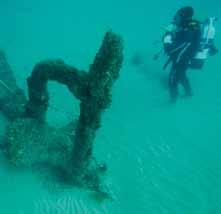
On the water
Sydney–Hobart race-start cruise on MV Mari Nawi
10 am Wednesday 26 December on Sydney Harbour
Farewell the Sydney to Hobart yacht race fleet on board the two-deck, 200-passenger-capacity charter vessel MV Mari Nawi. This is a big, comfortable viewing platform to make the most of Sydney Harbour’s most exciting and colourful event, joining the big Boxing Day spectator fleet to witness the maxis manoeuvring for the most advantageous position and then making that spectacular dash towards the Heads. Will it be spinnakers or a cut-throat tacking duel to be first out of the harbour? Take in all the colour, excitement and saltspray of this blue ribbon day.
BBQ lunch, complimentary tea and coffee. Cash bar. Members: adult $55 child $25. General: adult $70 child $35. Bookings: 9298 3646 or 9699 3491, or book online at anmm.gov.au/membersevents. Or www.tribalwarrior.org.
Circus spectacular
Circus Monoxide Pirate Ship Circus
Three shows per day: 11 am, 12.30 pm & 2 pm
Wednesday 9, Friday 11, Saturday 12, Sunday 13 & Tuesday 15 January
Go to the Pirates! exhibition and join in a rollicking good time as Circus Monoxide’s fantastical pirate antics transport you to a world of make-believe. Marvel at deathdefying pirates and flying Tinkerbelles. Cheer on courageous Peter Pan and howl at cunning Captain Hook and his wobbly plank. This is a show for the young of all ages!
Members FREE. Guests $15 or FREE as part of the Big Ticket
Special book launch
A Parting Shot: Shelling of Australia by Japanese Submarines 1942 Terry Jones & Steven Carruthers
10.30 am–12.30 pm Friday January 18
Meet the authors of this fascinating book that traces the story of the Japanese shelling of Sydney and Newcastle by submarine. Although casualties and damage were slight, the bombardments fuelled a real fear of an impending Japanese invasion. Revealing for the first time the contents of the bomb disposal squad’s war diary, the authors reconstruct events including the search for, recovery and disposal of unexploded shells. To put the attacks into perspective, the authors offer a Japanese context to the story through a critical account of Japan’s submarine operations, not only off the east coast of Australia but also along America’s west coast and in the Pacific and Indian Oceans. Why did the Japanese launch submarine operations in Australian waters if they had no intention of invading? Were the attacks revenge for the Japanese defeat at Midway? What were the Japanese targets in Sydney and Newcastle? Were all the unexploded shells recovered? Answering these and other questions, the authors dispel many enduring rumours and myths surrounding the attacks. A Parting Shot is more than an account of a significant event in Australia’s wartime story, it is a landmark story about luck, tragedy and courage.
Members $25. Guests $30. Refreshments will be served. Bookings essential 9298 3646
under the water
Explore the bottom of Sydney Harbour!
10 am–2 pm Thursday 17 January
Dive without getting wet! uncover the fascinating history that lies beneath Sydney Harbour. Explore submerged ships such as the Centennial and the Centurion through the live camera and commentary of the museum’s senior maritime archaeologist, Kieran Hosty. Watch Kieran’s dive on a large-screen TV on board a special dive boat and experience the underwater world while staying warm and dry!
Members $60. General $70. Tea, coffee and BBQ lunch provided
Kids fishing workshops Hook, line and sinker
10 am–12 pm & 12.30–2.30 pm Tuesday 22 January
This workshop teaches children responsible fishing practices and includes a segment on sharks and sustainability. l earn about conservation of fish habitats, sustainable fishing, knot-tying, line-rigging and baiting, casting techniques and handling fish. Discover what fish live in and around Darling Harbour and what they eat. Each child receives a prize and fishing tackle to take home, plus a certificate of achievement.
5–12 years. Members $25. Guests $30. Includes morning tea and refreshments. Children are fully supervised by RFT education officers and Members staff
right: Circus Monoxide photograph centre: courtesy of publisher far right: Kieran Hosty/ANMM
Circus Monoxide pirate ship circus
ANMM diver and Royal Shepherd propeller
A visiting submarine’s parting shot
S IGNA l S 101 DECEMBER 2012 TO FEBR u AR y 2013 37
Members events



Australia Day
Aboard the replica of James Cook’s HMB Bark Endeavour
10.30 am–2.30 pm Saturday 26 January
Join in the fun and excitement of Australia Day on the water, absorb all the colours of the annual Australia Day parade and see the famous ferrython aboard our very own Endeavour. Be part of the spectacular tall ships race, enjoy good company, music and the thrill of being in the most hotly contested race of the day.
Members $220. Guests $250. Entertainment, morning tea and picnic lunch included. Early bird bookings in December are only $200
Australia Day
Fireworks, light show and big band
7–10 pm Saturday 26 January
On the ANMM waterfront and Ben l excen Terrace
Boogie, jive and swing the evening away. Enjoy the museum’s light show and Darling Harbour’s firework spectacular while you groove to the sounds of the big band. Dress ’50s or ’60s style for the occasion and win a prize for the best outfit. Aussie BBQ and pop-up bar available.
Members $10. Guests $15. Special ferry pick-up and drop off at Milsons Point, Balmain East and Circular Quay wharves before and after the event for an extra $10/adult, $5/child
Conversations in the lounge Myles Mooney: conversation with music
3–4 pm Sunday 3 February
Join Myles for a musical trip down memory lane that begins in the Irish Air Corps in 1951 and takes in service with the united Nations in the Congo where he flew planes in the day and played in his rock ’n’ roll band Air Chords at night. After migrating to Australia as a 15-pound ‘Paddy’ from Ireland, he pursued a musical career in the Irish Drovers playing for cruise liners and children’s programs and, more lately, at his much loved Mercantile Hotel in The Rocks.
Members FREE. No bookings required
Walking tour
Tour The Rocks and lunch at Swagmans Cafe
10.15 am–1.00 pm Thursday 7 February
Walk the wicked waterfront at Sydney’s infamous Rocks district, between Circular Quay and the Sydney Harbour Bridge! Explore the sites, the narrow streets and the historic scenery, and hear stories of Sydney’s colourful past around every corner.
Members $35. Guests $40. Includes lunch at the Swagmans Post Courtyard Cafe
On the water
Valentine’s Day harbour cruise aboard Lady Hopetoun
10–11.30 am & 12–1.30 pm Thursday 14 February
Don’t miss this special chance to take a cruise on a classic vessel while you enjoy a very special Valentine’s morning tea. This luxury steam launch was built in Berry’s Bay in 1902 and named after the wife of the first Governor General of Australia. She is now owned and operated by Sydney Heritage Fleet.
Members $50. Guests $60 (limited spaces available). Includes refreshments on board. Meet in the museum foyer 30 mins prior to the cruise
Tour
Visit the SHF dockyard & workshop 10 am–1 pm Thursday 28 February
A unique half-day nautical experience visiting the Sydney Heritage Fleet collection of operational heritage ships and boats. Cruise aboard heritage vessel Harman to SHF’s Blackwattle Bay heritage docks and workshop. Finish your day with a cruise to Sydney Fish Market for fish and chips.
Members $25. Guests $30. Meet at tall ship James Craig for morning tea prior to tour
EMAIL BULLETINS
Have you subscribed to our email bulletins yet? Email your address to members@anmm.gov.au to ensure that you’ll always be advised of activities organised at short notice in response to special opportunities.
far left: J Mellefont/ANMM centre: Di Osmond/ANMM left: J Mellefont/ANMM
HMB Endeavour replica on Sydney Harbour
Members walk the wicked Rocks
S IGNA l S 101 DECEMBER 2012 TO FEBR u AR y 2013 38
Rivet-counting on John Oxley at SHF dockyard
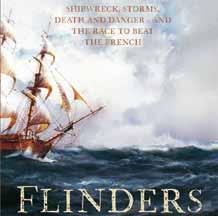
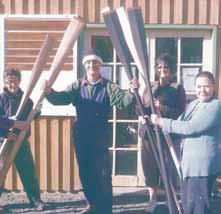

Author talk
Flinders: The man who mapped Australia, with Rob Mundle
2–4.30 pm Sunday 3 March
In the ANZ Theatre
The amazing story of the extraordinary man who was the first to chart Australia’s coastline. Rob Mundle brings Matthew Flinders’ fascinating story to life from the heroism and drama of shipwreck, imprisonment and long voyages in appalling conditions, to the heartbreak of being separated from his beloved wife for most of their married life. This is a gripping adventure biography brilliantly told!
Members $25. Guests $30. Book signing by the author. Includes Coral Sea wines and refreshments. Booking essential 9298 3646
Members regatta
Sydney By Sail 2013
10.30 am–2.30 pm Saturday 9 March
l earn the elements of sailing in style and practise manoeuvres to get your sealegs, then pit your skills against the competition on magnificent Sydney Harbour, all under the tuition of an experienced and helpful Sydney By Sail skipper. No previous sailing experience required.
Members $60. Guests $75. Includes morning tea and fish and chips in yots Cafe afterwards
Phil Renouf Memorial lecture
John Young: Wooden boat building… NOT a dying art!
6–8.30 pm Thursday 21 March
In the ANZ Theatre
The Australian National Maritime Museum and Sydney Heritage Fleet join forces once again to present this annual lecture in honour of the late, esteemed president of the Sydney Heritage Fleet, Phil Renouf. SHF is a community not-for-profit organisation with its offices and its oldest ship James Craig housed at ANMM’s Wharf 7, reflecting its long and close working partnership with ANMM. This year’s speaker is John young, respected Tasmanian boat builder and historian.
‘At community level, wooden boat building can be a catalyst for social transformation and a focus of pride and recovery of a sense of place’, says John. ‘Franklin, a little riverside town in southern Tasmania, has changed as its people have recognised the importance of its history as a thriving centre of wooden shipbuilding and its more recent wooden boat revival leading to an influx of people attracted by its beauty and social diversity. What was once a place from which young families fled in search of work, as the woodchip-based timber industry declined, is now creating new opportunities by reviving old skills and recognising the continued existence of its geographical advantages, and the talents of its people. Franklin now rises to the triple challenge of global financial crisis, peak oil and global warming by an innovative wooden shipbuilding and restoration program, that will establish Franklin as a tourist destination based on a continuing role for classic wooden ships and boats.’ ANMM and SHF Members $25. Guests $35. Includes Coral Sea wines and refreshments
Darwin–Singapore cruise
In Krait’s wake through the East Indies
25 September–8 October 2013
70 years after Operation Jaywick, celebrate the voyage of WW2 commando raider Krait on a special Expedition Cruise from Darwin to Singapore with the museum’s new travel partner APT. In September 1943 Krait carried 17 Australian and British commandos, disguised as Malay fishermen, through the enemy-occupied East Indies to attack Japanese shipping in Singapore Harbour. The legendary Krait, owned by the Australian War Memorial, is displayed, preserved and operated by the ANMM.
The luxury 100-passenger MS Caledonian Sky sails from Darwin on a 14-day cruise through the Indonesian archipelago with an expedition team that includes naturalists, an anthropologist, a military historian and a specialist on Indonesian maritime culture and history from this museum. Ten Zodiacs allow passengers to visit remote destinations beyond the scope of larger cruise vessels. As well as following parts of Krait ’s route, voyage highlights include Dili, Flores, Rinca (Komodo dragons), Sumbawa (where wooden ships are still made without plans), Bali, Banjarmasin and Kumai in Borneo (orang-utans), Belitung, Sekupang and Singapore. Museum Members will enjoy a special all-inclusive discount price. Book by 31 January 2013 and fly free (subject to availability and conditions).
For details and prices – and other APT itineraries exploring the waters of Australia and our region – call 1300 514 603 or visit www.aptouring.com.au. See ad on page 2.
right: courtesy of the publisher centre: courtesy John y oung far right: J Mellefont/ANMM
Meet the author, Rob Mundle Krait a floating war memorial
S IGNA l S 101 DECEMBER 2012 TO FEBR u AR y 2013 39
John young teaches oar-making too
Exhibitions
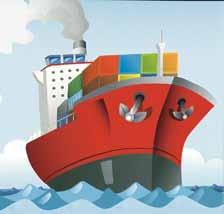


Ships and the Sea
From 7 December 2012
This hands-on exhibition highlights modern seafaring and its industry. Come and ‘operate’ a forklift to pick up containers, steer remote-controlled ships around the museum’s pond, design a ship of the future and rescue someone who’s fallen overboard. Visitors can explore port operations, safety at sea, navigation, seafarers’ stories and marine archaeology.
Visit the hands-on Ahoy AMSA! room – see an overview of the Australian Maritime Safety Authority (AMSA). Navigate your way through a range of kids games based on AMSA’s many activities in environment protection, safe shipping and search and rescue.
Adults and ages 8–12 years www.anmm.gov.au/ships


Pirates!
Until 24 February 2013
Cut loose your cutlass and enter the world of pirates in a rollicking kids adventure! Walk the gangway to the pirate ship, encounter the ghost of Blackbeard in the captain's cabin, search for loot in the dark pirate cave and beware of ghostly warnings. Test your skills with a pirate tongue twister, pick a pirate name and make your own pirate hat, seek out the clues to follow the treasure trail and encounter the Rogues Gallery.
Families with children 3–8 years www.anmm.gov.au/pirates
P&O celebrating 175 years
Until 3 March 2013
An exquisite selection of posters, photographs and prints from the museum’s extensive P&O archive marks the 175th anniversary of the iconic shipping line in 2012. P&O has played a significant role in Australia’s maritime and immigration history since the first mail service from the uK to Australia was established in 1852.

Wetworld!
Daily Friday 28 December 2012 to Monday 28 February 2013
This summer, battle it out on the museum’s wharf with super soakers and water pistols. Keep cool at this fantastic family water play area where non-stop action and fun begins.
Ages 5–12 years 10 am–4 pm (hourly sessions) www.anmm.gov.au/wetworld
ADMISSION
Refund of your entry fees if you become a Member during your visit!
Galleries Ticket
Adult $7
Child (4–15 years)/Concession $3.50
Family (2 adults + 3 children) $17.50
Members/Australian pensioners/ Children under 4 FREE
Big Ticket (Galleries & Exhibitions + Vessels + Kids on Deck)
Adult $25
Child (4–15 years)/Concession/ Pensioners $10
Family (2 adults + 3 children) $60
Members/Children under 4 FREE
Kids Adventure Ticket
Child $15
Access to Pirates!, Ships and the Sea, Wetworld and galleries
Group bookings (10 or more people) 20% discount on ticket prices
FREE ENTRY to galleries & exhibitions on the FIRST THURSDAY of the month (excluding public and school holidays)
Media partners
partner
Project partner Principal
centre: Photographer A Frolows/ANMM
Exhibition by
Seafaring with the nautical Finns
Water cannon action aplenty
Pirates and treasure for young and old
S IGNA l S 101 DECEMBER 2012 TO FEBR u AR y 2013 40
P&O liner SS Maloja on 1910 poster


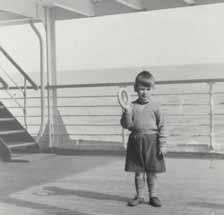
Wrecks and reefs
Until 2 April 2013
Through the underwater lens of maritime archaeology, explore four Australian shipwreck sites on remote coral reefs off tropical Queensland – the early colonial ships Mermaid, Porpoise, Royal Charlotte and Cato Vivid images by expedition photographer Xanthe Rivett follow the underwater team led by ANMM and reveal the unique marine environments they encountered. www.anmm.gov.au/wrecks
Expedition partner

Seaworthy & Seachange
Now open to the public
The Wharf 7 Maritime Heritage Centre foyer now houses a spectacular new display of classic watercraft plus engines and major artefacts, from Sydney Heritage Fleet and the National Maritime Collection.

Waves of Migration
26 January–17 February 2013
The museum’s iconic roofline, evoking sails and waves, becomes the canvas this summer for a dynamic new light show exploring migration to Australia and the compelling stories of those who’ve come across the seas. From convicts and early settlers to Ten Pound Poms, displaced persons and seaborne refugees, Australia is a nation of migrants. Premieres on Australia Day!
Daily after dark www.anmm.gov.au/lightshow
HM Bark Endeavour replica
lt James Cook’s immortal ship is open to the public and school groups for tours of her upper and lower decks, with cabins and living spaces authentically fitted out as they were in 1770 – just as though the officers, scientists and men who sailed with Cook had stepped out for a moment.
Tour of the ship included in Big Ticket. Members FREE. Check opening dates and times on 02 9298 3777 www.anmm.gov.au/endeavour
Barque James Craig
Sydney Heritage Fleet’s magnificent 1874 iron-hulled barque James Craig was recommissioned in 2000 after an awardwinning 30-year restoration – one of only four such vessels in the world that are still sailing. The ship is open for inspection daily, though please note that she sails on some Saturdays or Sundays.
Joint ticketing with the Sydney Heritage Fleet. Sundays. Check www.shf.org.au for inspection and sailing details
ANMM travelling exhibitions
On their own –Britain’s child migrants
24 November 2012–10 February 2013
National Archives of Australia
23 February–28 April 2013
Albury LibraryMuseum
From the 1860s until the 1970s, more than 100,000 British children were sent to Australia, Canada and other Commonwealth countries through child migration schemes. The lives of these children changed dramatically and fortunes varied. Some forged new futures; others suffered lonely, brutal childhoods. All experienced dislocation and separation from family and homeland.
A collaboration between the ANMM and National Museums l iverpool, uK

Wrecks, reefs and the Mermaid
Manning Regional Art Gallery, Taree NSW 7 December 2012 – 3 March 2013
Photographs by Xanthe Rivett illustrate the museum’s work during two archaeological expeditions to remote coral reefs off the coast of Queensland.

below: A Frolows/ANMM right: Xanthe Rivett 2009 centre: The Electric Canvas far right: Reproduced courtesy Sydney l ee Exhibitions
Child migrant Stewart lee, 1955
Rooftop light show
Diving on the Mermaid anchor
The famous Taipan, Wharf 7 foyer
S IGNA l S 101 DECEMBER 2012 TO FEBR u AR y 2013 41
Waves of migration
The museum’s iconic roofline becomes the canvas this summer for a dynamic new light show exploring migration to Australia and the stories of those who’ve come across the seas to this nation of migrants. Curator Kim Tao outlines an exciting modern medium that the museum is exploring for the first time.
Sydney’s Darling Harbour since this maritime museum for a nation opened in 1991. But this is the first time the façade of the building will become an extension of the exhibition space, literally bringing the inside out.
For those who’ve come across the seas
We’ve boundless plains to share…
These lines from the second verse of Australia’s national anthem have always intrigued me. As a young migrant they had a particular resonance. They now take on a different meaning in the context of current Australian political and public debates about immigration, asylum seekers and unauthorised boat arrivals. The lines have also provided the inspiration for a dynamic new light show, Waves of migration, which premieres on Australia Day 2013 – on the roof of the Australian National Maritime Museum.
Our museum has one of the most distinctive façades of any in the world. Its soaring roofline, evoking sails and waves, has been an iconic feature of
The museum’s new light-show program offers an exciting opportunity to use the dramatic, rapidly evolving medium of digital projection to explore contemporary maritime subjects in an engaging, immediate and accessible way. The program aims to put a spotlight on current issues, and there are few issues with more currency than immigration. It seems nearly every day we are confronted with media images of dilapidated refugee boats, overcrowded with families clutching the remnants of uprooted lives. We witness – or are part of – unfolding political debates about refugee policy, border protection and the offshore processing of asylum seekers. In the midst of this discourse we can sometimes forget that much of Australia’s history and national identity has been influenced by the migration of people from across the seas.
One of the roles of this museum is to provide historical context to contemporary debates, and to give a voice and a presence to those who have peopled our maritime history. We do this through our exhibitions and research, education, publications and public programs, and our collecting activities.
Over the past two decades we have built a diverse collection of more than 10,000 objects spanning the many waves of Australia’s migration history. These objects encompass a fascinating array of personal stories, from British convicts and early settlers, to Jewish refugees and displaced persons from wartorn Europe; from Japanese war brides and 10-pound Poms, to Indochinese boat people and seaborne asylum seekers from
Iraq and Afghanistan. For our inaugural light show we wanted to weave together this rich tapestry of migration stories, and to encourage audiences to reflect on the current immigration debate by demonstrating the historical continuity of migration by sea.
We commissioned award-winning Australian architectural projection specialists The Electric Canvas to develop an animated show that highlights the connections between these phases of migration to Australia. It opens with an Indigenous fisherman in a bark canoe, to acknowledge that Indigenous Australians are the only ones to have witnessed all the waves of migration to this country. It then follows the journey of a single migrant boat, changing its form across oceans and cultures and through the passage of time. The boat and the ocean, constants throughout the narrative, correspond with those other tangible symbols of our maritime experience, the sails and waves of the museum’s roofline, which are the canvas for the thoughtprovoking eight-minute projection.
The boat emerges as Endeavour departing England in 1768 under the command of Lieutenant James Cook to observe the Transit of Venus and search for the legendary Great South Land. It transforms into the First Fleet convict transport Charlotte and then a clipper ship carrying Chinese migrants to the Australian goldfields, before struggling to make its way through a sea of early 20th-century, White-Australia-policy paperwork.
The boat transitions into a post-World War 2 migrant liner passing through a ruined European landscape, transporting displaced persons and assisted migrants to new lives in Australia. It contracts into a small fishing boat loaded with refugees escaping the aftermath of the Vietnam War, before devolving into a decrepit
S IGNA l S 101 DECEMBER 2012 TO FEBR u AR y 2013 42





The show employs a cyclical storytelling device that also emphasises the cyclical nature of Australia’s migration history
Indonesian fishing vessel carrying asylum seekers on the last leg of their voyage to Australia. The boat then re-emerges in the present day as our Endeavour replica, and arrives in Sydney Harbour alongside the museum.
The show employs a cyclical storytelling device that also emphasises the cyclical nature of Australia’s migration history. It asserts that our history and identity as an island nation have been, and continue to be, shaped by immigration.
The light show will be supported by a dedicated website at www.anmm. gov.au/lightshow, with links to our immigration collection, a facility for people to share their migration stories and an online forum to discuss issues relating to immigration.
Waves of migration will be projected onto the museum’s roof every night from 26 January to 17 February 2013. The launch date, on Australia Day, is significant. As thousands of migrants prepare to sing the national anthem at citizenship ceremonies around the country, it is an opportune time to reflect on the current immigration debate, our national identity and rich migration heritage, and the compelling stories of those who’ve come across the seas.
www.anmm.gov.au/lightshow
The Electric Canvas’s visualisations for Waves of migration: working sketches for a vivid digital light spectacle that you can see each evening from 26 January to 17 February.
S IGNA l S 101 DECEMBER 2012 TO FEBR u AR y 2013 43
Indigenous watercraft accolades and activities
The museum’s May 2012 conference ‘Nawi – exploring Australia’s Indigenous watercraft’ has stimulated community action Australiawide, and won awards from state and national museum umbrella bodies, writes senior curator Daina Fletcher
As reported In the last issue of Signals, our conference program ‘Nawi – exploring Australia’s Indigenous watercraft’ – the first-ever such national, multidisciplinary event – featured active collaboration between theorists and practitioners, recovering and passing on knowledge and boatbuilding techniques. It tapped into the growing interest by communities that were looking to their watercraft heritage as a means of sustaining cultural knowledge and values at individual, family and community levels.
In those communities momentum has been growing, while the museum’s
broader Nawi project – an ongoing national collaborative research and outreach program – now encompasses events, conferences, publications and education programs about Indigenous watercraft. We can see the growing awareness, relevance and importance of this area of study to Aboriginal and Torres Strait Islander people by the number of initiatives in those communities.
This is a brief review of what’s been happening. We’ll be reporting in more detail in future editions of Signals and in our ongoing Nawi web site www.anmm.gov.au/nawi.

S IGNA l S 101 DECEMBER 2012 TO FEBR u AR y 2013 44
The Saltwater Freshwater Arts Alliance based at Coffs Harbour represents Aboriginal Land Councils and language groups from the mid-north coast of New South Wales, where canoes were integral to traditional society. Its executive officer Alison Page was the Nawi conference patron. One of its recent canoe-related projects has been the making of delicate ceramic canoes by women from Forster. Another is an extension of the Kempseyarea Dunghutti watercraft project, which was presented at the conference, to the Birpai community of Port Macquarie and Wauchope. Canoes from both communities will feature at the Saltwater Freshwater Arts Festival in Taree in January 2013. The museum has been invited to take part at the festival in workshops, talks and building models.
Further north Lyndon Davis and the Gubbi Gubbi community of artists and dancers from the Sunshine Coast in Queensland have made progress on their canoe building project, which was introduced at our conference last May. Their canoes will be launched at the Floating Land Festival in Noosa in May 2013, with an exhibition of their making at the Noosa Regional Art Gallery, with imagery by James Muller.
In a new program in Gippsland, Victoria, the SV Pelican and the Gunai/ Kurnai community is engaging youths and elders with their sea country around Wilsons Promontory, with the eventual plan to build a number of traditional canoes. The Wurundjeri people around Melbourne have embarked on a Koorong (canoe) project assisted by the Merri Creek Management Committee and several other collaborating bodies.
On the south coast of NSW an Australian National Maritime Museum MMAPSS grant has gone to the Jerrrinja Local Aboriginal Land Council in the Jervis Bay and Shoalhaven River area for building four canoes, with representatives from the community, juvenile justice system, local schools, National Parks and Forestry NSW. The group visits the
museum in December 2012 to view our collection of watercraft and talk about the project. This follows an earlier MMAPSS grant to the Ulladulla Local Aboriginal Land Council which produced three canoes, reported in Signals No 99. Its local representative Paul Carriage has become a critical resource in other south-coast canoe building programs – demonstrating the multiplier effect of these grants, which continue to assist and enable other communities to reclaim and pass on cultural knowledge.
The museum continues to develop its practical interest and expertise in traditional Indigenous knowledge and European documentation of watercraft. The collaborative work of the museum’s curator David Payne, reported in previous issues of Signals, continues. He will be building large-scale models of nawi – the Sydney and east-coast style of tied-bark canoe – with students and community Elders at Chester Hill High School. Our education officer Jeff Fletcher is developing learning methodologies and modules to accompany such workshops.
A two-metre-long model of an eastcoast style nawi, made during the handson workshop lat our conference in May, has been exhibited at venues in Sydney and Canberra. It was displayed in an exhibition by Indigenous interactive artist Brett Leavy entitled Virtual Warrane II at Sydney’s Customs House at Circular Quay, or Warrane as it was named by the Gadigal people. The model then travelled across the harbour to Mosman Art Gallery to be displayed in an exhibition celebrating the Indigenous seafarer Bungaree (see story on page 65).
Another model is currently in Canberra at the Gallery of Australian Design for the National Architecture Awards.
Meanwhile David has continued to experiment with modern interpretations of traditional watercraft forms.
In consultation with the Ngarrindjeri community from South Australia, a local Murray River yuki has been built in plywood, working towards a modern
Our conference and program has won two museum industry awards on
the strength of its community
engagement
production canoe based on Indigenous Australian designs. It joins one of David’s earlier experiments with canoe design ideas in plywood, a ‘Ten canoes style’ nardan from northern (central) Australia. In January 2013 this nardan will be paddled into Darling Harbour as part of the Welcome To Country for the launch of the Sydney Festival.
In this way Indigenous canoes are returning as a regular feature at Sydney Harbour events. The Sydney nawi built for our conference last May remain active. With hearth fires lit, some of them took to the water in Darling Harbour again at the opening of our Classic & Wooden Boat Festival in October. In March next year canoes will feature at the Message Sticks Festival at the Sydney Opera House to commemorate 200 years since Woollrawarre Bennelong’s death.
The other big news is that our conference and program ‘Nawi –exploring Australia’s Indigenous watercraft’ has won two industry awards for public programs on the strength of this community engagement. The first was the Museums and Galleries National Award (MAGNA) for public programs, from the national umbrella body Museums Australia. The second was a NSW Museums and Galleries Association Imagine award. Winning both awards is a huge assertion of the importance of Indigenous watercraft as one of Australia’s great national stories, until now under-recognised.
The MAGNA judges described the conference as: ‘A well-designed program with strong community involvement… Nawi reconnects a little-researched aspect of Australian maritime history into a contemporary setting while establishing a model for sustaining a lost Indigenous cultural practice. The museum has acted as a catalyst for the community to come together with ideas, knowledge and skills, forming a self-sustaining relationship.’
This is an ongoing collaborative program that we are proudly continuing to nurture.
opposite: At the opening of the 2012 Classic & Wooden boat Festival, Jamal Daniel and Ezekiel Phillips from the Tribal Warrior Association launched two nawi from a pontoon alongside their Indigenous sail training vessel Tribal Warrior
S IGNA l S 101 DECEMBER 2012 TO FEBR u AR y 2013 45
Photographer Brian lowe, Catapult Creative Productions
South Australian Maritime Museum
The South Australian Maritime Museum’s collection began in 1872 to preserve, explore and celebrate the human history of the state’s oceans and rivers. It’s one of Australia’s great nautical collections and quite possibly the oldest, writes the museum’s director Kevin Jones.
The Henry Weman building in the heart of historic Port Adelaide is a miscellany of corrugated iron, timber and brick built in 1887. It is precious as one of the few vernacular buildings in Port Adelaide’s heritage precinct, and I have always thought that its history sums up much about the port. Upstairs is an open loft where sail-makers once spread their cloth. Downstairs, Henry Weman ran a ship chandlery that also functioned as a corner store. His clientele ranged from hardy seafarers who had rounded Cape Horn and crossed the equator, to locals who spent their lives living and working in the port.
It is that relationship between the local and the international that is at the heart of the South Australian Maritime Museum. Our collections policy sets two goals for the maritime museum. One is to collect and exhibit the social history of Port Adelaide, a place that has a distinct local identity. The other is to preserve the maritime heritage of South Australia, a coast that witnessed the last of the great iron windjammers sailing the longest trade route in the world, carrying grain to Europe as late as 1949.
Port Adelaide Institute
Our collection has a long history, with claims to being the oldest nautical collection in Australia. The Port Adelaide Institute was formed in the 1850s. It was part of the 19th-century movement for self-improvement that preceded government-funded public libraries, schools and museums. First established in 1851 by businessmen and community leaders, it grew to become a cultural and social centre of the port that offered members a lending library, newspapers and magazines to read. Its branches spread along the coast to nearby Henley
Maritime heritage around Australia
Adelaide SA
Beach and Kangaroo Island. The Institute began a museum collection in 1872 and it grew with donations from members. The collection included seafarers’ souvenirs of voyages to the Pacific and mementoes of famous ships. They ranged from manufactured souvenirs such as a plaque made from the copper sheathing recovered from Horatio Nelson’s ship Foudroyant, to weathered pieces of timber that had been retrieved from local shipwrecks. Many of the items are very significant. A piece of the hull of the German light cruiser SMS Emden bears a shell hole from its battle with HMAS Sydney in 1914, when it was destroyed at North Keeling Island in the Indian Ocean. It’s a graphic memento of Australia’s first naval victory.
In the 1920s the collection was given a clear focus on maritime heritage, and other unrelated material such as taxonomic natural history specimens and European paintings were culled. Much of the collection of the (then) Port Adelaide Nautical Museum is displayed in a dedicated exhibition within today’s museum, in its original cedar showcases and preserving some of the original handwritten descriptive labels. It is a charming remnant of past museum practice and many visitors do love to pick through its miscellany of objects. We have tried to impose some order on the collection, and provide enough contemporary interpretation to make sense of the collection while preserving the spirit of a 19th-century museum.
Vernon Smith was the energetic curator of the collection in the 1960s, who made it his goal to build one of the finest collections of figureheads anywhere. Vernon found figureheads in sheds and gardens, above doors and in farmers’ paddocks. He wrote modest
S IGNA l S 101 DECEMBER 2012 TO FEBR u AR y 2013 46
opposite: Active II was constructed by shipwrights inside the maritime museum in 1986, a replica of one of South Australia’s famous ‘mosquito fleet’ of trading ketches that was originally built in 1873. All photographs courtesy of South Australian Maritime Museum and History SA.
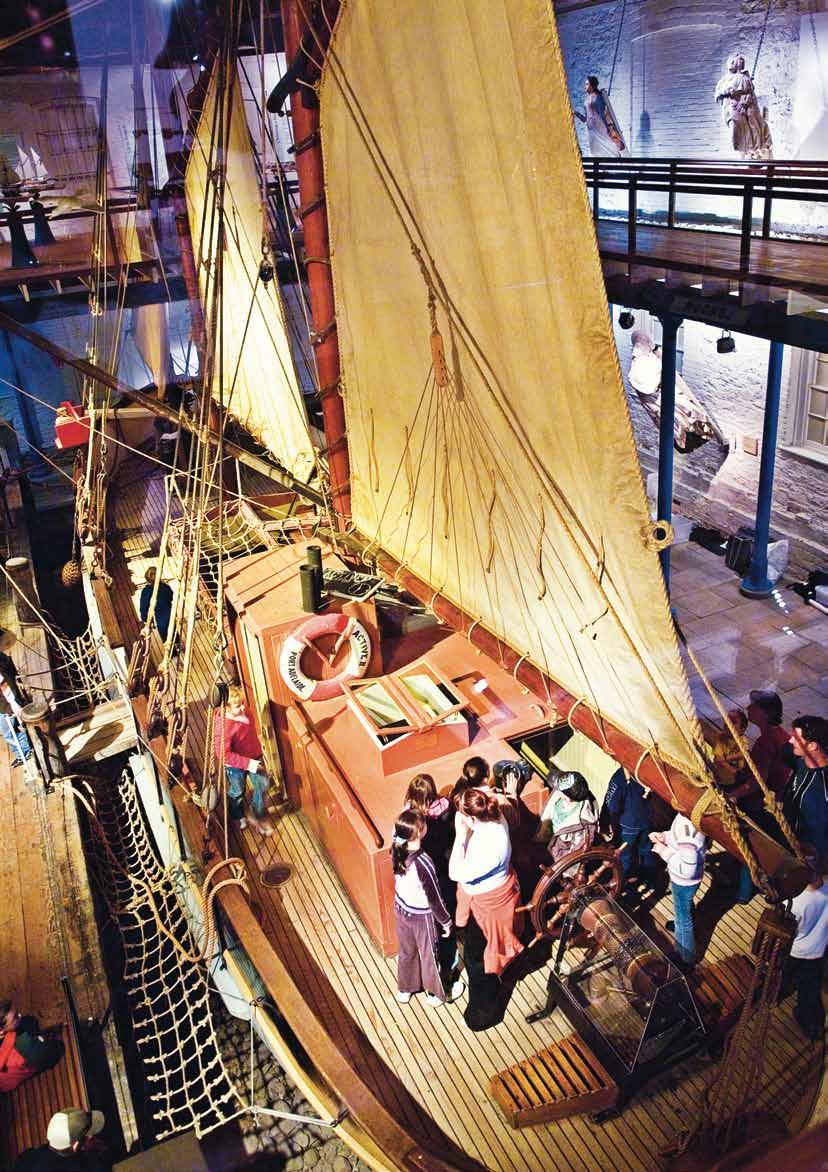
S IGNA l S 101 DECEMBER 2012 TO FEBR u AR y 2013 47

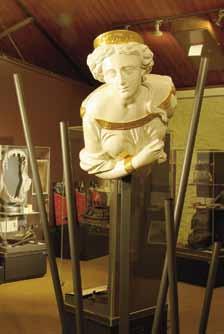
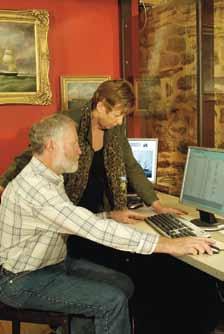
this page, clockwise from below:
Model of a South Australia ‘mosquito fleet’ trading ketch Annie Watt, built 1870. Its hull is preserved in the SAMM collection.
Research centre for family historians. Volunteers have assembled a comprehensive database of passenger lists from ships arriving in South Australia from 1870 to 1967, and it’s now being extended.
Figureheads: the elegant Star of Greece, wrecked off Willunga, South Australia, in 1888; harpooner from the Ville de Bordeaux opposite, top to bottom
Detail from Active II
Telling the notorious story of the Dutch East Indiaman Batavia’s shipwreck off the western coast of Australia in 1629.
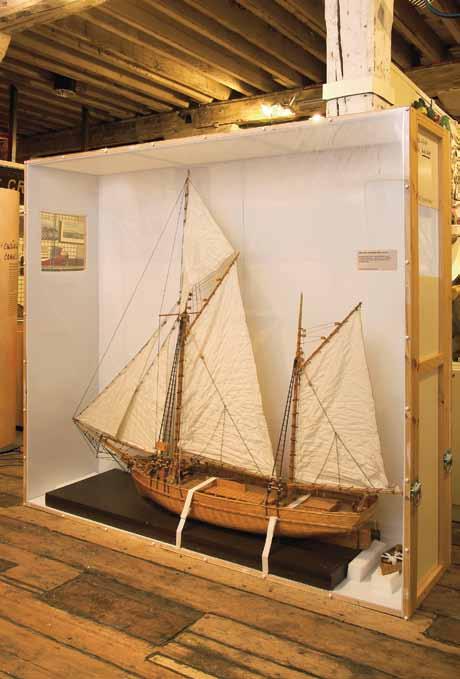
S IGNA l S 101 DECEMBER 2012 TO FEBR u AR y 2013 48
accounts of summoning his courage to enter the homes of strangers, to quietly ask that they surrender their figureheads to his collection. His legacy is the largest collection of figureheads in Australia, numbering 17; each has its own story of the coastal or international trades.
Not all figureheads are female figures. The oldest one in the collection is the manly, bearded harpooner from the Ville de Bordeaux. This French whaler built in 1836 spent two years in the Pacific to fill its holds with barrels of oil, but was a ship plagued with problems. It was stopped by customs in Sydney and Fremantle, and seized by harbour authorities in Port Adelaide because it had unpaid port dues and was unseaworthy. The Ville de Bordeaux was used as a lightship at the entrance to the Port River and later as a coal hulk. Its figurehead was encountered by Vernon Smith in a basement of South Australia’s National Gallery, and it was acquired by the Port Adelaide Institute’s nautical museum. Decades later, in 2004, we were given the stern board, a timber insignia, from the same vessel. The carving had been displayed on the wall of a garden shed in the seaside suburb of Semaphore.
Maritime history, social history
Our museum holds a rich collection with a long history but it also has a record of finding new approaches to interpreting history. The South Australian Maritime Museum opened in 1986 as a State Government institution to mark the state’s 150th anniversary, and to lead the development of Port Adelaide as a visitor destination. Port Adelaide has been the centre of shipping since the colony of South Australia was founded in 1836, but by the later 20th century was run down and in need of revitalisation. In 1982 the port centre was the first area in South Australia to be declared a heritage precinct and its charming streetscapes present one of the most intact collections of 19th-century buildings in Australia. This provides a rich context for a museum and I believe the histories that we explore have more meaning to our visitors because we tell stories in the place where they happened. We present our exhibitions in a pair of stone-built bond stores that were erected in the 1850s; visitors can readily sense the presence or at least the ambience of those generations of stevedores and cargoes that have crossed their floors. We also preserve a 19th-century bank building and Henry Weman’s chandlery.
The museum began with a focus on engaging visitors, as much as goals of preservation. Like other museums of the time it looked to social history as a way to make the past relevant to a broad audience. Much maritime history and many maritime museums had been the preserve of technical specialists and nautical enthusiasts, and the South Australian Maritime Museum was one of the first to take its stories to a general audience.
[In that respect it was a precursor to the Australian National Maritime Museum which shared that social history focus as it, too, developed – unsurprisingly, perhaps, since both were led to their opening by the same director, the Melbourne historian Dr Kevin Fewster, who is now director of the National Maritime Museum in Greenwich, England. Editor]
The replica ketch Active II fills the museum’s entrance gallery. It tells the story of South Australia’s famous ‘mosquito fleet’ of ketches that linked town and country around South Australia’s gulfs from the 19th century up to the 1970s. They carried farm products, grain and minerals to the city and took anything from groceries to farm machinery to rural ports. The ketches were rough, modest-sized working craft crewed by tough seafarers. Typically fitted with centreboards and flat bottoms so they could negotiate shallow waters, they gained the ‘mosquito’ tag because they could flit across the mudflats.
Active II was built by shipwright Bill Porter and rigged by sail maker Don Lucas in 1986. It’s a replica of the first Active that was built in 1873 and worked the coast until 1959. This popular display shows how tough the ketch trade could be. Ketches were typically crewed by a skipper and one or two hands. Boys wanting to go to sea could gain their first experience in ketches before moving to steamships. Not just skilled in vessel handling, coastal navigation, rigging, mending and cooking, the versatile ketch hands also stuffed the holds with sacks of grain or bales of wool weighing more than 50 kilograms. Cattle were loaded directly from the beach, hoisted aboard using the rigging. Decks might fill with sheep, the crew running across their backs like sheepdogs.
The lighthouse near the bond stores is Port Adelaide’s icon. It stands at the end of Commercial Road marking the place where the city meets the river, and visitors can climb the 74 steps and take in the views of Port Adelaide, the coast and 0ver the city to the Mount
It is that relationship between the local and the international that is at the heart of the South Australian Maritime Museum


S IGNA l S 101 DECEMBER 2012 TO FEBR u AR y 2013 49
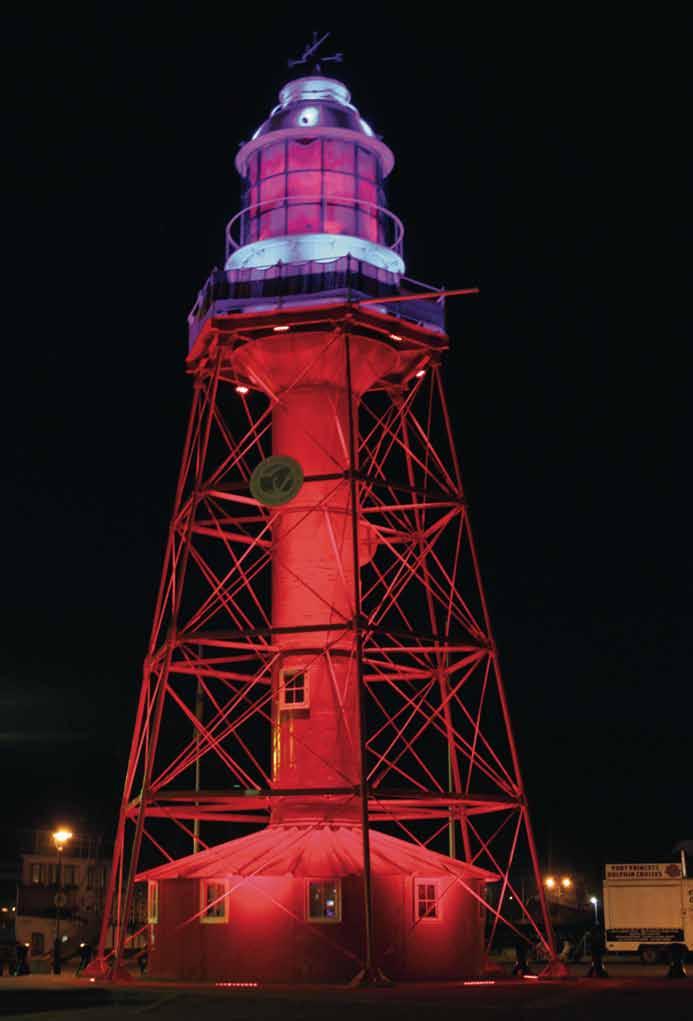
S IGNA l S 101 DECEMBER 2012 TO FEBR u AR y 2013 50
At
a place he named Memory Cove Flinders left an inscribed copper plaque that carries the warning Nautica Cavet –sailors beware
extracts from these voyages for readers to follow 175 years later. For the first time, it brought together the extant logs and diaries that document the foundation of the province of South Australia and annotated them with careful research to introduce the people on board, the technicalities of sailing and the language of the sea. You can visit the site at www.boundforsouthaustralia.net.au.
Lofty Ranges. Erected originally at the entrance to the Port River from prefabricated iron shipped in pieces from England, and first lit in 1869, it replaced a lightship that marked the harbour entrance. In 1901 the lighthouse was dismantled and relocated. The lantern was installed in a lighthouse on Wonga Shoal, off Semaphore Jetty. The iron structure was re-erected on South Neptune Island with a new lantern and served there until 1985. The lighthouse was restored and re-assembled on its current site in 1986.
The museum offers public cruises on Yelta, South Australia’s last working steam tug. It was built at Sydney’s Cockatoo Island Dockyard and is powered by a triple-expansion steam engine that was built for a corvette during World War 2 but became surplus when the war ended. Yelta was built for the Adelaide Steamship Company and spent its working life in Port Adelaide. The vessel is also available for charter. It can carry up to 58 passengers and we offer packages for clubs and corporate functions. We also offer daily cruises for school groups to see the working port and study the marine environment on the exnaval and police launch Archie Badenoch
Developing special exhibitions
Last year our museum marked South Australia’s 175th anniversary with an exhibition following the voyages of the first nine ships that brought emigrants to found the province of South Australia in 1836. The exhibition worked in tandem with a blog and website produced with our parent organisation History SA. Weekly we published diary and journal
We are currently launching our next major exhibition First Voyages: Exploring the Southern Coast, being produced by senior curator Lindl Lawton and open in December 2012. It charts the history of exploring the Australian continent and the South Australian coast, from Ptolemy’s ancient speculation about an unknown south land to the voyages of Matthew Flinders and Nicolas Baudin that completed the chart of the southern coast. The exhibition is drawn from two unusually rich collections.
The South Australian Maritime Museum’s own collection includes two objects that Matthew Flinders left on the southern coast. Voyaging near present day Port Lincoln in early 1802, Flinders’ ship HMS Investigator met with tragedy. Eight men, including Flinders’ first mate and friend John Thistle, perished when their boat capsized returning from the mainland to look for fresh water. An extensive search failed to recover the bodies and Flinders assumed they had been taken by sharks. To mark the loss, Flinders left an inscribed copper plaque at a place he named Memory Cove and ‘gave to each of the six islands nearest to Cape Catastrophe the names of the one of the seamen’. The plaque carries the warning Nautica Cavet – sailors beware.
The other object is the bower anchor from Matthew Flinders’ ship HMS Investigator, the first vessel to purposely circumnavigate Australia. Flinders abandoned the anchor at Middle Island near the western end of the Great Australian Bight in May 1803 when he was caught by an unexpected storm threatening to blow Investigator onto the shore. There was no time to haul in the anchors so Flinders had the lines cut and sailed to the safety of the open ocean. The anchor was recovered in the 1970s and is now at the heart of our exploration exhibition.
The Royal Geographical Society of South Australia is a valued partner in the project, with highlights of our exhibition drawn from their extraordinary collection. The society had the great foresight in 1905 to buy from England the York Gate Geographical and Colonial
Library that had been gathered over a lifetime by collector Stephen Silver. One item we will display is a book of tapa cloth samples collected on James Cook’s Endeavour voyage to Tahiti and the east coast of Australia. Another will be Francisco Pelsaert’s journal published in 1647, recording the shocking mutiny and murders after the Dutch ship Batavia was wrecked off the western coast of Australia in 1629.
My personal favourite is a 1726 edition of Jonathan Swift’s Gulliver’s Travels Swift located his fantasy land of Lilliput in the unknown lands of the Antipodes, and gave it a longitude and latitude that would place it in Woomera in outback South Australia.
Throughout the exhibition, visitors will hear ‘Suzie’s ship song’. Suzie was a Wirangu woman from Yardea on the Eyre Peninsula. Her song was recorded by anthropologist Harold Davies in 1928; passed down through generations from Denial Bay, it tells of a great white bird tethered to the shore so it couldn’t fly away. Davies believed that the song referred to one of the ships from the French or English expeditions. Both Nicolas Baudin on Le Naturaliste and Matthew Flinders on HMS Investigator followed the southern coast in 1802. From the decks of their ships they sighted campfires on the shore but did not meet any Aboriginal people in South Australia. I hope that Suzie’s song will lead visitors to think about the view from the shore.
The South Australian Maritime Museum holds a rich heritage that gives great depth to our collection and our links with the community. This is an outwardlooking museum that takes visitors beyond our doors to use our location in South Australia’s first heritage precinct. Our education programs take groups on the Port River to experience the marine environment. We present school programs at the container and the passenger terminals where students study the movement of cargos, trade and commerce. We lead tours to heritage sites including an 1880s quarantine station and are developing a mobile app that will link our exhibitions to our neighbourhood.
The South Australian Maritime Museum is open 10.00 am to 5.00 pm seven days a week (closed Christmas Day) at 126 l ipson Street Port Adelaide. Information (08) 8297 6255 www.samaritimemuseum.com.au.
Entry: adult $10, concession $8, child $5, family $25, school groups $4 per student.
S IGNA l S 101 DECEMBER 2012 TO FEBR u AR y 2013 51
left: The Port Adelaide lighthouse is the icon of the Port Adelaide heritage precinct. It was built of riveted iron and first lit in 1869, occupying several locations before its present one.
Welcome

As Italian as stonemasonry and grapevines


With Europe recovering from the First World War and further conflict threatening, many young men and women left Italy in search of a better life. So it was for Vittorio Cecchin and Anna Borgnolo, whose story is shared by their daughter Antoinette Tonitto with Welcome Wall historian Veronica Kooyman.
Few of us could imagine being one of 12 brothers and sisters – much less growing up with another six orphaned cousins in the same household. Yet this was life for young Vittorio Cecchin, born in 1902 in Porcia, Italy, as the eighth of those 12 children. Feeding such a large family was a struggle for his parents, even more so after the death of Vittorio’s uncle and aunt added those extra six cousins to the Cecchin home.
Tradition dictated that only the eldest son would inherit family land or property. Younger boys had to make their own way, while daughters simply hoped they would marry well to secure their future. As eighth in line, with only a rudimentary education and two years’ compulsory military service, there was little opportunity for young Vittorio – as for many of the young men and women in rural Italy during the inter-war years. It’s no surprise, then, that many of the Cecchin children chose to emigrate – to Argentina, the United States, France and Australia.
During the World War 1, when Vittorio was just a young teenager, he and a friend had climbed a tall pine tree, and lay in wait for German soldiers. With the bravado of youth they launched stones at a group of passing soldiers, who retaliated by firing into the trees at their unknown assailants. Bullets whizzed past both young boys, who were very lucky to survive. A few years later, memories like these encouraged Vittorio to get as far away as he could from the troubles and conflicts of Europe. Australia, a young country with no land borders, located on the opposite side of the world, seemed enticing. In November 1925 he and a childhood friend, Lindoro Biasotto, disembarked in Sydney with no knowledge of where they might go; their only plan was to find work somehow. Neither knew if they would ever see their family or homeland again. Vittorio was carrying just one suitcase and £40 borrowed from his sister.
Down at the wharves a taxi driver, clearly familiar with this scenario, established that the young men were Italian and took them to a boarding house that he knew in Darlinghurst where the lodgers were mainly Italian migrants. On his second day in Australia, following his compatriots’ advice, Vittorio approached the construction company Melocco Brothers. He had brought from Porcia specialised skills in stonemasonry, particularly working with marble and terrazzo, and was swiftly hired, establishing his Australian career as a stonemason. In later years he worked as well for companies such as Anslow Marble and Fabrostone, and contributed to many significant projects and structures such as St Mary’s Cathedral, the State Theatre, the State Library of New South Wales, the GPO, Australia Square and Canberra
Tales from the wall
clockwise from above:
Vittorio Cecchin as a young migrant in Sydney, c 1928. Photographs courtesy of Antoinette Tonitto. Vittorio and Anna on their wedding day, in 1942.
Antoinette celebrates the 100th birthday of her mother Anna, in March 2008, with her children Anthony, Renée and Adam and husband Dennis.
S IGNA l S 101 DECEMBER 2012 TO FEBR u AR y 2013 52
The museum’s tribute to migrants, The Welcome Wall, encourages people to recall and record their stories of coming to live in Australia
The arduous journey to Australia by ship took three months, sailing right around Africa to avoid mines already laid on the route via the Suez Canal
Cathedral. His career gave him the chance to travel to various parts of NSW.
Soon after arriving Vittorio had enrolled in night school, eager to learn the language of his chosen new home. During the hard times of the Great Depression, he and his friend Lindoro opened a fruit shop on Oxford Street in Darlinghurst. This part of inner Sydney was known as ‘Razorhurst’ in the 1920s and 30s, after a favoured weapon of some of its shadier denizens, and some of the fruit shop’s customers were notorious characters in Sydney’s criminal world. A visit from the infamous madam Tilly Devine, or any number of hard-faced gangsters, might result in an equally swift visit from the police enquiring into any business that had been transacted. Vittorio and Lindoro knew enough to avoid trouble and keep well clear of any criminal business.
In 1935 Vittorio, enthralled with his new country, chose to become a citizen and, as the World War 2 arrived and progressed, was patriotic enough to enlist in the Australian Army. Italy, an ally back in World War 1, was now an enemy of his new homeland, and Vittorio had real concerns that his fellow soldiers might take exception to his heritage. Instead he was treated with respect for his experience and willingness to serve – though his age was sometimes a source of friendly banter. He turned 40 while still doing his training.
During those war years he met the stylish and independent Anna Borgnolo, a fellow Italian migrant. Anna had grown up in a rural town near Udine, less than 100 kilometres from Vittorio’s home town. She too came from a large family, of ten children, and had developed a strong sense of independence.

At the age of 29, shortly before the declaration of war in Europe, she chose to travel to Australia alone. The arduous journey by ship took three months, sailing right around Africa to avoid mines already laid on the route via the Suez Canal. Anna first stayed with a brother who was already living in Griffith, but soon chose to relocate to a boarding house in Sydney, alone, and took up factory work for IXL Jam and Arnotts Biscuits.
Having met through friends, the two Italian migrants married in 1942. Manual labour was in short supply with so many young men away fighting, and Vittorio received an early discharge from the army to support the war effort by working the land, to supply the Australian Army with fresh vegetables. The couple moved to Griffith where Vittorio had swiftly to learn the skills of farming. After six years they returned to Sydney permanently, built their own home and celebrated the birth of their only child, Antoinette, in 1951. Vittorio returned to his well-honed vocation of stonemasonry while Anna worked from home creating custom-made apparel and pottery.
Growing up in the Australia of the 1950s and 60s, Antoinette was aware of her different cultural heritage. Although there were a number of migrants from different cultures at her school, she always felt slightly apart from her classmates. Unlike her neighbours’ backyards, hers always had chickens, a big vegetable patch and grapevines. Italian food was still considered strange and foreign. At one birthday party her mother served spaghetti bolognese. Her classmates slipped the unfamiliar dish out the window. But no one thought to hide the discarded food and the next day the ruse was detected.
Keenly aware of the hardships of starting a new life in a foreign country, the Cecchins helped to sponsor nieces and nephews who wanted to move to Australia. Vittorio taught them English and helped them find work. Once they had established themselves and bought a house, many of these children would sponsor their own parents to migrate. In time, more of the family lived in Australia than remained in Italy. Big family picnics and Sunday lunches were regular features of the calendar. The youngest generation, wanting to better understand their heritage, is reviving this tradition.
Antoinette’s parents, like so many migrants, insisted she have a better education than theirs. In 1970 she went to college to study the emerging new area of computer programming and had a successful career in computing. At the age of 21 she married Dennis Tonitto, whom she had met at a cousin’s engagement party. They have been married almost 40 years and have three adult children. Antoinette honoured the memory of her parents by having their names inscribed on the Welcome Wall, on the new bronze panel that was unveiled last month.
The Welcome Wall
It costs just $105 to register a name and honour your family’s arrival in this great country! We’d love to add your family’s name to The Welcome Wall, cast in bronze, and place your story on the online database at www.anmm.gov.au/ww. So please don’t hesitate to call our staff during business hours with any enquiries on 02 9298 3777.
S IGNA l S 101 DECEMBER 2012 TO FEBR u AR y 2013 53
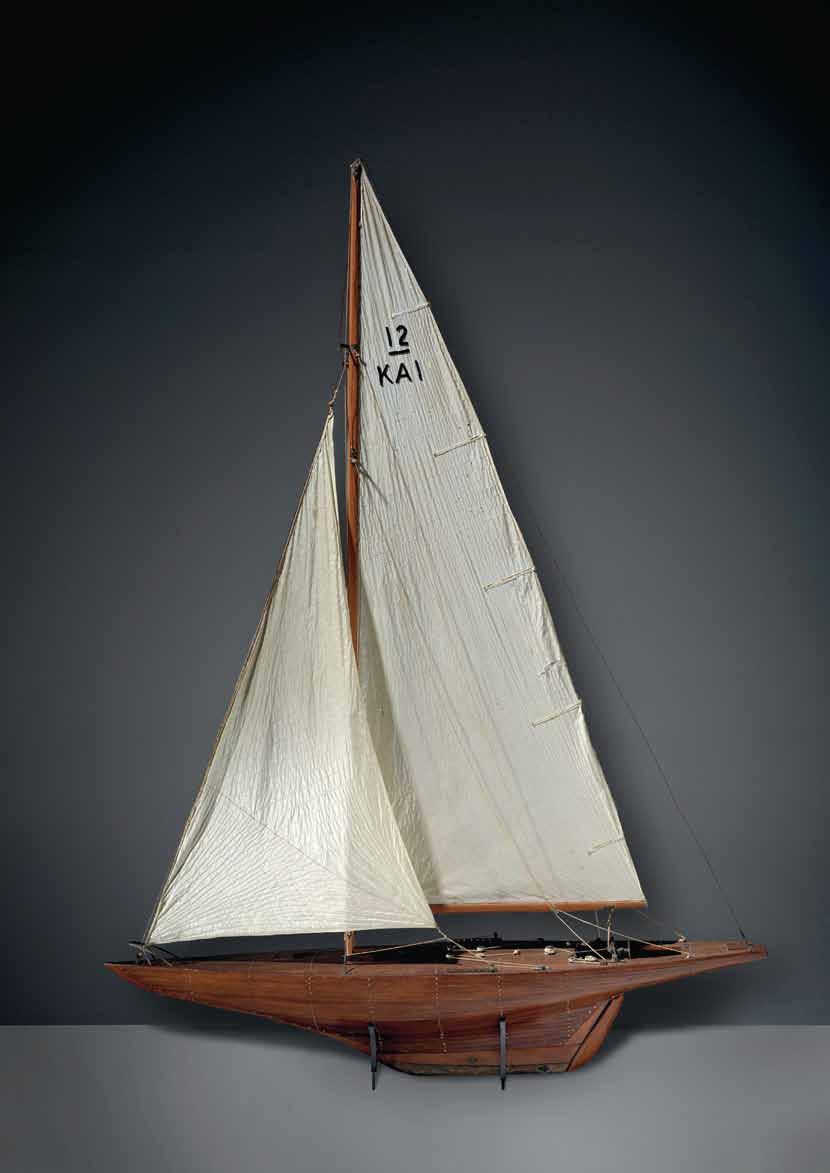
S IGNA l S 101 DECEMBER 2012 TO FEBR u AR y 2013 54
Collections
www.anmm.gov.au/donate Do you have something that would make a valuable addition to the National Maritime Collection? Call a curator or check online.
Our first America’s Cup
Objects in the collection recall Australia’s first challenge for the America’s Cup exactly 50 years ago, by the majestic 12-Metre yacht Gretel, designed by Alan Payne for the newspaper magnate Sir Frank Packer. Jeffrey Mellefont relates the events of a very different time in our yachting history.
This spring it was half a century since Australia’s first challenge for what was once considered to be yachting’s Holy Grail, the America’s Cup. These items from our collection relate to the first-ever international 12-Metre class yacht built in Australia: Gretel, designed by Australian Alan Payne for the newspaper magnate Sir Frank Packer. Gretel lost that 1962 challenge off Newport, Rhode Island, USA, but her performance put the Americans on notice. It paved the way for other Australian challenges that would culminate 21 years later in unbolting the prized silver urn – the 100-Guinea Cup AKA the America’s Cup – from its hallowed place in the New York Yacht Club where it had remained for 132 years, and bring it briefly to Australia.
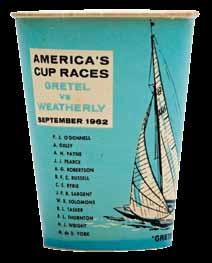
And now it’s nearly 30 years since the Ben Lexcen-designed, winged-keel Australia II, campaigned by Western Australian businessman Alan Bond, won the America’s Cup and made all those names household words across our nation. It was a short-lived victory. The USA reclaimed the cup in 1987, and has since shared this ultimate yachting trophy with New Zealand and – of all countries – landlocked Switzerland. America’s Cup match-racing has long since moved on from 12-Metre yachts –which are now historical oddities – and is today contested in huge craft so high-tech and so stratospherically expensive to campaign that it’s years since a credible Australian challenge was mounted.
The America’s Cup was always yachting at its most elite. It originated in the 1851 victory of the schooner America, representing the New York Yacht Club, in a race around the Isle of Wight against Britain’s finest for a silver trophy offered by the Royal Yacht Club. The win symbolised a victory of the new world over the old, the eclipse of Britain’s maritime might by its brash former colonies. Sometimes called the
‘oldest trophy in international sport’, the America’s Cup was traditionally contested between blue-chip yacht clubs. Until 1962 only Britain and Canada had challenged the Americans, and they had invariably lost.
Sir Frank Packer was a headstrong Sydney newspaper, magazine and television tycoon – father of Kerry, grandfather of James – who thought that since ‘the Poms always failed’, Australia should challenge instead. Postwar America’s Cups had been sailed in the specialised, thoroughbred 12-Metre racing class; there were none in Australia so Packer imported an old 12-Metre called Vim from the USA to gain some experience. Then he engaged the 40-yearold Sydney yacht designer Alan Payne to design his first-ever 12-Metre yacht. These are fractional-rigged sloops defined by a formula of Byzantine complexity, taking into account length, various hull girths, sail area and freeboard to produce boats of around 20 metres in length that weigh up to 30 tonnes. The designer’s challenge is to tweak the allowable parameters to make a faster yacht.
The New York Yacht Club, which had successfully defended its cup for over a century, had in place some quite restrictive rules about the design and construction of challenging yachts, but they allowed Payne to test models of Gretel in the US Stevens Institute towing tank in 1961. It was a concession they would not repeat, after Payne’s boat proved to be an able contender. One of these tank test models is in our collection.
Gretel, named after Sir Frank’s late wife and launched by Dame Pattie Menzies, wife of the Australian Prime Minister, was beautifully built by Lars Halvorsen and Sons of mahogany skins with a laminated spine and frames of Queensland maple. Samples of Gretel’s timber components are also in the museum’s collection.
above: Souvenir waxed paper drink cup produced for the America’s Cup, listing the Australian squad. Made in Australia by lily Cups ltd, Sydney. ANMM Collection, gift from Michael Maxwell
S IGNA l S 101 DECEMBER 2012 TO FEBR u AR y 2013 55
left: Planked scale model of America’s Cup challenger Gretel, David Williams c 1963. Pearwood planking on marine plywood frames, cast lead keel, home-made fittings. ANMM Collection, gift from David Williams. Photographer A Frolows/ANMM

Gretel shocked the Americans with her speed when sheets were eased, and the Australians surfed to victory in the second race
Two of the Halvorsen brothers went to America as crew – Trygve as a reserve helmsman and crew manager, and his brother Magnus as mainsheet hand –under skipper Jock Sturrock. Packer had engaged the leading yachtsmen of the day, a real Who’s Who of postwar Australian yachting.
It was an achievement that echoed all around the yachting world, and was received ecstatically by the public at home in Australia.
above: One of
below: Hull sections and details drawn up by David Williams when making his model of Gretel, based on plans obtained from Alan Payne.
After an intensive and gruelling campaign of trials and practice between Vim and Gretel, the Australian team embarked on the best-of-seven series off Newport in September 1962 before huge spectator fleets that on one occasion included US President John F Kennedy. Still novices to international 12-Metre match racing, the Australians were pitted against the wily and experienced America’s Cup veteran Emil ‘Bus’ Mosbacher in the state-of-the-art Weatherly. The Americans won all the windward duels, though Gretel’s innovative cross-linked sheet winches forced them to work furiously to do so. But Gretel shocked them with her speed when sheets were eased, surfing to the Australians’ sole win in the second race in strong downwind conditions.

The unexpected popular appeal of this distant, ‘silvertail’ yachting contest was due in large part to its coverage by an Australian newspaperman and yachting reporter, Lou d’Alpuget, who helped to create Gretel fever in Australia by turning the event into a heroic battle of biblical, David-and-Goliath proportions: the underdog Aussies versus the patrician Yankees. Although he worked for Packer’s opposition, the Fairfax daily The Sun, d’Alpuget took leave to cover the event in the USA, broadcasting to the Australiawide Macquarie radio network and reporting to the Fairfax papers to satisfy the unexpected public interest. His passion and understanding of the complexities and nuances of ‘cut-throat, split-second match racing’, and his ability to communicate them, gave the contest meaning for wide new audiences.
This laid a foundation of popular interest in future Australian challenges for the America’s Cup after Packer, his crew and Gretel returned home. They had ‘established Australia in future Cup contests as a most dangerous challenger to whom no quarter should be given [by] the New York Yacht Club,’ as d’Alpuget wrote in his definitive history Yachting in Australia (Collins 1986 2nd ed). Of the designer of Australia’s first 12-Metre yacht, d’Alpuget wrote: ‘Payne had innate modesty and a capacity for critical examination of every part of the great racing machine he had created. Many of his adaptations were adopted world wide.’
Archival material related to the 1962 challenge is held in his collection of books and papers donated to the museum by Lou d’Alpuget in 1990. The amateur model of Gretel shown on these pages was built in 1963 by architect David Williams from plans he purchased from designer Alan Payne. Finding the scale of Payne’s model plans too small, Williams produced his own pencil drawings on tracing paper. The model was sailed at Narrabeen Lakes in 1963 and later displayed in the family home at St Ives.
five tank test models of Gretel built by Trevor Gowland in 1960, designer Alan Payne, constructed of sugar pine. ANMM Collection, gift from Max Press
S IGNA l S 101 DECEMBER 2012 TO FEBR u AR y 2013 56
ANMM Collection, gift from David Williams






T 02 9298 3777 • E venues@anmm.gov.au • www.anmm.gov.au CORPORATE & PRIVATE EVENTS Cocktails Dinners Weddings Conferences 6363 SBS for ANMM QUARTERLY_FINAL.indd 1 23/04/12 12:29 PM S IGNA l S 101 DECEMBER 2012 TO FEBR u AR y 2013 57
Imperialism’s POWs
Aboriginal Convicts – Australian, Khoisan and Maori Exiles
By Kristyn Harman.
Published by NewSouth Publishing, 2012. Paperback, illustrations, index 298 pp ISBN 978 174223 323 9 RRP $39.90

Britain transported thousands of convicts to our shores between 1788 and 1850. This is brilliantly documented in the recently deceased Robert Hughes’ classic 1987 work, The Fatal Shore, which is still available today published by Vintage. He wrote, ‘Now this coast was to witness a new colonial experiment, never tried before, not repeated since. An unexplored continent would become a jail.’ Hughes was ahead of his time in documenting the effects of the ‘white invasion’ on Aboriginal people’s existence, but we know much less about Aboriginal convicts who were transported across seas within Australia, to Van Diemen’s Land and Norfolk Island.
Now this has been rectified by Tasmanian historian Kristyn Harman in her new book Aboriginal Convicts She uses shipping records, old newspapers, court records, biographies, correspondence, diaries, journals and letters of judges and governors to tell her absorbing story. Her research reveals that the ‘Australian penal colonies were much more ethnically diverse than most people realise’. There were convicts from all over the world, including Barbados, India, Canada, China, Denmark, Egypt, France, Gibraltar, Hawaii, Iraq, Italy and Jamaica.
Hartman estimates that 130 nativeborn convicts were transported from three British-settler colonies: New South Wales, the Cape Colony in southern Africa and New Zealand.
Australian Aborigines
who fought back… South African Khoisan cattle herders who rebelled… Maoris who had been involved in the
Lower Hutt War
known as the Lower Hutt War. They were arrested and sent to Van Diemen’s Land as a punitive example to others.
The author writes: ‘Despite most Australian Aborigine and Maori men being taken prisoner within a context of frontier warfare, they were not treated as prisoners of war. Their actions were criminalised and they were dealt with either by the government, through the criminal courts or military tribunals established by the colonialists.’ Because of language barriers, these trials were often described as ‘farcical’. Aboriginal prisoners were given harsh punishments and many never returned to their homelands.
Port
Australian Aborigines who fought back in frontier wars were arrested and sent to Van Diemen’s Land, Norfolk Island and the convict prison on Cockatoo Island on Sydney Harbour, from the mid 1830s to the mid 1860s. As well, South African Khoisan cattle herders who rebelled against the white settlers were transported to Australia from 1820 to 1850. In New Zealand, despite the signing of the Treaty of Waitangi in 1840, some Maori warriors ‘did not see the Treaty as providing the settlers with unlimited access to Maori land’. In the southern region of the North Island a small number took up arms against the settlers in the mid 1840s in what became
The book opens with detailed maps setting the geographical context of the penal colonies in Australia, as well as the Cape Colony and New Zealand. The author then focuses on Bull Dog and Musquito, two frontier warriors of the Hawkesbury District of NSW, who were sent to Norfolk Island in 1805.
‘They spent more than seven years relegated to the lowest ranks of the convicts, labouring as assistants to a charcoal burner,’ writes Harman. In 1812 Bull Dog was returned to his wife at Port Jackson, while in 1813 Musquito was transported to Van Diemen’s Land on the Minstrel II There, Danish convict Jorgen Jorgenson reported, ‘the Aboriginal convict was assigned as a stock-keeper to farmer Edward Kimberly of Antill’s Ponds’.
Readings
clockwise from above:
Portrait of Musquito, National library of Australia
Etablissement penitentiaire de Port Arthur, Terre de Van-Diemen, engraving, Paris 1854. National library of Australia
S IGNA l S 101 DECEMBER 2012 TO FEBR u AR y 2013 58
Arthur, VDL by John Skinner Prout, Allport library and Museum of Fine Arts, Tasmanian Archive and Heritage Office
Back in Sydney there were more arrests as relations between the government and Aborigines worsened due to skirmishes over land. Governor Macquarie wrote of a disturbing change in the ‘disposition’ of ‘the Natives’. They began to take ‘a portion of the maize and other grains’ from the settlers, just as it was ready to harvest. Some would also pay back killings of their people by spearing white men. Macquarie’s response was to order his military leaders to inflict ‘exemplary punishment’ on ‘which of the guilty Natives as you may be able to take alive’.
In 1816 an Aboriginal man recorded as Duall, who lived on the outskirts of Sydney, was arrested and charged with murdering a white settler as payback for the killing of members of his own family. He was sentenced to hang, but was instead transported to Tasmania on board the brig Kangaroo. Records show that Duall, along with the prisoner Musquito, was helping to track Tasmanian bushrangers in 1818. Duall was sent back to NSW on the Sindbad in 1819. Harman writes, ‘Duall went on to have a distinguished career as an interpreter and guide to numerous exploratory expeditions’.
But there was no repatriation for Musquito, who was a victim of Governor Macquarie’s policy to get tough on Aboriginal prisoners. In 1824 Musquito was reported to have speared a man, and in retaliation was wounded by gunshot. He was tried and hanged, despite outrage by some about the ‘mere mockery of justice, placing warriors on their trial for murder, when they were only defending themselves from the attacks of the men who were about to become judges (jurors) in their own cause’.
The fate of other Aboriginal convicts such as Jackey was even more extreme. In the Newcastle region Jackey was seen to throw a spear at a convict servant, which was thought not to be a serious injury until the man died some time later. Jackey was tried and found guilty, and when the ship William IV left Newcastle for Sydney in 1834, he was naked and kept on deck in leg irons for the entire journey. Upon arrival it was noted ‘that his legs were badly lacerated and his health clearly impaired’.
The Sydney Monitor declared that his condition reflected badly on the police.
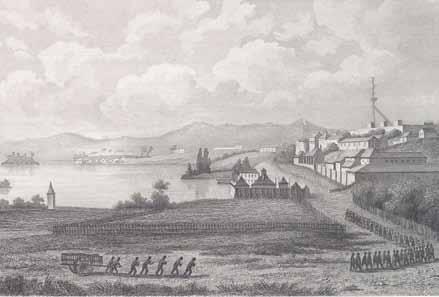

He was transported to Van Diemen’s Land for the term of his natural life, and a month after his arrival he was dead. Deaths in custody became a normal part of Aboriginal transportation.
The arrival of South Africans and Maoris into our penal system and their inhuman treatment created further outrage in some quarters. The transportation of both groups came to an end after edicts from London and New Zealand caused a change of heart… although in her final chapter Kristyn Harman notes: ‘At key sites where Aboriginal convicts lived
and laboured in captivity, including Port Arthur and Cockatoo Island, there is currently no interpretative information acknowledging or commemorating their presence’.
There is certainly much to learn from her thought-provoking book, with its passionate and eloquent text and colour plates to enrich her work.
Margaret Smith is a Sydney writer and filmmaker. Her latest film North of Capricorn tells of Australia’s Asia-Pacific histories.
S IGNA l S 101 DECEMBER 2012 TO FEBR u AR y 2013 59
A world wonder on our doorstep
The Great Barrier Reef –A journey through the world’s greatest natural wonder
By len Zell; a BBC Earth production
Published by Murdoch Books Australia, Millers Point, Sydney, 2012
Hardcover, colour photos, colour illustrations, separate fold-out colour map 250 pp ISBN-13: 978 1 7433 6179 5 RRP $59.95
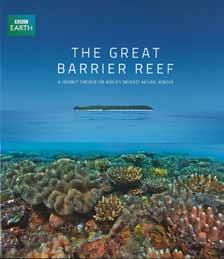
‘If you’re lucky enough to experience a whole 24-hour period on the reef – be it underwater, walking the reefs or snorkelling – your life will be changed forever,’ says the author of this magnificent new coffee table book. ‘As you discover more and your connection to the reef deepens, you’ll understand why these ecosystems are so special and need our greatest efforts to ensure their survival.’
My colleagues in the underwater archaeology program here at the Australian National Maritime Museum have certainly been lucky enough to spend even more time on the Great Barrier Reef, in the course of several expeditions we’ve made in recent years searching for colonial shipwrecks with our great friends and supporters the Silentworld Foundation. The expeditions have been reported in detail in previous issues of Signals, and there’s another one in the offing in 2013.
The next best thing to being there, though, must be Len Zell’s beautifully illustrated, concisely and accurately written book, The Great Barrier Reef: A journey through the world’s greatest natural wonder. It’s dedicated to Isobel Bennett, arguably one of Australia’s leading authorities on intertidal marine organisms. She was the author of the first definitive book on this extraordinary feature of our natural environment, The Great Barrier Reef, published by Lansdowne Press, Sydney, in 1971.
The book being reviewed here was produced in partnership with the BBC and its television series The Great Barrier Reef. Like the series, this book takes you on a visual journey – without exaggeration you could call it a visual feast – of the greatest reef system on Earth. Its extremely apt name captures both its unequalled extent, and its geographical and historical role as a protector of our coasts and a hindrance to navigation. Interestingly, the author has extended the concept ‘Great Barrier Reef’ beyond that used by the Great Barrier Reef Marine Park Authority (known as GBRMPA or
‘gabroompa’); he prefers to use a more holistic definition of the reef that takes into account not only the central region of the reef, from Mackay to Innisfail in Queensland, but also the extreme northern and southern ends.
Using this wider-ranging definition, the Great Barrier Reef covered by this book is a 2,300-kilometre-long natural wonder. It’s a massive and complex ecosystem made up of more than 3,000 fringing, platform, lagoonal, ribbon, deltaic and linear coral reefs. Zell provides nice and concise definitions of what reef is what. As well there are about 650 islands, 350 sand cays and the various deeps and shallows (waters) in between. It stretches from Lady Elliot Island in the south, off Bundaberg in south-central Queensland, north to Bramble Cay in the Torres Strait, and from the high-water mark on the Queensland coast right out to the eastern edge of the continental shelf.
The book has been clearly laid out in seven chapters: ‘The geography of the reef’; ‘Habitats of the Great Barrier Reef’; ‘A day in the life of the reef’; ‘Meeting the plants and animals of the reef’; ‘Flora and fauna of the reef’; ‘Experiencing the reef’; and ‘Human impact on the reef’.
Zell provides authoritative information on all of these, with advice on how best to ethically visit the reef and all its wonders with the minimum human impact. The book also comes with a useful and easyto-understand glossary, bibliography, index and a useful general information page. If you purchase the online version you get the bonus of even richer content including full-colour photo galleries, video footage and other interactive elements.
Although I found the chapter headings a little imprecise at times and the verbal flow from one chapter to the next a little disjointed, each chapter is well researched and written. You would expect no less from Zell, who not only has two types of marine coral named after him, but has published a number of field and marine guides including specialist publications on the Rowley Shoals and the Ningaloo Coral Reefs in Western Australia. He is currently an adjunct senior lecturer in
Readings
opposite, top: Saltwater or estuarine crocodiles are adapted to both freshwater and saltwater.
centre: Clownfish or anemonefish from the subfamily Amphiprioninae in the family Pomacentridae.
S IGNA l S 101 DECEMBER 2012 TO FEBR u AR y 2013 60
below: The feathery spiral tentacles of Christmastree worms capture prey.
marine and tropical biology at James Cook University in Townsville, Queensland.
But don’t let his background put you off, because there is nothing dryly academic about this book. It is written with a real passion for his subject and shows not only Zell’s depth of knowledge – acquired from dozens of research expeditions to the Great Barrier Reef – and his love for this incredible series of reef ecosystems that have evolved over thousands of years, but also his concerns as the reef is impacted on by both natural and human or manufactured change. These include cyclones, land clearing, agriculture, mining and dredging operations as well as over-fishing, global warming, coral bleaching and acidification of the oceans, which weakens the skeleton of the living coral.
This stress on the various ecosystems that make up the Great Barrier Reef is well illustrated in his chapter ‘Meeting the plants and animals’. Here the author not only discusses what you would expect to see in a book on the Great Barrier Reef - all the various types of corals and fish that make up and inhabit the reef – but also the lesser-known but no less important flora and fauna.
What a spectacular cast we are introduced to. There are the red, green and blue algae, which in their coralline form assist in forming the matrix of the reef. The flowering plants such as
As you discover more and your connection to the reef deepens, you’ll understand why these ecosystems are so special and need our greatest efforts to ensure their survival

mangroves and sea grasses which help stabilise some of the reef’s islands, act as toxinfilters and fish nurseries, and help protect the shoreline from cyclone and storm. Invertebrates such as the Copepods, Ctenophores and Salps provide a constant source of food for the sea dwellers of the ocean floors. Add to those the sponges, worms, crustaceans, molluscs, echinoderms (sea urchins, feather stars, sea stars etc.) sea cucumbers, sea squirts, reptiles and sea birds, and you’ll quickly realise what an amazing living tapestry this is. While this book is undeniably an incredible source of information on the reef, it is the vivid and memorable images by great underwater photographers such as Gary Bell, Troy Mayne, Bob Halstead, David Wachenfeld, James Brickell and the author Len Zell that really make this book such a great desktop guide to one of the world’s greatest natural features. Depending upon how you’re travelling, you might not want to take it with you when you go to the Great Barrier Reef yourself, since it weighs close to two kilograms. Perhaps you’ll just take the extensive map that’s packaged separately inside the front cover. But with its very handsome and lavish format you’ll certainly want to give it pride of place on your coffee table.
Kieran Hosty, manager maritime archaeology

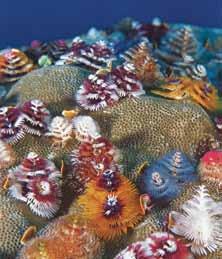
S IGNA l S 101 DECEMBER 2012 TO FEBR u AR y 2013 61
Old weather: citizen scientists search ship logs
Old Weather website
A Zooniverse project www.oldweather.org
The Old Weather website enlists people like YOU to transcribe the handwritten daily logs of forgotten historical voyages – and some famous ones as well – to provide a worldwide source of weather data from the past that will help scientists to improve climate model predictions.
When 19th- and 20th-century ships officers learned their trade, filling in the logbook hour by hour was an important part of the ship’s business, and falsifying a log was a criminal offence. As ships crisscrossed the oceans they left ‘tracks’ of measurements including barometric pressure, wind speed and direction, accurately noted by time and location. Wherever ship logs are preserved, so too is all this data. There are, for example, around 250,000 logbooks in US archives.
In order for scientists to understand what the climate will do in the future, they need to understand what the weather was doing in the past, all over the world. Some places, like the Arctic, are very sensitive to climate variability. In September 2012 there was less Arctic sea-ice recorded than for any other year for which there are satellite records. But these only go back to 1979. Collating data from ships’ logs is a way to go beyond 30 years to gather more information about historical weather variability and better understand how the Arctic climate behaves over the longer term.
In October a new fleet was launched into cyberspace. In fact it was a very old fleet of United States Navy, Revenue & Coast Guard and Coast Survey vessels that voyaged Arctic waters from the 1850s to the early 1900s. Their daily logs and journals are held in the US National Archives in Washington DC. But for scientists to use the data they contain, they need to be transcribed. Most are handwritten, in cursive style or shorthand that cannot be recognised by computers. That’s where you come in!
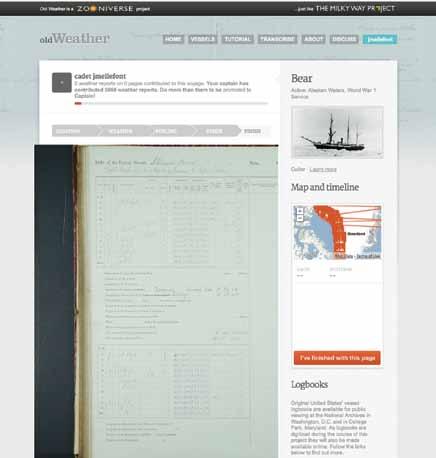
The records have been scanned and placed online as part of the Old Weather Project by Zooniverse, a suite of projects produced by the organisation Citizen Science Alliance that partners volunteers with scientists and researchers. Around the globe, people sitting at their computers are entering the old weather readings into a database to provide scientists with a longer picture of weather patterns and extremes. Digitising these records also builds a wonderful new online archive that brings to light some hitherto unknown voyaging stories.
The Old Weather project is not just useful and interesting – it’s fun. Volunteers can choose a historic gunboat, cutter, steamer, or auxiliary vessel, and join its crew. As you transcribe the log, the vessel moves along its voyage chart. You can rise in rank as you transcribe more of the voyage log. So to gain
a first-hand sense of the dangers of sailing through the ice, the daring rescue by USRC Bear, fire and ice aboard USS Rodgers, or the so-far-unknown adventures of other ships, get along to www.oldweather.org and sign on.
An earlier Old Weather project transcribed the logs of early 20th-century British Navy vessels around the world. Other recent citizen-science projects include ones on bats, starfish and cyclones. See zooniverse.org or www.citizensciencealliance.org.
Dr Stephen Gapps, curator
above: Sail to the Arctic on a uS Coast Guard cutter.
Viewings
S IGNA l S 101 DECEMBER 2012 TO FEBR u AR y 2013 62
A voyager we should remember
Bungaree – The First Australian Mosman Art Gallery
1 September–25 November 2012
Curated by Djon Mundine OAM
Much has been made of Matthew Flinders’ 1801–03 circumnavigation of Australia. There is even a statue of his voyaging cat Trim, alongside Flinders himself outside the State Library of NSW. Yet shamefully, much less has been made of the guide and interpreter who also accompanied Flinders, who was critical to the success of the voyage, and who has full claims to being the first Australian to circumnavigate the country: the Indigenous man Bungaree of Broken Bay.
Recent historical scholarship, such as Keith Vincent Smith’s work on early colonial Indigenous voyagers and mariners, has gone some way towards redressing this imbalance. The exhibition Bungaree – The First Australian furthered this work, but importantly, added a powerful Aboriginal interpretation, voice and presence.
Curator Djon Mundine brings together 15 contemporary Aboriginal artists. Some, such as Fiona Foley and Gordon Syron, are well-known, others less so. All had previously created works that explore the resonance of dispossession. Yet interpreting the historical figure of Bungaree is not so much about understanding resistance to invasion and colonisation, but about how this man came to terms with a monumental shift in power in his land, and how he could forge a new identity inside systems of simultaneous control and opportunity – a complex identity that retained Aboriginality, but could also tread the deck of the sloop HMS Investigator with Captain Flinders.
The artists’ responses are wonderful and varied. Warwick Keen’s digital print The many faces of Bungaree explores his ‘many hats’ as leader, sailor and mediator. Adam Hill’s sculptural metaphor has Bungaree’s presence fading from history as if he moved into the ocean, in His footsteps ended at land’s edge

Leanne Tobin’s installation Clothes don’t always maketh the man is about Bungaree bridging two worlds. The 2012 NSW Parliament’s Aboriginal Art Award winner Jason Wing’s works in Perspex, Used by and Best before, bring together past and present in a mash-up of the humble plastic bread clip and the ignominious breast plate.
Bungaree was known as the ‘Chief of the Broken Bay Aborigines’ by the gorget or metal breastplate he wore around his neck, given to him by Governor Macquarie in 1815. Bungaree’s connection to the north shore of Sydney Harbour – and hence Mosman Art Gallery’s interest in him – was enshrined by Macquarie’s land grant to Bungaree and his family at Georges Head, Middle Harbour. It was from here that Bungaree became an identity in Sydney as he was rowed out into the harbour by his wives to ‘welcome’ visiting ships. And it was here that the artists in this exhibition held workshops together to explore Bungaree’s survival story and its legacies.
Through some fascinating contemporary Aboriginal art works Bungaree – The first Australian tells an often neglected story of Aboriginal peoples’ maritime histories, skills and survival.
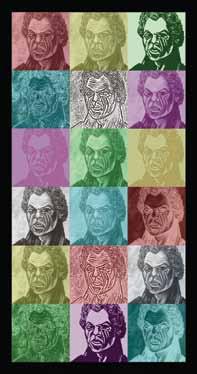
Viewings
top to bottom: Bungaree, Gordon Syron 2012, oil on canvas
S IGNA l S 101 DECEMBER 2012 TO FEBR u AR y 2013 63
The many faces of Bungaree, Warwick Keen 2012, digital print on metallic paper Dr Stephen Gapps, curator
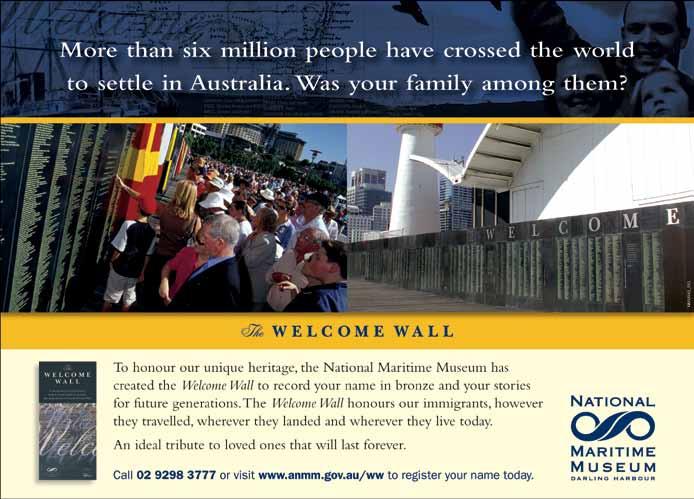

T 02 9298 3777 • E info@anmm.gov.au • www.anmm.gov.au YOTS CAFE AND THE KIOSK Barista-made coffee Cakes and muffins Fish & chips Wines, beers and drinks Visit us today!! S IGNA l S 101 DECEMBER 2012 TO FEBR u AR y 2013 64
A reader corrects a historic date
Dear editor of Signals
I would like to draw your attention to a caption error in Signals No 99. On page 38 there is a picture of the tug Hero incorrectly captioned as towing the fourmasted barque Pamir out of Sydney Harbour in November 1945. In fact, this photograph was taken on 14 April 1947, Pamir having spent over three months in Sydney. Port arrivals and departure records will confirm this. This date is also corroborated in The Pamir, Under the New Zealand Flag by Jack Churchhouse and Viermastbark Pamir by Karl Otto Dummer. On 10 November 1945 it was the four-masted barque Lawhill that departed from Port Jackson and no doubt this has caused the confusion. I witnessed both these events and refer to them in my book Windjammers – The Final Story
Yours sincerely, Robert Carter
Due to lack of space in the last issue of Signals I was unable to publish this instructive letter from reader Robert Carter oam, an accomplished maritime artist and author of a handsome, self-illustrated book Windjammers – The Final Story. Reproduced here is the framed Max Dupain photograph in the museum collection to which the caption in Signals No 99 referred, complete with the date inscribed on it. It came to us as part of a donation from Brambles Australia (which took over Fenwick & Co, the earlier owner of the tug Hero, in 1973). Stamped on the reverse of the frame is ‘Buster
J Browne / Box 317, PO Crows Nest NSW Australia 2065’, which doesn’t tell us who inscribed ‘Nov. 1945’ but shows there was some more history to the life of the framed photo. I thanked Mr Carter and invited him to comment further, and here is what he wrote.
Jeffrey Mellefont, editor
Buster Browne was a well-known character around the Sydney waterfront and a renowned yachtsman. I knew him well before his death about 10 years ago. He had a large collection of photographs. I think it was he who later framed and captioned this photo ‘Pamir Nov. 1945’; no doubt he saw both Lawhill and Pamir
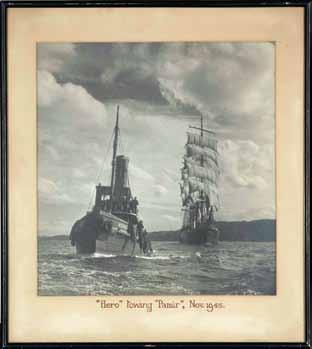
when they left port and somehow confused them. As the departure of Pamir was widely documented in the press I doubt if photographer Max Dupain would have made that mistake.
The following large sailing ships departed from Port Jackson, just prior to, during and after WW2, and are the only possible ships that could be in this photograph. The four-masted auxiliary barque Magdalene Vinnen departed March 1935. Barque Kaiulani arrived 13 October 1942, was bought by US Army Small Ships, rigged down and towed to Milne Bay as a store ship. The four-masted barque Lawhill departed September 1944, and again in November 1945. In April the 1947 four-masted-barque Pamir departed.
Each of these vessels was quite distinctive and the points of identification are as follows. Magdalene Vinnen was painted pale grey and had a long poop that extended for’ard of the main mast. Kaiulani was towed to sea rigged down with only the lower masts remaining. Lawhill was bald headed, ie she had no royal yards – only five yards per mast. Her bowsprit pierced the deck planking. Pamir’s main distinguishing features in this photograph are the six yards per mast
and the bowsprit nesting into what the Germans called the ‘beak’.
Pamir was virtually indistinguishable from her sisters and near sisters built for F Laeisz by Tecklenborg and Blohm and Voss, but it is possible to identify minute features that changed during their lifetimes. For example the lead of buntlines and clew lines often changed under different owners, masters or sailmakers. There are so many photographs of Pamir taken during her ownership by the Union Steamship Company of New Zealand during WW2 that these same features can be seen from photograph to photograph, most of which show her name painted on her bows quite clearly.
I have made a lifelong study of the last commercial sailing ships, starting when I witnessed the above mentioned events as a 15 year old. While I worked as an engineer I developed an interest in marine painting which prompted an almost forensic interest in the structure and history of the last sailing ships. This culminated in my founding of the Australian Society of Marine Artists and the publishing of my book.
Robert Carter
Currents
S IGNA l S 101 DECEMBER 2012 TO FEBR u AR y 2013 65
Currents Enter for $4,000 maritime history prizes
Writers, publishers and readers of maritime history are all invited to nominate works for maritime history prizes totalling $4,000, sponsored jointly by the Australian Association for Maritime History (AAMH) and the Australian National Maritime Museum (ANMM). Nominations will close on 31 March 2013.
The 2013 Frank Broeze Memorial Maritime History Prize of $3,500 will be awarded for a book on any aspect of maritime history relating to or impacting on Australia, written or co-authored by an Australian citizen or permanent resident, and published between 1 January 2011 and 31 December 2012. The prize is open to Australian authors or co-authors of a book-length monograph, or a compilation of their own works, published in print or as an e-book. Edited collections of essays by multiple contributors are not eligible.
How to nominate a book
Nominations for both categories should include photocopies of the dust-jacket or end covers, title page, imprint and contents pages (including an ISBN number), plus a short synopsis of the book (as a guide, 300 words). Copies of any published book reviews of the nominated publication should also be included. The publication itself may also be submitted (recommended for the Australian Community Maritime History Prize).
Following an initial assessment of nominations, shortlisted authors or publishers will be invited to submit three copies of their publication. These will be judged by a committee consisting of the president of the Australian Association for Maritime History, the director of the Australian National Maritime Museum, and one independent nominee. Nominations close on 31 March 2013 and should be sent to Jeffrey Mellefont, publications manager Australian National Maritime Museum, 2 Murray Street Sydney NSW 2000 email publications@anmm.gov.au.
The 2013 Australian Community Maritime History Prize of $500 will be awarded to a regional or local museum or historical society for a publication of any sort (for example a book, booklet, educational resource kit, CD, DVD or other media) relating to an aspect of maritime history of that region or community, and published between 1 January 2011 and 31 December 2012.
The prize is named in honour of the late Professor Frank Broeze (1945–2001) of the University of Western Australia, whose life work reflected his belief that the sea and maritime influences have been more central to the shaping of Australia, its people and its culture than has commonly been believed.
Professor Broeze was a founding member of the Australian Association for Maritime History, inaugural editor of its scholarly journal The Great Circle, and introduced Australia’s first university course on maritime history. He was the author of many works on Australian maritime history, including the landmark Island Nation (1997), helping to redefine the field in broader terms than ships, sailors and sea power. He reached into economic, business, social and urban histories to make maritime history truly multidisciplinary.
This will be the seventh joint prize for a maritime history book awarded by the two organisations. The first was won by Marsden Hordern for Mariners are Warned (Melbourne University Press, 1989), a study of the explorer of Australian coasts John Lort Stokes.
Winner of the 2011 Maritime History Book Prize was Iain McCalman for his comprehensively titled Darwin’s Armada – How four voyagers to Australasia won the battle for evolution and changed the world (Penguin Australia, 2009).
The inaugural 2011 Australian Community Maritime History Prize was awarded to the Lady Denman Heritage Complex, Huskisson, for its selfpublished local history by Peter Crabb, titled Shipping and Shipwrecks – Stories from Jervis Bay and its Neighbouring Coasts (2010).
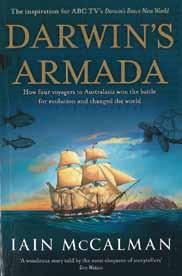
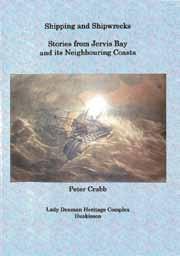
above:
top: Winner of the 2011 Frank Broeze Maritime History Book Prize.
S IGNA l S 101 DECEMBER 2012 TO FEBR u AR y 2013 66
Winner of the 2011 Australian Community Maritime History Prize
150 years of ‘Water Rats’
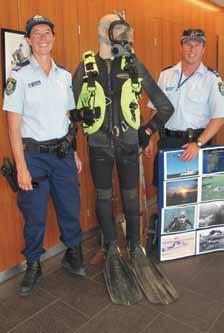
The NSW Police Force’s Marine Area Command celebrated 150 years with a family day at the museum in November. Along with its off-shore patrol and dive boat Nemesis on display for visitors
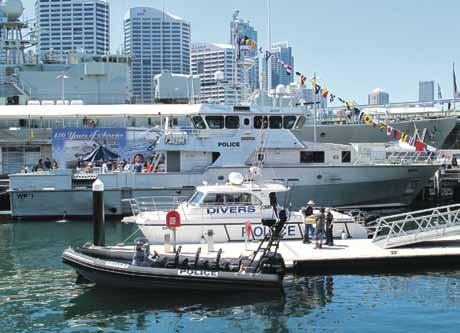
to climb aboard, the day included demonstrations of the Pol Air helicopter, dive rescue, and the Police Rescue and Bomb Disposal Unit abseiling off the museum’s Cape Bowling Green Lighthouse. Mounted Police and the Dog Squad were popular with visitors, ‘…particularly the 14-week-old black German shepherds licking visitors to death,’ said the museum’s head of Visitor Experience and Commercial Services division, Lisha Mulqueeny.
The Marine Area Command traces its origins back to Governor Arthur Phillip’s Row Boat Guard, before the Water Police was established in 1840 by a special Act of Parliament. It was first based at Garden Island but moved to Watsons Bay where it was easier to stop stowaways on sailing ships anchored there awaiting favourable winds. The Water Police merged with the NSW Police in 1862.
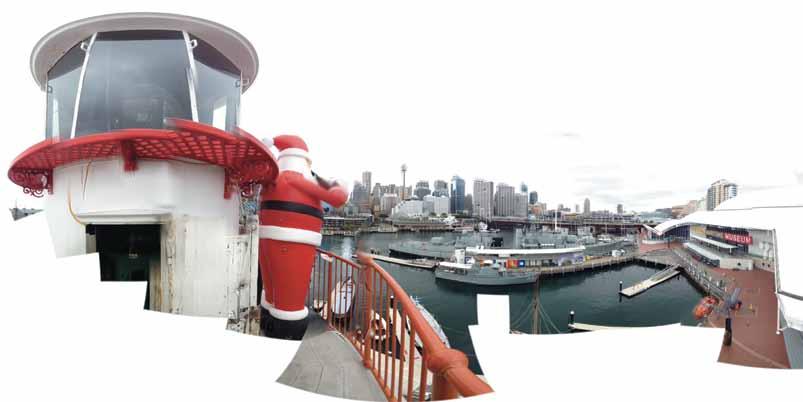
Photographer J Mellefont/ANMM
below: Getting into the festive season with the Sydney Harbour Foreshore Authority had Santas popping up in unexpected places, as part of the tourist promotion SantaFest 2012. Photographer Robert Waddell, The Inflatable Event Company
Currents
S IGNA l S 101 DECEMBER 2012 TO FEBR u AR y 2013 67
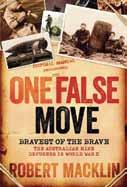

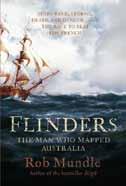
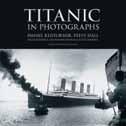
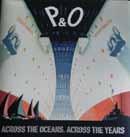
One False Move
The gripping untold story of a small band of Australian and British soldiers who specialised in defusing mines during World War 2. The task required incredible bravery and a surgeon’s precision, as the Nazis often booby trapped the detonators. Both sides played a deadly game of bluff as they tried to outwit each other.
$37.00 Members $33.30
The Great Race – The Race Between the English and the French to Complete the Map of Australia
Written from diaries and other first-hand accounts, this is the story of Englishman Matthew Flinders and Frenchman Nicolas Baudin, whose governments set them the same task: to discover whether the west and east coasts of the uncharted great south land, 4,000 kilometres apart, were part of the same island.
$36.00 Members $32.40
Flinders – The Man who Mapped Australia
Famous for his meticulous charts and superb navigational skills, Flinders was a superb sailor and a towering figure in Australian history. He was the first person to circumnavigate the country – in a boat hardly seaworthy – and to chart its coastline, and the man who coined the name Australia.
$49.95 Members $44.96
Titanic in Photographs
The name Titanic is synonymous with catastrophe. She was wrecked on her maiden voyage with the loss of some 1,500 lives, in one of history’s greatest maritime disasters. This collection of photographs tells her full story. Normally $65.00 Special Members price $45.00
P&O Across the Ocean
A nostalgic glance astern at the glory days at sea and on shore. Drawing on the archives of P&O Heritage, it’s a curator’s tour of the company’s art collection which dates to P&O’s foundation in 1837.
An engaging and richly illustrated homage to one of most famous companies afloat, in its 175th anniversary year.
$99.95 Members $89.96
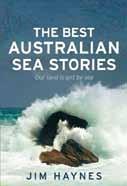


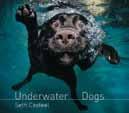

Best Australian Sea Stories
Australia’s history and national character have been defined by our island continent’s isolation and its reliance on the sea. Full of fascinating history, drama and surprise, this book traces Australia’s maritime history, from first-hand accounts of voyages in the 18th and 19th centuries to modern accounts of refugee ‘boat people’.
$32.00 Members $28.80
Australia’s Navy in Vietnam
Between 1965 and 1972, elements of the Royal Australian Navy undertook continuous service in Vietnam at sea, ashore and in the air. This unique volume looks at the largely forgotten naval aspects of Australia’s involvement in the Vietnam War.
$45.00 Members $40.50
DVD – Captain James Cook (ABC 1987) In 1768, England’s King George III ordered an ambitious expedition to the Pacific Ocean to observe the transit of Venus and explore the legendary southern continent. James Cook, an unknown petty officer, was controversially appointed as commander – and so began a glorious adventure spanning the oceans of the world.
$59.95 Members $53.96
Underwater Dogs
Award-winning pet photographer Seth Casteel’s remarkable rapport with dogs shows, as they swim, dive, fetch or explore under water. Over 80 photos of dogs of every size, shape and breed in a variety of moods – silly, focused, surprised and primal.
$33.00 Members $29.70
Usborne Big Book of Big Ships
A fantastic big book crammed with stats and facts, for ages three and above. young boat enthusiasts will love learning about the biggest ships that ever sailed the seven seas – warships, supertankers, Arctic icebreakers, aircraft carriers, hovercrafts and ocean liners.
$28.95 Members $26.06
S IGNA l S 101 DECEMBER 2012 TO FEBR u AR y 2013 68
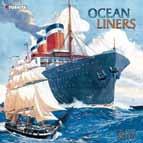




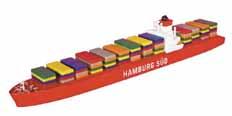
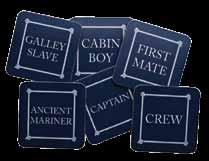
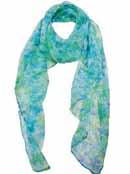
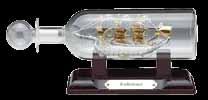




Hand-blown, gilded glass Endeavour in a bottle $39.95 Members $35.96 Model container ship Hamburg Süd 22 cm other lines available $35.00 Members $31.50 Pirate coffee mug, me hearties $18.00 Members $16.20 Ocean liners wall calendar 2013, 12 lovely vintage posters $29.95 Members $26.96 Set of six melamine coasters, nautical terms $35.00 Members $31.50 Buy and browse at our new e-store www.store.anmm.gov.au Hundreds of books something for everyone from key rings to ship models and boating clothes friendly service mail order Members discounts! Phone 02 9298 3698 or fax orders to 02 9298 3675 or email thestore@anmm.gov.au Replica Victorian watch with hand-blown glass dome $139.95 Members $125.96 Pure silk scarf with a Monet-inspired design $19.95 Members $17.96 Boxed ship’s chronometer, a precision marine clock $199.95 Members $179.96 Model cruise ships 18–25 cm (NB these don’t float) Aida $29.95 Members $26.96 QM2 $39.95 Members $35.96 P&O teddy bear in a bag, picnic-ready $39.95 Members $35.96 P&O range: oven mitt $15.00 Members $13.50, linen tea towel $19.95 Members $17.96, also available pot holder $12.00 Members $10.80
Set
of four melamine
coasters,
international code flag designs $27.95 Members 25.16
Australian National Maritime Museum
Open daily except Christmas Day
9.30 am to 5 pm (6 pm in January)
2 Murray Street Sydney NSW 2000 Australia
Phone 02 9298 3777
Fax 02 9298 3780
ANMM council
Chairman Mr Peter Dexter am
Director Mr Kevin Sumption Councillors
Mr Paul Binsted
Mr John Coombs
Rear Admiral T W Barrett am csc ran
Mr Peter Harvie
Ms Robyn Holt
Dr Julia Horne
Mr Shane Simpson am
Ms Eva Skira
Mr Neville Stevens ao
Signals
ISSN 1033-4688
Editor Jeffrey Mellefont
Staff photographer Andrew Frolows
Design and production Austen Kaupe
Printed in Australia by Pegasus Print Group
Editorial and advertising enquiries
Jeffrey Mellefont 02 9298 3647 signals@anmm.gov.au
Deadline mid-January, April, July, October for issues March, June, September, December
Signals back issues
Back issues $4
10 back issues $30
Extra copies of current issue $4.95
Call Matt lee at The Store 02 9298 3698
Material from Signals may be reproduced only with the editor’s permission. The Australian National Maritime Museum is a statutory authority of the Australian Government.
Museum sponsors
Major sponsors
Southern Cross Austereo
Australian Maritime Safety Authority
Nine Entertainment
lloyd’s Register Asia
SBS
Sydney Catchment Authority
Toshiba
Royal Wolf
Project sponsors
APN Outdoor
Australian Museum
Coral Sea Wines
Eye
Silentworld Foundation
Sony universal Home Pictures
Sydney by Sail Taronga Zoo
Foundation sponsor ANZ
Founding patrons
Alcatel Australia
ANl limited
Ansett Airfreight
Bovis lend lease
BP Australia
Bruce & Joy Reid Foundation
Doyle’s Seafood Restaurant
Howard Smith limited
James Hardie Industries
National Australia Bank
PG, TG & MG Kailis
P&O Nedlloyd ltd
Telstra
Wallenius Wilhelmsen logistics
Westpac Banking Corporation
Zim Shipping Australasia
Connect with us online www.anmm.gov.au











































 right: Festive, suntanned crowd in a summery mood on a launch off Nielsen Park, probably in the 1930s. Passing to leeward and identifiable by its sail number A2 is the open sloop Mischief of the Sydney Amateur Sailing Club. All photographs in this article are attributed to William James Hall.
right: Festive, suntanned crowd in a summery mood on a launch off Nielsen Park, probably in the 1930s. Passing to leeward and identifiable by its sail number A2 is the open sloop Mischief of the Sydney Amateur Sailing Club. All photographs in this article are attributed to William James Hall.






















































































































